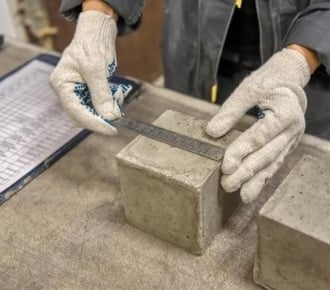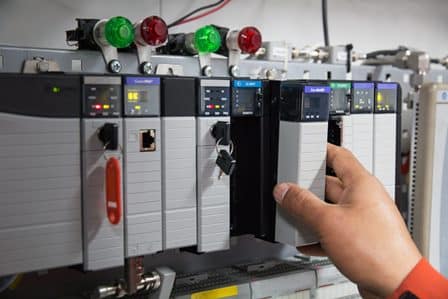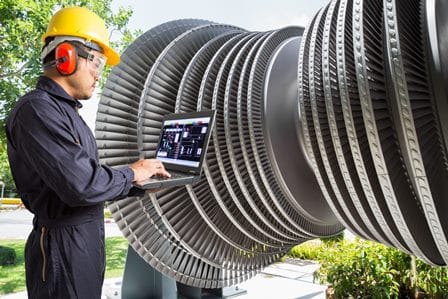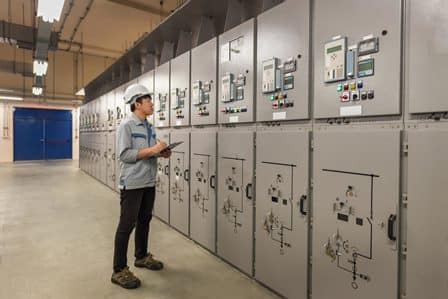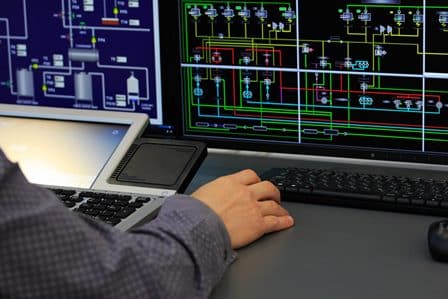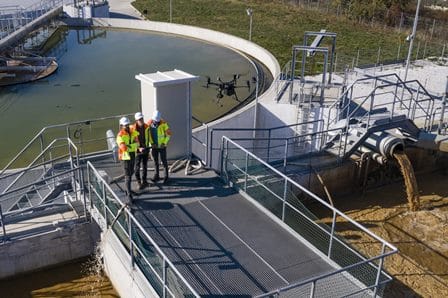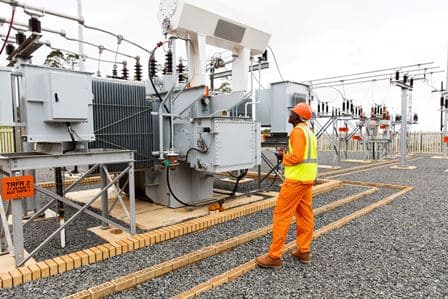52896WA Advanced Diploma of Civil and Structural Engineering (Materials Testing)
Investigation of the properties of construction materials, the principles which…Read moreGraduate Diploma of Engineering (Safety, Risk and Reliability)
The Graduate Diploma of Engineering (Civil: Structural) program covers 8…Read moreProfessional Certificate of Competency in Fundamentals of Electric Vehicles
Learn the fundamentals of building an electric vehicle, the components…Read moreProfessional Certificate of Competency in 5G Technology and Services
Learn 5G network applications and uses, network overview and new…Read moreProfessional Certificate of Competency in Clean Fuel Technology - Ultra Low Sulphur Fuels
Learn the fundamentals of Clean Fuel Technology - Ultra Low…Read moreProfessional Certificate of Competency in Battery Energy Storage and Applications
Through a scientific and practical approach, the Battery Energy Storage…Read more52910WA Graduate Certificate in Hydrogen Engineering and Management
Hydrogen has become a significant player in energy production and…Read moreProfessional Certificate of Competency in Hydrogen Powered Vehicles
This course is designed for engineers and professionals who are…Read more
Practical Electrical Metering, Measurement and Instrument Transformers
THIS BOOK WAS DEVELOPED BY IDC TECHNOLOGIES
WHO ARE WE?
IDC Technologies is internationally acknowledged as the premier provider of practical, technical training for engineers and technicians.
We specialize in the fields of electrical systems, industrial data communications, telecommunications, automation and control, mechanical engineering, chemical and civil engineering, and are continually adding to our portfolio of over 60 different workshops. Our instructors are highly respected in their fields of expertise and in the last ten years have trained over 200,000 engineers, scientists and technicians.
With offices conveniently located worldwide, IDC Technologies has an enthusiastic team of professional engineers, technicians and support staff who are committed to providing the highest level of training and consultancy.
TECHNICAL WORKSHOPS
TRAINING THAT WORKS
We deliver engineering and technology training that will maximize your business goals. In today’s competitive environment, you require training that will help you and your organization to achieve its goals and produce a large return on investment. With our ‘training that works’ objective you and your organization will:
- Get job-related skills that you need to achieve your business goals
- Improve the operation and design of your equipment and plant
- Improve your troubleshooting abilities
- Sharpen your competitive edge
- Boost morale and retain valuable staff
- Save time and money
EXPERT INSTRUCTORS
We search the world for good quality instructors who have three outstanding attributes:
- Expert knowledge and experience – of the course topic
- Superb training abilities – to ensure the know-how is transferred effectively and quickly to you in a practical, hands-on way
- Listening skills – they listen carefully to the needs of the participants and want to ensure that you benefit from the experience.
Each and every instructor is evaluated by the delegates and we assess the presentation after every class to ensure that the instructor stays on track in presenting outstanding courses.
HANDS-ON APPROACH TO TRAINING
All IDC Technologies workshops include practical, hands-on sessions where the delegates are given the opportunity to apply in practice the theory they have learnt.
REFERENCE MATERIALS
A fully illustrated workshop book with hundreds of pages of tables, charts, figures and handy hints, plus considerable reference material is provided FREE of charge to each delegate.
ACCREDITATION AND CONTINUING EDUCATION
Satisfactory completion of all IDC workshops satisfies the requirements of the International Association for Continuing Education and Training for the award of 1.4 Continuing Education Units.
IDC workshops also satisfy criteria for Continuing Professional Development according to the requirements of the Institution of Electrical Engineers and Institution of Measurement and Control in the UK, Institution of Engineers in Australia, Institution of Engineers New Zealand, and others.
CERTIFICATE OF ATTENDANCE
Each delegate receives a Certificate of Attendance documenting their experience.
100% MONEY BACK GUARANTEE
IDC Technologies’ engineers have put considerable time and experience into ensuring that you gain maximum value from each workshop. If by lunchtime on the first day you decide that the workshop is not appropriate for your requirements, please let us know so that we can arrange a 100% refund of your fee.
ONSITE WORKSHOPS
All IDC Technologies Training Workshops are available on an on-site basis, presented at the venue of your choice, saving delegates travel time and expenses, thus providing your company with even greater savings.
OFFICE LOCATIONS
AUSTRALIA • CANADA • INDIA • IRELAND • MALAYSIA • NEW ZEALAND • POLAND • SINGAPORE • SOUTH AFRICA • UNITED KINGDOM • UNITED STATES
idc@idc-online.com www.idc-online.com
Visit our website for FREE Pocket Guides
IDC Technologies produce a set of 6 Pocket Guides used by thousands of engineers and technicians worldwide.
Vol. 1 – ELECTRONICS
Vol. 2 – ELECTRICAL
Vol. 3 – COMMUNICATIONS
Vol. 4 – INSTRUMENTATION
Vol. 5 – FORMULAE & CONVERSIONS
Vol. 6 – INDUSTRIAL AUTOMATION
To download a FREE copy of these internationally best selling pocket guides go to: www.idc-online.com/downloads/
On-Site Training

All IDC Technologies Training Workshops are available on an on-site basis, presented at the venue of your choice, saving delegates travel time and expenses, thus providing your company with even greater savings.
For more information or a FREE detailed proposal contact Kevin Baker by e-mailing:
training@idc-online.com
IDC TECHNOLOGIES
Worldwide Offices
AUSTRALIA
Telephone: 1300 138 522 • Facsimile: 1300 138 533
West Coast Office
1031 Wellington Street, West Perth, WA 6005
PO Box 1093, West Perth, WA 6872
East Coast Office
PO Box 1750, North Sydney, NSW 2059
CANADA
Toll Free Telephone: 1800 324 4244 • Toll Free Facsimile: 1800 434 4045
Suite 402, 814 Richards Street, Vancouver, NC V6B 3A7
INDIA
Telephone : +91 444 208 9353
35 4th Street, Kumaran Colony, Vadapalani, Chennai 600026
IRELAND
Telephone : +353 1 473 3190 • Facsimile: +353 1 473 3191
Caoran, Baile na hAbhann, Co. Galway
MALAYSIA
Telephone: +60 3 5192 3800 • Facsimile: +60 3 5192 3801
26 Jalan Kota Raja E27/E, Hicom Town Center
Seksyen 27, 40400 Shah Alam, Selangor
NEW ZEALAND
Telephone: +64 9 263 4759 • Facsimile: +64 9 262 2304
Parkview Towers, 28 Davies Avenue, Manukau City
PO Box 76-142, Manukau City
POLAND
Telephone: +48 12 6304 746 • Facsimile: +48 12 6304 750
ul. Krakowska 50, 30-083 Balice, Krakow
SINGAPORE
Telephone: +65 6224 6298 • Facsimile: + 65 6224 7922
100 Eu Tong Sen Street, #04-11 Pearl’s Centre, Singapore 059812
SOUTH AFRICA
Telephone: +27 87 751 4294 or +27 79 629 5706 • Facsimile: +27 86 692 4368
68 Pretorius Street, President Park, Midrand
PO Box 389, Halfway House 1685
UNITED KINGDOM
Telephone: +44 20 8335 4014 • Facsimile: +44 20 8335 4120
Suite 18, Fitzroy House, Lynwood Drive, Worcester Park, Surrey KT4 7AT
UNITED STATES
Toll Free Telephone: 1800 324 4244 • Toll Free Facsimile: 1800 434 4045
10685-B Hazelhurst Dr. # 6175, Houston, TX 77043, USA
Website: www.idc-online.com
Email: idc@idc-online.com

Presents
Practical
Electrical Metering, Measurement and Instrument Transformers
Revision 2
Website: www.idc-online.com
E-mail: idc@idc-online.com
IDC Technologies Pty Ltd
PO Box 1093, West Perth, Western Australia 6872
Offices in Australia, New Zealand, Singapore, United Kingdom, Ireland, Malaysia, Poland, United States of America, Canada, South Africa and India
Copyright © IDC Technologies 2010. All rights reserved.
First published 2010
ISBN: 978 1 921716 68 3
All rights to this publication, associated software and workshop are reserved. No part of this publication may be reproduced, stored in a retrieval system or transmitted in any form or by any means electronic, mechanical, photocopying, recording or otherwise without the prior written permission of the publisher. All enquiries should be made to the publisher at the address above.
Disclaimer
Whilst all reasonable care has been taken to ensure that the descriptions, opinions, programs, listings, software and diagrams are accurate and workable, IDC Technologies do not accept any legal responsibility or liability to any person, organization or other entity for any direct loss, consequential loss or damage, however caused, that may be suffered as a result of the use of this publication or the associated workshop and software.
In case of any uncertainty, we recommend that you contact IDC Technologies for clarification or assistance.
Trademarks
All logos and trademarks belong to, and are copyrighted to, their companies respectively.
Acknowledgements
IDC Technologies expresses its sincere thanks to all those engineers and technicians on our training workshops who freely made available their expertise in preparing this manual.
Contents
1 Introduction to Electrical Measurement 1
1.1 Electrical systems and measurements 1
1.2 Need for measurement in electrical installations 3
1.3 Importance of accuracy 4
1.4 Types of measuring devices 5
1.5 Transducers 5
1.6 Instrument transformers – principle 6
1.7 Instrument transformers – advantages 8
1.8 Summary 9
2 Voltage Transformers (VT/PT) 11
2.1 Basic theory of voltage transformers 11
2.2 Types and categories of voltage transformers 13
2.3 Use of VT for measurements 14
2.4 VT terminal markings and polarity 15
2.5 Characteristics and classes 17
2.6 Standards for voltage transformers 27
2.7 Hazards with voltage transformers 28
2.8 Safety precautions 31
2.9 Accuracy checks on voltage transformers 32
2.10 Applications of voltage transformers 33
2.11 Summary 34
3 Current Transformers (CT) 37
3.1 Basic theory of current transformers 37
3.2 Types and categories of current transformers 38
3.3 Use of CT for measurements 40
3.4 Representation of a current transformer 42
3.5 Typical connections of current transformers 44
3.6 Current transformer characteristics and classes 45
3.7 Metering and protection type current transformers 51
3.8 Standards for current transformers 54
3.9 Insulation types for current transformers 56
3.10 Hazards associated with current transformers 57
3.11 Applications of current transformers 59
3.12 Summary 61
4 Metering Devices and Principles 63
4.1 Types of meters 63
4.2 Classification of meters 65
4.3 Measurement principles 65
4.4 Alternating current system parameters 66
4.5 Active and reactive power 69
4.6 Typical circuit configurations 70
4.7 Ammeters and voltmeters 71
4.8 Frequency meters 72
4.9 Powerfactor meters 74
4.10 Integrating instruments 74
4.11 Registering instruments 76
4.12 Recording instruments 79
4.13 Digital instruments 79
4.14 Instrument mounting and wiring 81
4.15 Summary 82
5 Transducers 83
5.1 Basics of transducers 83
5.2 Types of transducers 86
5.3 Measurements using transducers 89
5.4 Average responding transducers 91
5.5 RMS responding transducers 92
5.6 Power transducers 92
5.7 Use of Interposing transformers with transducers 97
5.8 Applications of transducers 97
5.9 Summary 98
6 Practical Applications of Metering 99
6.1 Tariff metering and control/ indication metering 99
6.2 Metering code 101
6.3 Parameters monitored and purpose 104
6.4 Tariff metering arrangements 105
6.5 Importance of reliable and accurate metering 106
6.6 Standards applicable 106
6.7 Summary 107
7 Commissioning, Testing and Maintenance of Metering Systems 109
7.1 Requirements of testing 109
7.2 Testing of voltage transformers 111
7.3 Test procedures 112
7.4 Testing of current transformers 119
7.5 Test procedures 120
7.6 Tests on meters and transducers 125
7.7 Need for field tests 126
7.8 Safety precautions 127
7.9 Commissioning of instrument transformers 130
7.10 Maintenance of CT, VT and metering devices 133
7.11 Summary 134
8 Future of Metering Technology 135
8.1 Smart metering 135
8.2 Technology behind smart metering 137
8.3 Benefits of smart metering 139
8.4 Automated meter reading (AMR) 140
8.5 Smart grid 143
8.6 Summary 145
9 Assignment 147
10 Quiz 149
11 Answers 153
12 Metering CT sizing – 1
13 Metering CT sizing – 1
14 CT sizing for Metering
15 CT sizing for Metering
16 VT sizing
17 VT sizing
18 Pre-Workshop Questionnaire 157
Important note
The terms ‘earth’ as well as ‘ground’ have both been in general use to describe the common signal/power reference point and have been used interchangeably around the world in the electrotechnical terminology. The IEEE Green Book, however, presents a convincing argument for the use of the term ‘ground’ in preference to ‘earth.’ An electrical ground need not be anywhere near the earth (meaning soil). For a person working in the top floor of a high-rise building, electrical ground is far above the earth. In deference to this argument, we will adopt the term ground in this manual to denote the common electrical reference point.
1
Introduction to Electrical Measurement
Electrical energy is one of the most widely consumed forms of energy by the industrial, residential and commercial applications. It is therefore necessary to measure and monitor various important electrical parameters at the source end as well as at the consumption points of electrical systems for purposes of monitoring, calculating consumption, billing and protection. In this chapter we will review the various basic electrical parameters that get measured and the kind of accuracies needed for such measurements. A brief introduction on the basic principles of operation of instruments and the different types of electrical devices used for such measurements will also be covered. We will also discuss the purpose and importance of instrument transformers used in electrical measurements.
Learning objectives
- Introduction to electrical measurements
- Need of measurements in electrical installations
- Why accuracy is important in measurement?
- Different types of measuring devices
- Transducers and their principle of operation
- Instrument transformers and principles
- Purpose of instrument transformers
1.1 Electrical systems and measurements
All electrical systems are individually identified in terms of their typical characteristics namely voltage, current, power factor, energy, power, etc to distinguish each system from others. The above electrical units defining the characteristics of an electrical system depend on the two main basic parameters of these systems namely, voltage and current. The various other electrical units can be derived and ascertained using these basic two parameters.
Table 1.1 gives the various parameters that are commonly used to define the characteristics of an electrical system along with the main inputs used for measuring the values of these characteristics/ units.
Inputs needed for electrical measurements
| Parameter | Inputs for measurements | Electrical Units |
| Potential difference | Voltage | Volt or kilo Volt |
| Load | Current | Ampere |
| Frequency | Voltage | Hertz |
| Resistance | Voltage, Current | Ohm |
| Angular difference | Voltage, Current | Power factor |
| Active Power | Voltage, Current | kilo Watt |
| Reactive Power | Voltage, Current | kilo VAr |
| Active Energy | Voltage, Current | kilo Watt hour |
| Reactive Energy | Voltage, Current | kilo VArH |
| Apparent Power, Maximum demand | Voltage, current | kVA |
There are also some other electrical units like capacitance, inductance, etc that are dependent on the properties of the material of conductors and construction/application of equipment. These affect the main parameters voltage and current and hence all the other parameters indicated above.
It is well known that electrical power is normally consumed in the form of AC or DC (Alternating Current and Direct Current). Hence measurements are required for both AC and DC systems. The following paragraphs give a brief on the fundamentals of these two systems.
1.1.1 Alternating current system
The power generators in power stations generate AC voltages, which follow sinusoidal waveforms alternating between positive and negative values around a zero (X) axis, due to the angular movement of rotors and the magnetic field. In simple terms, if Vp is the maximum voltage attained at a generator terminal then –Vp is the minimum voltage attained at the same terminal with respect to zero in one complete cycle. The magnitude of voltage V at any time t alternating at a frequency ‘f’ cycles/second, can be mathematically expressed as
V = Vp Sin (2π × f × t) ……………………. (1.1)
This follows the curve as shown in Figure 1.1.

Typical AC sinusoidal wave
Figure 1.1 shows the waveform of a single phase AC system. Three phase systems have their phases exhibit similar waveform, but shifted by 120° from each other. As the characteristic curve is continuously varying over time, it means that the measurements (along the curve) are also continuously varying in all these three phases over time, based on the system behaviour as well as load characteristics.
Each point of the sine wave represents a unique value in terms of its magnitude and angular position, though these values repeat over and over again for each cycle. Hence the measurements made shall be such as to truly represent these constantly varying parameters. In AC systems it is quite common to come across the following parameters to be considered for measurements.
- Voltage and current – Average, peak, Root mean square (RMS)*.
- Power – peak or maximum, average.
- Energy – Active energy, Reactive energy.
- Powerfactor – lagging, leading, unity.
- Frequency – Normal, Harmonics.
* The RMS value is the effective value of a varying voltage or current. It is the equivalent to the steady DC (constant) value which gives the same heating effect.
All the above measurements require a good understanding of electrical systems and the way electricity is distributed to the various consumers – industrial, commercial, etc.
1.1.2 Direct current system
Direct current (DC) system is defined by the polarities positive and negative with a definite, constant difference of potential between the polarities. A DC system can be feeding a load in one of the following combinations.
- Positive and negative not connected to ground potential (Floating).
- Positive connected to ground (zero) potential.
- Negative connected to ground (zero) potential.
Based on the method of connection, the current flow can be different and therefore it is necessary to ensure correct polarity connection methods to perform measurements in a DC system.
In electricity transmission systems, HVDC (High Voltage Direct Current) technology is gaining importance on account of the reduced transmission losses. While the normal DC systems used in many industrial and commercial applications are usually in the range of 3V to 220V, HVDC systems are generally rated above 400kV. HVDC systems consequently require different types of instruments for measurements and monitoring.
Most electrical systems employ AC voltage and therefore we will deal with the measurements carried out in ac systems in this chapter.
1.2 Need for measurement in electrical installations
As already noted, measurements basically help to distinguish the characteristics of various electrical systems. This however is only the very basic purpose. Measurements are also needed by the utility companies as well as the end users for the following reasons:
- Utility companies need to continuously monitor the quality of electricity supplied in order to ensure that the electrical parameters are within the defined limits so that, their consumers are not affected.
- It is necessary for the utility companies to charge the consumers for the amount of electricity supplied to them and hence need to measure the energy supplied to their consumers. The consumers shall also be convinced on the methods used for the measurement of electricity consumption. A well defined and uniform method of measuring the consumption is therefore necessary to help both the producers and consumers of electricity. Energy meters thus constitute the basic instrument in any electrical system for measuring the quantum of energy consumed.
- With increasing electricity consumption, it is also necessary to monitor the increase in demand of electricity consumption so that action plans can be initiated by the utility companies and Governments for enhancement of generating capacities, transmission and distribution systems, etc to meet the future demands. The measurements of consumption patterns at various consumer points help to take decisions on enhancement/ strengthening of the electrical systems.
- Some of the changes in electrical parameters are transient in nature but repetition of such transients can affect the reliability of the system in the long run. Transient changes need to be continuously recorded and analysed to curtail the abnormal factors responsible for such short time adverse phenomenon. This is essential to avoid costly damages to the systems in service.
- The sizing of electrical equipment is affected by the powerfactor of the system. Sizing can be optimized by monitoring and keeping the powerfactor close to unity. Powerfactor also affects the capacity of the generating plants on account of the need to supply reactive power.
- Harmonics is another phenomenon that affects upstream sources and also downstream power systems. Measurement of harmonics is gaining importance due to increasing use of power semiconductor devices in equipments like UPS, VFDs etc.
- Energy conservation is gaining importance, as the energy savings in a system can more than compensate for the efforts needed to generate the additional electricity for energy that is wasted.
- The efficiencies of different systems can be evaluated by correct measurements at the appropriate points.
- Measurements help to check the status of deterioration of equipment due to aging, and help the consumers take decisions on replacements and renovations of equipment.
- Alarms can be generated through detection of abnormal electrical parameters in the system, so that corrective actions can be taken to avoid failure and damage to the connected equipment either by prompt isolation or shut down.
Thus, a well designed good measurement system can contribute to a reliable and optimal electrical system that is beneficial both for the Electricity producers and the consumers.
1.3 Importance of accuracy
Any method of measurement is subject to some degree of error and electrical measuring devices are no exception. While measurements provide the various benefits enumerated above, they may not serve the purpose without adequate accuracy in the measurements. This is particularly true for electricity which is a costly commodity and which has become an integral/ basic need in today’s world.
Nevertheless the level of accuracy can differ from location to location and it is necessary to install instruments of correct accuracy based on the location and the kind of application.
For example, the power consumption of an installation served by the utility company is measured at the service entry point of the consumer. Since this instrument decides the amount payable by the consumer and receivable by the utility, this shall have the highest possible accuracy so that both the parties are reasonably convinced of the reliability of the measurements made by these instruments that decide their expense/ income. However, there can be many other branch consumption points within the consumer premises, which may either be important or unimportant depending on the time period of use, power rating of the equipment, etc. In these branch measurements the user shall judiciously decide the level of accuracy needed to serve the purpose, because higher the accuracy higher will be the cost. Hence the requisite type of instruments shall be selected by the user based on the capital cost and the likely benefits achievable from such instruments.
We saw earlier, that measurements are also performed to give timely alarms to the users so as to take corrective action and avoid shutdown or failure of a costly process or equipment. It goes without saying that the accuracy levels employed for such critical alarm devices shall be quite high to avoid unnecessary shutdown or catastrophic failures.
Energy conservation study is another area that requires reasonably good and accurate measuring devices because the recommendations and decisions on energy conservation will depend on the quality of data collected from these devices. Poor quality measuring instruments may lead to wrong and costly decisions which may finally give no appreciable benefits and savings.
Hence it is necessary to evaluate the benefits and returns from an instrument and decide on the required accuracy specifications for the instrument. An instrument without proper accuracy may remain only as an ornamental piece and may not give any benefit to the user.
1.4 Types of measuring devices
The types of electrical measuring devices can be broadly classified based on the types of outputs derived for a particular measurement. These devices can be further subdivided based on the type of construction.
Based on the types of measurement outputs to be derived from the instruments, following are the broad classifications of the instrument types:
- Indicating instruments.
- Integrating instruments.
- Recording instruments.
1.5 Transducers
Today, many process industries are remotely controlled by monitoring various parameters like pressure, temperature, liquid levels, etc through computer monitors. All these are possible, thanks to the advances in electronics and sensors. The sensors are used in conjunction with instruments called transmitters to basically produce electrical outputs for the convenience of measurements. In some cases the transmitters are integrated with the sensor. A typical process transmitter is shown in figure 1.3.

Typical transmitter block diagram
In a similar way, remote electrical measurements are achieved by use of transducers. A transducer arrangement is analogous to the above and has an input parameter coming from an electrical device to a “black box” called the transducer. The transducer changes the received electrical parameter quantity such as voltage, current, power or frequency into a proportional DC output for measurement, control and protection purposes. The outputs are basically DC signals like 0 to 20mA, 4 to 20mA, 0-5V etc which are directly proportional to the magnitude of the input parameter.
By adopting such transducers in an electrical circuit, a complex electrical quantity, such as active power (watts), reactive power (vars) etc measured at the load point can be converted into a load independent DC current signal and transmitted using just two wires over long distances for display, recording or control. Thus the values obtained from transducers can be used for monitoring as well as for control purposes, so that the desired predetermined output value can be achieved. Apart from the requirement of fewer wires for transmission of the signal, the transducer output wires can have small cross section and need to be insulated only for low voltage.
Transducers can be broadly classified into two types, “Active transducers” and “Passive transducers”. “Active” Transducers need external auxiliary supply for their working. “Passive” Transducers can be powered with the input signal itself without an external auxiliary supply. Modern digital measuring instruments have the additional advantage of communicating the measured data to remote control systems using digital communication networks without the need for transducers.
1.6 Instrument transformers – principle
Ammeters used for current measurements in DC circuit are either connected directly to the circuit or by using shunts. When the measurements involve large magnitudes of current, say of the order of hundreds of amperes, it is a general practice to use low range ammeters in conjunction with suitable shunts. However, the measurement of large currents in AC circuits using shunts does not provide accurate results due to following reasons:
- In DC, resistance is the only parameter while in the case of AC circuits, reactance values also come in the picture. Division of current between a meter and its shunt when used in AC circuits would depend on the ratio of reactance values of the two paths. For proper measurement, the time constant of the meter and shunt should be the same, which is difficult to achieve.
- A shunt can be employed only up to a range of a few hundred amperes, because power consumed by shunts increases with increase in the magnitudes of current.
- Measuring circuit is not isolated from the power circuit.
- Insulation of the instrument and shunt is difficult in high voltage systems.
For measurement of large DC voltages a multiplier is used in conjunction with the measuring instrument. A ‘multiplier’ provides a high resistance connected in series with the instrument coil. A low range DC voltmeter with the help of a multiplier can measure a high value of DC voltage. However when measuring AC voltage using multipliers, the following problems could arise:
- For voltages more than 1000V, the power consumed by the multiplier becomes very high.
- Construction of multipliers for large voltages is very costly and complicated.
- Measuring circuit is not isolated from the power circuit.
Hence, use of shunts or multipliers is not a convenient method for measuring alternating currents and voltages. This is why, Instrument transformers are used when it comes to AC measurements.
The underlying principle of instrument transformers is same as that of power transformers. Transformer is the most common and widely used electrical equipment in AC installations. In its simplest form, a transformer basically consists of two windings for each phase, with magnetic linkage between the two windings. These windings are referred to as primary and secondary windings. The primary winding receives an AC voltage as input, transforms this input and delivers at its output a voltage that is of the same magnitude or of magnitudes that may greater than or lesser than the input magnitude (step up or step down).
Figures 1.4 (a) and (b) indicate in the simplest form, the typical transformation taking place between the two windings and the equations that subsequently follow provide the relationship between the input and output voltage magnitudes, with Ep as the voltage across the primary winding, Ip the current in the primary, Es as the voltage output across the secondary, Is as the current in the secondary and Np, Ns being the number of turns of these respective windings.

Single phase transformer principle of operation

Single phase transformer principle of operation
The relationship between the primary and secondary number of turns and voltages is given by the equation

There are three main types of Instrument transformers:
- Current Transformer (CT).
- Voltage Transformer (VT) or Potential transformer (PT).
- Combined Voltage and Current Transformer (CVCT).
The rating of instrument transformer is specified in terms of volt-ampere (VA) with values not exceeding 100VA. The latest numeric relays and electronic measuring instruments in fact, pose demands of less than 5 VA, compared to the earlier mechanical type relays and measuring instruments.
A current transformer has its primary winding directly connected in series with the main circuit which carries the main current of the system. A proportional lower magnitude current is produced in the secondary of the CT, which is made to flow through the protection relay or measuring instrument. The standard secondary currents used are 1 ampere and 5 amperes and the CTs producing these are referred to as 1 amp CT and 5 amp CT respectively.
All current transformers used in electrical circuits are basically similar in principle in that they all consist of magnetically coupled primary and secondary windings, wound on a common iron core. The primary winding of current transformers are connected in series with the main circuit and hence the primary of current transformers shall be capable of withstanding the system short-circuit currents.
The basic relationship underlying design of all current transformers is:
AMPERE TURNS in Primary = AMPERE TURNS in secondary
e.g. 100 amps x 1 turn = 1 amp x 100 turns.
Current transformers have much lower secondary currents than their primary currents implying that the number of turns on the CT secondary is always more than in its primary winding. The secondary turns requirements for 1 amp secondary CT is 5 times the corresponding 5 amp CT and that is one main reason for the higher price of 1 amp CT in comparison with a 5 amp CT.
A voltage transformer is basically one, whose primary winding is connected across the main electrical system voltage that is under measurement. A proportionate low magnitude voltage is generated in the secondary winding of the VT. The commonly used secondary voltages are 110 volts to 120 volts (as per local country standards) and 380 volts up to 800 kV or more for primary voltages.
The construction features of current transformers and voltage transformers, the various types used and their methods of connections are covered in subsequent chapters.
1.7 Instrument transformers – advantages
Voltage transformers and current transformers continuously measure the voltage and current of an electrical system and provide corresponding low magnitude signals to protection relays to enable them to detect abnormal conditions. The low magnitude signals are also used by the analogue and digital measuring instruments for purposes of displaying and recording the system parameters. The values of actual currents in modern electrical systems vary from a few amperes in households, small industrial/commercial houses, etc. to thousands of amperes in power intensive plants, national grids, etc. Similarly the voltages in electrical systems vary from few hundreds of volts to many thousands of volts.
It is not practically possible to custom design measuring instruments and relays for every voltage/ current application. Voltage transformers and current transformers help to solve this issue by having standardized secondary output magnitudes. For example, the current transformers usually convert a primary current to either 1 ampere or 5 amperes and similarly voltage transformers convert primary voltages to around 110V. This kind of standardization helps meters to be manufactured for very low voltage and current applications making them light, transportable and cost effective. Hence the main purpose of the instrument transformers for metering applications is for standardization of the meters for all electrical applications with minimum time and cost spent in design, selection and manufacturing. International standards have therefore evolved defining standard outputs for voltage transformers and current transformers.
These facilitate that only a minimum types of relays and meters need to be designed and manufactured for catering to the wide range of requirements of all types of electrical systems and consequently the selection and cost of relays and measuring instruments are brought within manageable means.
The main functions of instrument transformers are:
- Transform currents or voltages from usually high values to values that are easier to handle by relays and instruments
- Insulate the relays and instruments from the primary high voltage system
- Facilitate standardization of relays and instruments etc. to a few rated currents and voltages.
Current transformers and voltage transformers are extensively used for precise measurements as well as for routine measurements. They are also used for control and protection purposes. The main applications of instrument transformers are for the following:
- Metering – for energy billing and transaction purposes.
- Isolation – to insulate the metering circuit from the primary high voltage system.
- Protection – for system protection and protective relaying purposes.
1.8 Summary
Measurement of electrical parameters helps in distinguishing their characteristics and monitoring for any abnormal conditions. Electrical measuring instruments are used both in AC and DC systems. Most of the electrical parameters viz. active power, reactive power, power factor etc are dependent on two basic parameters namely voltage and current. All major electrical measurements require a good understanding of electrical systems and the way the electricity is transmitted and distributed to the various consumers – industrial, commercial, etc.
The purpose of performing measurements in electrical systems is not only for distinguishing their characteristics but also to help Utility companies to plan for their future growth and take strategic decisions regarding improvements/modifications needed for improving system reliability. Measurements also facilitate detection of abnormal behaviours in electrical systems, so necessary corrective steps can be taken to avoid costly interruptions and catastrophic failures. Measurement of energy is the main requirement from the commercial point of sale and purchase of electrical energy between the producer and the consumer of electricity.
The level of measurement accuracy needed, depends on the nature of returns and the benefits to the producer and consumer and hence accuracy shall be decided based on the requirement of the application.
Measuring devices can be broadly classified as indicating, integrating and registering types based on the kind of outputs obtained through them. The measuring instrument can be further sub divided as analogue (electromechanical) type and digital type based on the construction and operating principles. Electromechanical types generally incorporate moving needle mechanism for indication while digital meters provide the readings in the form of numerical displays. Transducers are yet another type of measuring devices used for providing low value signals to relays, control and measuring instruments.
Instrument transformers are essential devices in metering circuits. Voltage transformers and current transformers are used for providing voltage and current inputs to the measuring instruments, relays and control devices. They basically operate on the principle of electromagnetism similar to that of the standard power/distribution transformers. The current and voltage transformer outputs are standardized to ensure standardization of metering, protection and control devices. Typical outputs of current transformers are 1 amp or 5 amperes while voltage transformers usually produce 110V output.
2
Voltage Transformers (VT/PT)
In the previous chapter we discussed the need for instrument transformers for measurement of electrical parameters in high voltage electrical installations and installations consuming large currents. In this chapter, we will study the theory of operation and construction features of different types of voltage transformers, their selection and methods of connections in AC systems. We will also study the basic characteristics and the standards adopted for voltage transformers used for measurement applications. We will also review the hazards to be aware of when using voltage transformers and the levels of accuracy adopted for different applications.
Learning objectives
- Basic theory of voltage transformers
- Types and categories of voltage transformers
- How are voltage transformers used for measurement
- Characteristics and classes of voltage transformers
- Standards for voltage transformers
- Hazards associated with voltage transformers
- Accuracy checks on voltage transformers
- Voltage transformer applications
2.1 Basic theory of voltage transformers
As seen in the previous chapter, the principle of operation of voltage transformer (VT) / potential transformer (PT) is same as that of power transformers used for voltage transformation. While the secondary voltage of power transformers is usually one of the utilization voltages required to feed a consumer, the secondary voltage of a potential transformer is usually standardized to 110 volts -120 volts AC. Potential transformers are used for measurement of voltage and providing the input to protection relays and measuring instruments. The term “potential transformer” is generally adopted to differentiate it from the standard power transformer.
There are two types of voltage transformers used in electrical system measurements:
- Electromagnetic type (commonly referred to as a VT).
- Capacitor type (referred to as a CVT).
The construction of a voltage transformer differs from that of a power transformer in the design and construction of cooling, insulating and mechanical aspects, on account of the much lower values of power handled by the voltage transformer.
The electromagnetic type VT is similar to that of a step down transformer whose primary (HV) and secondary (LV) windings are connected using a common magnetic circuit as shown in Figure 2.1. A VT is invariably used for stepping down the voltage (HV to LV) for purposes of measurements, protection and control in HV installations. The primary winding is provided with a large number of turns (proportional to the voltage being applied) and is connected across the voltage to be measured. The connection can be either between phase-to-phase or phase-to-neutral. The secondary winding has lesser turns compared to the primary winding and the turns ratio equals the voltage ratio of the primary and the secondary as seen in the first chapter. The ‘volts per turn’ ratios in both the primary and secondary windings remain the same.

Electromagnetic type VT
Figure 2.1 shows the schematic of a single phase VT. In the three phase system it is necessary to use three sets of windings, one per phase and then connect them either in star form or in delta form. Figure 2.2 shows a three phase VT connected in star-star configuration.

Electromagnetic Type VT in Star-Star configuration
It is possible to have one common primary winding and two or more secondary windings in one VT unit. The voltage transformers having this kind of arrangement are referred to as two/ three/ four/…. core VT/PT depending on the number of secondary windings.
The electro magnetic type of construction is generally adopted for high voltage systems up to 132 kV. As the voltage level increases, the insulation requirements also demand special considerations. To optimize the insulation and costs, often a different type of voltage transformer called capacitor voltage transformer (CVT) is used for voltages beyond 132kV. The principle of operation of a CVT differs from that of electromagnetic type in that, the coupling between the primary and secondary is achieved by means of capacitor coupling instead of electromagnetic coupling. Figure 2.3 shows the schematic of connection used in a CVT. Here the primary portion is provided with a number of capacitors connected in series to split the primary voltage to convenient values. The total voltage across the capacitors is divided among the capacitors proportionate to their values.

Capacitor voltage transformer
The CVT is usually used in high voltage outdoor installations above 132 kV. The capacitors also allow the injection of high frequency signals onto the power line conductors to provide end-to-end communication between interconnected substations for protection relays, telemetry/supervisory and voice communications.
2.2 Types and categories of voltage transformers
The types of voltage transformers in use can be broadly classified in terms of voltages, insulation used for construction, etc as shown in Table 2.1.
Categories/ Types of potential transformers
| Category Basis | Types |
| Voltage | Low Voltage (LV) |
| Medium Voltage (MV) High | |
| voltage (HV) | |
| Insulation | Dry or Epoxy Moulded |
| Phases | Oil immersed Single phase |
| Installation | Three phase Outdoor |
| Indoor |
Figure 2.4 shows the typical constructions of the various types / categories referred to in the above table.

Typical voltage transformers
Each category of voltage transformer addresses a distinct application in transmission, distribution, or modification of electrical voltage. Though they may be wired differently from each other, the basic electrical relationships and mathematical formulas used are the same.
2.3 Use of VT for measurements
The windings of electro-magnetic type voltage transformers may be connected either inter-phase or between phase and earth. Most VTs used nowadays are connected phase to earth, but phase to phase connection was popular quite some years ago, to reduce the number of VTs using the principle of Blondel’s theory. Capacitor voltage transformers can only be connected phase-to-earth. VTs are commonly used in 3-phase groups, generally in star-star configuration as per Figure 2.5. The secondary voltages provide a complete replica of the primary voltages as shown in the vector diagram. Either phase-to-phase or phase-to-earth voltages may be selected for monitoring on the secondary side.

Voltage transformers connected in star-star configuration
In the three phase configuration, the voltmeters are either connected across each secondary phase and neutral or across two phases to get the readings of the secondary phase voltage or line to line voltage respectively. It is to be noted that the voltage reading on the secondary side would be 110V or 110V/√3, depending upon how the voltmeter is connected. However it is usual to have the meter dial marked and calibrated to read the primary voltage directly based on measurements on the secondary side. In case of digital meters, the internal programming ensures that the digital display on the voltmeter shows the primary voltage magnitudes directly.
The schematic of a three phase voltage transformer and its connections to meters are shown in Figure 2.6. As we observed earlier in section 2.1, the VT can have multiple cores each designed and specified for different applications.
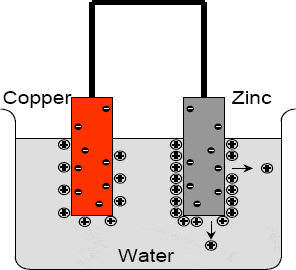
Voltage transformer connections in three phase HV system
Single secondary winding may be utilised for protection as well as metering using separate branch circuits. However, separate windings each for metering and protection circuits are also employed as shown in Figure 2.6. The protection winding quite often is connected in open delta formation for polarizing E/F protection.
2.4 VT terminal markings and polarity
According to North American standards, the notation H is used for high voltage winding terminals and X for the secondary low voltage terminals, while in IEC the use of primary alphabets with capital and small letters like A, B, C, a, b, c, etc are common. Numerical suffixes are added to the alphabet to identify different cores. Typical marking of terminals for three phase systems according to North American standards are shown in Figure 2.7.

Typical VT terminal identification as per North American standards
Figure 2.8 shows the typical identifications adopted in European and now IEC standards.
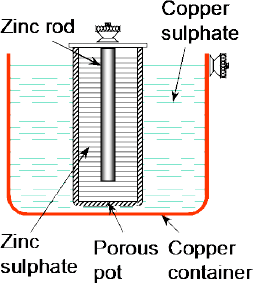
Typical VT terminal identifications according to IEC standards
The direction of the current flow in a voltage transformer does not affect the response of the measuring or control devices that operate with the magnitude of the voltage in single phase systems. It means that the reversal of connections of the devices on the secondary terminals does not affect the operation of the devices. However, this is not the case when interchanging the terminals of the measuring or control devices that operate with the interaction of two or more voltages. In these cases, the correct operation of the devices depends on the relative phase positions of the voltages, in addition to their magnitudes. It is normal practice to show the relative instantaneous directions of voltages with distinctive polarity markers on each primary and secondary terminal, indicating that at the instant when the primary voltage is rising at a marked primary terminal, a similar voltage rise is reflected at the marked secondary terminal. It is normal practice to identify the terminals of voltage transformers with black dots (circles) to indicate the relative polarities of the primary and secondary windings as shown in Figure 2.9.
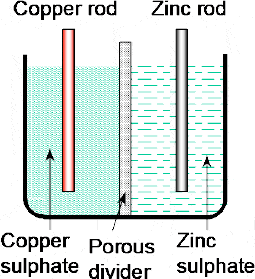
Typical VT polarity identification
It is necessary that terminals having corresponding capital and lower-case markings shall have the same polarity at the same instant. Usually, the corresponding high-voltage and low voltage terminals of the equipment are also marked as ‘P1’ and ‘S1’ respectively.
The typical connections of a voltage transformer with two or more secondary windings is shown in Figure 2.10, where ‘P’ stands for the primary and ‘S’ stands for the secondary terminals.

Typical VT terminal markings
2.5 Characteristics and classes
The voltage transformers are specified by the following characteristics:
- Rated primary and secondary voltages
- Voltage factor
- Accuracy
- Errors related to accuracy
- Burden
- Frequency response
- Transient response
2.5.1 Rated primary and secondary voltage
Rated primary voltage is the continuous voltage for which the primary is designed so as to provide rated secondary voltage across the secondary open circuit terminals. The rated primary voltage of three-phase transformers in a three-phase system and of single-phase transformers for use in a single-phase system shall be equal to the rated system voltage for which they are used. Often for three-phase high voltage applications, single phase transformers are used for each phase with their terminals interconnected externally. The standard values of rated primary voltage of a single-phase transformer connected between one line of a three-phase system and earth shall be 1/√3 times the line to line rated system voltage.
The rated secondary voltages based on the current practice of a group of European countries are:
- 100 V and 110 V
Based on the current practice in the United States and Canada, these are:
- 115 – 120 V
Insulation levels for primary windings
The rated insulation level of a primary winding of an inductive voltage transformer shall be based on its highest voltage for equipment Um. For windings having Um ≥ 0.72 kV or 1.2 kV, the rated insulation level is determined by the rated power-frequency withstand voltage, according to the Table 2.2. For windings having Um ≥ 3.6 kV and greater but less than 300 kV, the rated insulation level is determined by the rated lightning impulse and power-frequency withstand voltages and shall be chosen in accordance with the same table. The highest voltages in the table shall be considered for voltage transformers located in installations exposed to bad atmospheric conditions.
Insulation levels for voltage transformers Um below 300 kV (IEC ratings)
| Highest system Voltage Um kV (peak) | Rated short-duration power-frequency withstand voltage kV (r.m.s) | Rated lightning impulse withstand voltage kV (peak) |
| 1.2 | 6 | — |
| 3.6 | 10 | 20/40 |
| 7.2 | 20 | 40/60 |
| 12 | 28 | 60/75 |
| 17.5 | 38 | 75/95 |
| 24 | 50 | 95/125 |
| 36 | 70 | 145/170 |
| 52 | 95 | 250 |
| 72.5 | 140 | 325 |
| 123 | 185/230 | 450/550 |
| 145 | 230/275 | 550/650 |
| 170 | 275/325 | 650/750 |
| 245 | 395/460 | 950/1050 |
For windings having Um ≥ 300 kV, the rated insulation level is determined by the rated switching and lightning impulse withstand voltages and shall be chosen in accordance with Table 2.3.
Insulation levels for voltage transformers Um 300kV and above (IEC ratings)
| Highest system Voltage Um kV (peak) | Rated switching impulse withstand voltage kV (peak) | Rated lightning impulse withstand voltage kV (peak) |
| 300 | 750/850 | 950/1050 |
| 362 | 850/950 | 1050/1175 |
| 420 | 1050/1050 | 1300/1425 |
| 525 | 1050/1175 | 1425/1550 |
| 765 | 1425/1550 | 1950/2100 |
2.5.2 Rated voltage factors
The rated voltage factor is the ratio of the maximum operating voltage permitted and the rated voltage. The voltage factor is determined by the maximum operating voltage which in turn is dependent on the system and the transformer’s primary winding earthing methods, whether effectively or non-effectively earthed. Table 2.4 gives the standard voltage factors applicable for voltage transformers under different conditions.
Rated Voltage factors of voltage transformers
| Rated voltage factor | Rated time | Method of connecting the primary winding and system earthing conditions |
| 1.2 | Continuous | Between phases in any network as well as. between transformer star-point and earth in any network |
| 1.2 1.5 | Continuous 30 seconds | Between phase and earth in an effectively earthed neutral system |
| 1.2 1.9 | Continuous 30 seconds | Between phase and earth in a non-effectively earthed neutral system with automatic earth-fault tripping |
| 1.2 | Continuous | Between phase and earth in an isolated neutral system without automatic earth-fault tripping or in a |
| 1.9 | 8 hours | resonant earthed system without automatic earth-fault tripping |
2.5.3 Accuracy
In any kind of measurement, accuracy is an integral requirement and if there are deviations in the measured output compared to the actual value of the input, the whole purpose of doing the measurement will be defeated. Voltage transformers give the inputs to the meters, which ultimately provide the readings of the measured voltage. Hence the accuracy of a voltage transformer is important to ensure that its output does not affect the ultimate outputs of the meters or the relays.
It is not expected that voltage transformers will be required to operate in excess of 110% of rated voltage. Voltages in excess of 10% may cause increased errors and excessive heating leading to the failure of the windings. Hence if a voltage transformer is said to have an acceptable accuracy at its rated voltage, it is suitable over the range from zero to 110% of the rated voltage.
Accuracy is a characteristic defined only for steady-state input signals, in normal or abnormal (faulted) states. The standard accuracy classes for single-phase inductive measuring voltage transformers as per IEC are 0.1, 0.2, 0.5, 1.0 and 3.0, which indicate the maximum errors acceptable in the output values of the voltage transformer measurements in terms of percentage of actual expected value as per turns or voltage ratio. It means that the lower the class value, the higher the accuracy. A metering VT is required to be within the specified errors from 80% to 120% of the rated voltage.
There are two accuracy-rating classes for instrument transformers defined in International standards. The two accuracy classes are:
- Revenue metering class.
- Relaying class.
While a revenue metering class is defined for both current transformers and voltage transformers, a relaying accuracy class is generally defined for current transformers only. The accuracy of VT’s used in protection circuits can be ignored and is generally neglected in practice.
Accuracy is not a major cost-deciding factor for a voltage transformer due to the high efficiency of the transformers, which normally ensures that there is no major voltage drop in the secondary terminals. Thus it is common to select voltage transformers based on the loads (Choosing appropriate rated burden).
2.5.4 Errors
The voltages induced in the secondary windings depend on the turns ratio adopted, phase angle of the voltages, etc. There are two main types of errors that affect the accuracy of measurements using voltage transformers as given below:
- Ratio error.
- Phase angle error.
Ratio error
When transformer windings/turns are designed they are designed with basic transformation ratio expected between the primary and secondary voltages under operating conditions. However the ratio error is unavoidable due to manufacturing errors and system values which vary with load conditions. The ratio error can be defined as an error which a voltage transformer introduces into the measurement of a voltage and which arises when the actual transformation ratio is not equal to the rated or anticipated transformation ratio. The voltage error is normally expressed as a percent and is given by the formula:
Voltage error % = (Kn Us – Up)/Up × 100%
where
- Kn is the rated transformation ratio
- Up is the actual primary voltage
- Us is the measured/actual secondary voltage when rated primary voltage is applied.
Phase angle error
Under ideal conditions, the secondary voltage is supposed to be in phase with the primary sinusoidal voltage, which is not the case in real conditions. The difference in phase angles between the primary voltage and the secondary voltage vectors is referred as the phase displacement. The phase displacement is said to be positive when the secondary voltage vector leads the primary voltage vector. It is usually expressed in minutes or centi-radians and is defined as positive when the voltage applied to the burden from the marked to the unmarked secondary terminal, leads the corresponding voltage applied to the primary. Phase angle correction factor (PACF) is the ratio of the true power factor to the measured power factor. It is a function of both the phase angle of the voltage transformer and the power factor of the primary circuit being measured.
Voltage transformers are capable of producing secondary voltages, which are proportionate to the primary voltages over the full range of input voltage expected in a system. Voltage transformers used for protection are required to maintain reasonably good accuracy over a large range of voltage from 0 – 173% of the normal. However, close accuracy requirements are more relevant for metering purposes, while the accuracy requirements can be comparatively less for protection purposes.
Generally, a voltage transformer used for measurements may also be used for protection purposes. However, the standard accuracy classes for a protection voltage transformers are 3P and 6P, and the same limits of voltage error and phase displacement normally is applicable at both 5 % of rated voltage and at the voltage corresponding to the rated voltage factor and when the secondary has a burden in the range of 25% to 100% of the rated burden at a power factor of 0.8 lagging. Typical values for the standard accuracy classes reproduced from IEC are as per Table 2.5.
Acceptable Errors for voltage transformers (IEC 60044-2)
| Accuracy Class | Percentage Ratio (voltage) error (%) | Phase Displacement ± | |
| Minutes | Centi-radians | ||
| Metering class VTs | |||
| 0.1 | 0.1 | 5 | 0.5 |
| 0.2 | 0.2 | 10 | 3.0 |
| 0.5 | 0.5 | 20 | 40 |
| 1.0 | 1.0 | 40 | 1.2 |
| 3.0 | 3.0 | N.A. | N.A. |
| Metering class VTs | |||
| 3P | 3.0 | 120 | |
| 6P | 6.0 | 240 | |
The effect of the ratio and phase angle errors of voltage transformers is that with a lagging power factor load, a positive voltage transformer phase angle error will cause a low wattmeter reading. The errors in a voltage transformer change with the current required by the load connected across the secondary terminals and the magnitude of the secondary voltage.
Transformer correction factor (TCF)
The transformer correction factor (TCF) is the ratio of the true watts or watt-hours to the measured secondary watts or watt-hours, divided by the marked ratio. This factor is commonly used in IEEE standards but not so in IEC standards. This is a sort of correction factor to ensure that the energy meter readings connected to the voltage transformer are corrected for revenue metering. TCF is equal to the ratio correction factor multiplied by the phase angle correction factor for a specified primary circuit power factor. While studying accuracy, it is necessary to see the effect of the secondary current and the effect of the power factor as a ratio error and phase angle error depending on the changes that occur due to them.
A TCF at a 0.6 power factor (lagging) of the metered load for voltage transformers can be shown as:
TCF = RCF + γ/2600
Where,
RCF = ratio correction factor
γ = phase angle in minutes
2.5.5 Burden
Power transformer ratings are defined by kVA values giving their loading capacities. The burden of a voltage transformer can be considered at its rated power capacity but defined in terms of VA due to very low magnitudes of power involved in VT circuits.
When several loads are connected in parallel, it is usually sufficiently accurate to add their individual volt-amperes arithmetically to determine the total volt-ampere burden. The standard burdens to be used for testing and comparing voltage transformers are rated at 120 volts and at 69.3 volts.
In other words, a burden can be defined as the load which may be imposed on the voltage transformer secondary windings by associated meter coils, leads and other connected devices without causing an error greater than the stated accuracy classification.
Typical burden’s in VA’s range from 10 VA to 45 VA. For larger capacities, the burden can go as high as 100 VA and above. Today, with digital relays and meters replacing the electromagnetic ones, the burden requirement of an instrument transformer has reduced considerably compared to earlier days.
A burden is specified at a particular load angle/power factor. It is to be note that as per international standards the accuracy of the VT should be within specified limits up to its rated burden. Voltage transformers are designed to maintain the specified accuracies in voltage output at their secondary terminals, and this is achieved by designing the winding’s impedances with a suitably low value.
The use of long secondary lead cables, tend to introduce further resistance and associated voltage drop, which can affect the accuracy of the voltage as it is received at the switchboards. The obvious solution is to consider a distribution box installed close to the voltage transformer and supply the relay and metering burdens over separate leads to each panel. Apart from the basic fact that this keeps all lead lengths to the minimum, this helps in making an allowance for the resistance of the leads of the individual burdens when the particular equipment/meter is calibrated.
For protection purposes, the accuracy of the voltage measurement may be important during fault conditions, as the system voltage might be reduced to a lower value by the fault. Voltage transformers for such types of services must comply with an extended range of performance i.e. the output should be within a specified range during such conditions to enable proper detection of the fault.
Primary voltage has no effect on the ratio error and phase angle error, as there is no wide variation of supply voltage to which the primary winding of a voltage transformer is connected. Table 2.6 shows the values of a transformer ratio correction factor.
Ratio correction factors for voltage transformers (IEC & IEEE)
| Accuracy Class | Limits of transformer ratio correction Factor | Limits of power factor load |
| 1.2 | 1.012 – 0.988 | 0.6 – 1.0 |
| 0.6 | 1.006 – 0.994 | 0.6 – 1.0 |
| 0.3 | 1.003 – 0.997 | 0.6 – 1.0 |
Effect of burden on voltage ratio
Whenever the secondary burden increases, secondary current increases and hence primary current also increases. Due to drawl of higher currents, voltage drops in both primary and secondary windings increase. Thus for a given value of primary voltage, the secondary voltage available at the VT terminals decreases. Hence, the actual voltage ratio between primary and secondary windings increases when the secondary burden increases. The variation in ratio error can be found to be almost linear with the change in burden.
With regard to phase angle error, primary voltage is more advanced in phase because of increased voltage drops with an increase in secondary burden. The phasor secondary voltage reversed is retarded in phase owing to an increase in secondary winding voltage drops. Thus, with the increase in burden, the phase angle between the primary and secondary voltage reversed increases, becoming more negative.
Effect of power factor of secondary burden
If the power factor of a secondary burden is reduced, voltage drops remain almost constant and the transformer ratio increases. Secondary voltage advances in phase and primary voltage is retarded in phase. Thus, the phase angle reduces with a decrease in the secondary power factor. The Standard burdens for voltage transformers for rating purposes as per IEEE are given in Table 2.7.
Standard burdens for voltage transformers (IEEE)
| Burden Designation | Voltamperes | Burden power factor |
| W | 12.5 | 0.70 |
| X | 25 | 0.70 |
| Y | 75 | 0.85 |
| Z | 200 | 0.85 |
| ZZ | 400 | 0.85 |
Revenue metering accuracy class (IEEE)
Revenue metering accuracy classes require that the TCF of instrument transformers shall be within specified limits. This requirement is specified when the power factor of the load is in the range of 0.6 to 1.0. These shall be met by a voltage transformer for the load of any value (in VA) in the range from zero to the specified standard burden. The range of input voltage magnitudes is 90% to 110% of the rated primary magnitude.
A voltage transformer shall be assigned an accuracy rating for each of the standard burdens for which it is rated. For example, an accuracy rating might be 0.3W, 0.6Y, 1.2ZZ.
0.3W indicates that
- PT will operate with an accuracy between 99.7-100.3 percent if the operating system power factor is greater than 0.6 and
- The secondary connected devices do not exceed 12.5 VA and operate at a power factor greater than 0.7.
0.6Y indicates that
- PT will operate with an accuracy between 99.4-100.6 percent if the operating power factor is greater than 0.6 and
- The connected devices do not exceed 25 VA and operate at a power factor greater than 0.85.
1.2ZZ means that
- PT will operate with an accuracy between 98.8-101.2 percent if the operating power factor is greater than 0.6. and
- The connected devices do not exceed 25 VA and operate at a power factor greater than 0.85.
2.5.6 Voltage drop in voltage transformers
The voltage drop in the secondary circuit is of importance. The voltage drop in the secondary fuses and long connection wires can change the accuracy of the measurement. It is especially important for revenue metering windings of high accuracy (class 0.2, 0.3). The total voltage drops in this circuit must not be more than 0.1 percent.
Typical values of Resistance in fuses are as below:
| 6A | 0.048 |
| 10A | 0.024 |
| 16A | 0.0076 |
| 25A | 0.0042 |
6-10 A is the typical range normally chosen for safe rupture of the fuses in VT applications. The voltage drop in the leads from the VT to the associated equipment, in practice, can be alarming in case of measuring circuits and shall be suitably controlled by choosing proper cross section of wires. The voltage drop in the leads is an important factor to be considered in case of metering circuits (with low burden) compared to protective circuits (with higher burdens). Figure 2.11 gives typical circuit with voltage drops.
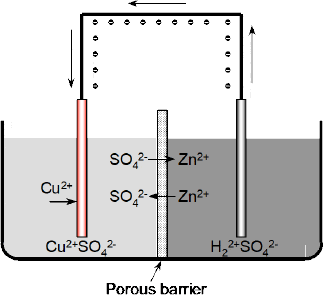
Voltage drops of VT
2.5.6 Frequency response
For a constant voltage, flux is inversely proportional to the frequency of operation. An increase in frequency reduces the flux and therefore the magnetising component and the iron loss component of a no load exciting current decreases. This ultimately leads to a decrease in the voltage ratio but the decrease is not directly proportional to the increase in frequency. The leakage reactance increases and the leakage reactance drops are increased, leading to an increase in the voltage ratio. Changes in voltage ratio due to a change of frequency are dependent on the relative value of loss and leakage reactance since the effects produced by them oppose each other. Due to an increase in frequency, primary voltage advances. Secondary voltage gets retarded due to a secondary reactance. Therefore the phase angle increases as frequency increases.
Frequency response is normally evaluated for linear systems only. At the outlook, instrument transformers are not linear devices. However they are usually designed and sized (with various component parameters) to properly operate in a linear region only. This means that most of the time, instrument transformers can be regarded as linear devices, which can be affected by frequency of voltage applied. The frequency response of voltage transformers and CVTs can be evaluated only when the magnetic flux in the core is in the linear region.
With windings predominantly offering the inductive reactance in a circuit, the capacitances of the circuit affect the frequency response. The typical frequency range of signals in voltage transformers is up to 10 kHz. In this range, a voltage transformer acts as a low-frequency filter. The cut-off frequency depends on the following parameters of the voltage transformer.
- Independent stray capacitances associated with primary and secondary windings (C1 and C2 respectively are shown in Figure 2.11). The Linkage stray capacitance between primary and secondary windings is shown as C12 in Figure 2.11.

Stray capacitances of VT windings
The frequency response of a typical voltage transformer can be studied using models and simulation software, such as an Alternative Transient Program (ATP), which applies trapezoidal rule of integration to solve the differential equations of system components in the time domain.
2.5.7 Transient response
Following power system transient conditions generally affect the response of the voltage transformers:
- Sudden decrease of voltage at the transformer terminals (due to a fault close to a voltage transformer).
- Sudden overvoltage (on the healthy phases due to phase to ground faults elsewhere in the network).
The first power system condition can produce internal oscillations within the electromagnetic voltage transformer cores. These in turn appear on the secondary winding output in the form of high-frequency oscillations with frequency much higher than the system frequency, sometimes called ringing. The damping time of such oscillations is usually between 15 and 20 milliseconds.
The second power system condition can lead to the saturation of the electromagnetic core affecting the output and the response by the connected devices. This is usually named as subsidence transient, which is defined as an error voltage appearing at the output terminals of a coupling-capacitor voltage transformer, resulting from a sudden and significant drop in the primary voltage.
The transient can be classified as belonging to one of the following three classes:
- Unidirectional.
- Oscillatory, f oscillation > 60Hz.
- Oscillatory, f oscillation < 60Hz.
The major factors that can influence the subsidence transients are:
- Coupling capacitor voltage transformer (CCVT) burden.
- Coupling capacitor voltage transformer design.
- Ferro-resonance suppression circuit (FSC).
The aspects related to the burden of a coupling capacitor voltage transformer that influence the subsidence transient are:
- Magnitude of burden – the influence of the burden is relatively less when the magnitude of the actual burden of the circuit is smaller than the nominal one.
- Burden power factor – Generally a decrease in the power factor in turn leads to lessening of the subsidence transient.
Typical responses in the secondary ends due to transient primary voltage conditions will be generally as per Figure 2.12 with the response varying with the burdens to some extent.

Transient response in VT windings
During the sudden application or sudden disappearance of primary voltage, the distribution of energy stored in the CVT is a major factor influencing the effect of the point of wave voltage interruption. The transient performance in those cases is similar with the transients as in the case of the primary short circuit.
2.6 Standards for voltage transformers
Following are the primary standards of voltage transformers followed by manufacturers based on the country of application, though they are closely related with some minor differences in the terminal markings, accuracy class definitions, etc.
- IEEE Std C57.13 – Standard requirements for instrument transformers.
- IEC 60044-2 – Inductive voltage transformers.
The standards usually specify the requirements to be met by the manufacturers and equipments related to:
- Manufacture and designing requirements.
- Testing standards .
- In-service requirements.
2.6.1 Design and manufacturing requirements
The ambient temperature, altitude and humidity are some of the important factors that can influence the design and working of voltage transformers. The altitude to be considered for the design of a VT is usually up to and including 1000mtrs above sea level. Any altitude beyond this value would require additional safety margins to be considered in the insulation of the VT windings.
As per IEC, the voltage transformers are broadly classified to three categories as given in Table 2.8.
Categories of voltage transformers based on ambient temperature (IEC)
| Category | Minimum temperature °C | Maximum temperature °C |
| –5/40 | –5 | 40 |
| –25/40 | –25 | 40 |
| –40/40 | –40 | 40 |
2.6.2 Tests as per standards
Similar to other equipment, the standards specify the routine and type tests to be conducted on the VT’s before they are delivered or put into service. The tests are classified as routine tests, type tests and special tests.
Routine tests
The following are standard routine tests specified in International standards for voltage transformers:
- Verification of terminal markings
- Power-frequency withstand tests on primary windings
- Partial discharge measurement (Um ≥ 7.2 kV)
- Power-frequency withstand tests on secondary windings
- Power-frequency withstand tests between sections
- Determination of errors
The order of the tests is not standardized but determination of errors shall be performed after the tests are carried out and additional testing will be implemented if required.
Type tests
The following are Type tests specified for voltage transformers. These are conducted on each type of VT manufactured but need not be repeated for each delivery:
- Temperature-rise test.
- Short-circuit withstand capability test.
- Lightning impulse test.
- Switching impulse test.
- Wet test for outdoor type transformers.
- Determination of errors.
- Measurement of the radio interference voltage (RIV) (Um ≥ 123 kV).
Special tests
Special tests to be considered for specific client/ site requirements are listed below.
- Chopped impulse test on primary winding.
- Measurement of capacitance and dielectric dissipation factor (Um ≥ 72.5 kV).
- Static withstand load tests (Um ≥ 72.5 kV).
- Transmitted over voltage measurement (Um ≥ 72.5 kV).
2.6.3 In-service requirements
VTs installed in places where the ambient temperature can vary significantly outside the values shown in Table 2.8 need to be specified and designed to meet the following minimum and maximum temperature ranges.
- –50 °C and 40 °C for very cold climates.
- –5 °C and 50 °C for very hot climate.
Some of the main considerations related to temperature and wind conditions are listed below:
- Average value of the ambient air temperature, measured over a period of 24 h, does not exceed 35 °C.
- Solar radiation up to a level of 1000 W/m2 (on a clear day at noon) should be considered.
- The wind pressure does not exceed 700 Pa (corresponding to 34 m/s wind speed).
2.7 Hazards with voltage transformers
The following factors shall be duly considered in voltage transformer installations, to avoid possible hazards and consequent damages and losses:
- Unearthed neutral terminals on secondary end.
- Short circuiting of secondary terminals.
- Back feed from secondary.
- Explosions.
- Over voltages due to Ferro-resonance and lightning.
2.7.1 Unearthed secondary neutrals
The secondary neutral of a voltage transformer should be grounded to avoid excessive voltage build up on the secondary. In the event of some kind of surge in the system, the voltage distribution through the system would depend not only on the number of turns involved, but also on the stray capacitances and leakage resistances between the various elements in the system. In case of floating neutrals, it may be possible to get dangerously high voltage build ups on the secondary windings which can lead to failure of insulation of the windings and also failure of the connected instruments/ devices. Voltage transformers provided with star connection on the secondary end are always provided with a neutral connected to the ground to overcome this hazard. The preferred practice is to locate the safety ground with suitable ground isolation test facilities at the first point of application (switchboard or relay panel) of the instrument transformer secondary circuit. This ground isolation facilities permit convenient testing of circuit insulation to the ground.
As per standards, the secondary circuit of the instrument transformer should be connected to the station ground at only one point, irrespective of the number of instrument transformer secondary windings. Usually, the common return circuit for two or more transformers is made into a secondary common neutral. This neutral is then connected to the station ground bus at only one point. The reasons for single point grounding are:
- Potential differences are created by the flow of fault current through the ground grid which can induce differences of potential in the instrument transformer secondary circuit and can result in the flow of current through the relay, instrument, and meter coils. This could cause incorrect performance and inaccuracies in the readings of the instruments and meters. High neutral conductor currents resulting from multiple ground connections to the neutral can also cause thermal damage to the neutral conductor. The grounding can prevent these issues.
- Grounding at one point facilitates the temporary removal and reestablishment of the ground connection, whenever needed to make periodic tests for checking the deterioration of insulation.
2.7.2 Short circuits in secondary circuit
The secondary voltage of the voltage transformer is virtually independent of the load and it is normally connected to high impedance loads for measurement purposes. The secondary terminals of a voltage transformer shall never be short-circuited, since this would result in an excessively high current on the secondary and will permanently damage the transformer windings. It is usual practice to provide suitably rated fuses on the secondary terminals of the voltage transformer to isolate the secondary in case of excessive load or short circuit conditions thereby protecting the transformer.
2.7.3 Back feed through secondary
The principle of a transformer is such that, a voltage applied either on the primary side or the secondary side can induce a voltage on the other side with a magnitude that is proportional to the turns ratio. It was seen that the rated secondary voltage is usually 110V-120V. However there is always a possibility that the control circuits of switchgears, control panels, etc also utilise control voltages from other sources independent of the VT secondary voltage. In the event that the voltage transformer is kept isolated from the system for reasons of maintenance or testing and during this time the secondary winding terminals are accidentally charged by a very low voltage of even of the order of 24V through contact with some other source, it can result in an abnormally very high voltage in the range of kilo volts on the primary side of the voltage transformer. This can pose safety hazards to personnel and may also lead to dangers of arcing. Hence it is absolutely necessary to ensure proper isolation of the secondary terminals of a VT while taking up any work on the primary side. The secondary side fuses provided for short circuit protection shall be removed to avoid back feeds when any maintenance activity is taken up on voltage transformers.
Secondary voltage injection through the secondary winding is done during some tests and in such cases it is necessary that the primary side is totally isolated and protected from the main system to avoid back feed into the system leading to hazards. Proper precautions and safety practices are to be adopted when such voltage injection tests are done on voltage transformer.
Voltage transformer isolations
Voltage transformer isolations can be done at the panel by pulling the appropriate fuses and links or by switching off the MCB in the VT marshalling box. It shall be noted that in many installations, the centre phase of the supply is earthed and may not be easily isolatable. Safe tagging, affixing of Danger notices and lockout procedures should be adopted at the relevant points to avoid inadvertent contacts with the isolated circuit.
The methods to achieve isolation shall be positive and visible. In case this is not feasible, as in the case of an MCB, the wiring should be disconnected with suitable tagging. It is recommended that the isolated section is checked using a voltmeter to ensure its dead condition.
The removal of wiring from the terminals shall be the last resort and all removed wiring shall be properly tagged or labeled. While restoring the wiring, sufficient tests must be carried out to ensure that the wiring has been restored correctly.
2.7.4 Explosions
The causes of explosion in a voltage transformer can be due to any or combination of the following factors:
- Loss of oil
- Dirty bushings
- Loose primary connections
- Improper grounding
- Reduced clearances
- Lightning strikes
Loss of oil
Oil is used as an insulating medium in high voltage transformers. This oil is kept sealed inside the voltage transformer. Any accidental leakage of the oil due to cracks in the body of the voltage transformer, bushings, etc may lead to loss of insulation resulting in arcing/failure. Hence, it is essential to monitor and ensure that there are no leaks in the oil system. In HV and EHV, nitrogen pressure gauge is used to indicate any leaks in the system.
Dirty porcelain bushings
Dirty porcelain bushings of outdoor voltage transformers installed in polluted/industrial environment can be a cause of problem. Similarly excessive deposition of dust on resin cast voltage transformers shall also be avoided. These result in the reduction of creepage distances of the bushings and insulators leading to arcing and flashover failures. Maintaining the cleanliness of the bushings is an essential requirement in HV outdoor substations.
Other reasons
Loose terminal connections and improper grounding can cause arcing and lead to explosions. It shall be ensured that all connections are secure and tight to avoid this hazard. Lack of adequate clearances inside the terminal boxes on account of loose connections also lead to arcing inside the terminal boxes and explosions. Lightning strikes on exposed primary terminals of the voltage transformers constitute another cause for explosions and require installation of lightning arresters for protection.
2.7.5 Over voltages
Apart from back feed, there are other reasons like Ferro resonance and lightning that can lead to over voltages in VT circuits.
Ferro resonance
In linear circuits, resonance occurs when the magnitude of the capacitive reactance equals the inductive reactance at the operating frequency. Iron-core inductors usually have non linear characteristics and have a range of inductance values. Hence there are possibilities that during specific operating conditions, the inductive reactance of the VT can become equal to the capacitive reactance of the system resulting in very high and damaging over voltages. Experimentally it has been found that for “standard” voltage transformers and for circuits with low zero-sequence losses, ferro resonance can take place if the ratio Xc/Xµ (equivalent reactance of the system capacitance/equivalent magnetising reactance of voltage transformers) lies between 0.01 and 3.
Transients (a fault, a switching operation, etc.) in a network with an isolated neutral can randomly cause a switch from a symmetrical operation to a ferro resonance condition and vice-versa. The extent of ferro resonance for an isolated neutral potential network with a star connected, grounded neutral voltage transformer depends on:
- The amount of capacitive reactance to ground (cable capacitance or lumped capacitance).
- The amount of magnetising reactance of the potential transformer.
- The total zero-sequence losses in the circuit (the higher the losses, the shorter the duration of oscillations triggered by ferro resonance).
- The sharpness of the saturation curve.
When ferro resonance occurs, a voltage between the neutral and the earth appears and phase voltages of the circuit become asymmetrical. Under these conditions, grounded-neutral, wye-connected voltage transformers are subjected to a permanent over-excitation flux and might get damaged. Voltage transformer fuses, when adopted to protect the transformers, help to prevent this damage.
When a broken delta-connected secondary winding is used in voltage transformers to detect ground faults, the ferro resonance can give false indication of faults due to development of abnormal voltage across the broken delta-connected winding.
For voltage transformers used for detection of ground-faults, it is customary to select a transformer rated for a line-to-line system voltage and operate it at a lower voltage (knee point at 1/3 of the operating voltage). In this case, ferro-resonance is less likely to occur, because the ratio Xc/Xµ should be between 0.01 and 0.5.
Lightning can cause failure of voltage transformers on account of overvoltage. It is essential that voltage transformers are protected by lightning arresters on the upstream side to prevent such overvoltages from reaching the voltage transformer. Specifying the proper impulse voltage during the enquiry stage is also necessary. Grounding the VT base and structure is another essential step for protection of the voltage transformer.
2.8 Safety precautions
Some of the important safety precautions related to voltage transformers are listed in the following paragraphs. Due compliance of these factors while working on VT circuits can ensure safety for personnel and equipment.
- An instrument transformer shall always be considered as a part of the circuit to which it is connected. The leads and terminals (or other parts) of the voltage transformer shall never be touched unless they are known to be adequately grounded.
- Even in the case of cast resin/moulded type VTs, the insulation surfaces should never be touched, since a voltage gradient and stress exists across the entire insulation surface from the terminals to the grounded metal parts.
- The secondary neutral should be grounded close to the transformers.
- The application of power fuses in the primary circuits of voltage transformers is a recognised and recommended operating practice confined to panel mounted voltage transformers. To provide the maximum practical protection against damage to other equipment or injury to personnel in the event of a voltage transformer failure, it is necessary to use the optimum and smallest possible fuse ampere rating, which will not result in nuisance blowing. Increasing the fuse ampere rating results in longer clearing time, thereby increasing the possibility of damage to other equipment or injury to personnel. This therefore needs to be avoided.
When performing work on outdoor voltage transformers, the following minimum safety precautions are necessary:
- Only qualified and trained personnel should be allowed to work on the voltage transformer.
- The equipment must be properly de-energised and isolated with an issued permit.
- Work permit must be provided for personnel intending to perform any work on the voltage transformer.
- Before starting work, the PT should be relieved of any residual energy by using an earth discharge rod.
- Earthing connections shall be physically checked to ensure they are in good condition
- Proper PPE and working platforms shall be ensured when working at elevated levels on outdoor PTs.
- Any work on a VT or in its immediate vicinity shall be completely avoided during rain and lightning.
- The VT’s surface must be kept clean to avoid flashovers.
- The secondary terminal box shall be completely sealed to prevent water entry during rains.
- Adequate clearances with respect to ground, to the nearby devices and to the nearby fences shall be ensured while designing the layouts and during installation. The minimum clearances stipulated in various international standards shall be strictly adhered to in order to prevent accidents and failures.
- The secondary terminals of a voltage transformer shall never be short circuited. A secondary short circuit will cause the unit to overheat and fail in a very short period of time.
2.9 Accuracy checks on voltage transformers
The accuracy class indicates the voltage transformer’s performance characteristics. A VTs accuracy is dependent on the number of devices connected to the secondary terminals and the applied voltage. However, estimation of the actual operating voltages and the connected burdens may not be always possible. Hence routine tests are carried out on VTs at a reduced number of voltages and/or burdens that are in the permissible range. Routine tests at a reduced number of voltages and/or burdens are permissible, provided it has been shown by Type tests on a similar transformer that such a reduced number of tests are sufficient to prove its characteristics.
The Type test for the measurement accuracy of a voltage transformer should be made at a voltage between 80% and 120% of rated voltage and with burdens between 25% and 100% of rated burden at a power factor of 0.8 lagging. To prove compliance with this, type tests shall be made at 2%, 5% and at 100% of rated voltage and at rated voltage multiplied by the rated voltage factor, at 25% and at 100% of rated burden at a power-factor of 0.8 lagging.
If the voltage transformer has two separate secondary windings, it is necessary to specify two output ranges, one for each winding. The upper limit of each output range should correspond to a rated output value. Each winding should fulfill its respective accuracy requirements within its output range. If no specifications of output ranges are known, then these ranges are deemed to be from 25% to 100% of the rated output for each winding.
For measuring voltage transformers of accuracy class 0.1 and 0.2 and having a rated burden lower than 10 VA an extended range of burden can be specified. The voltage error and phase displacement shall not exceed the values given in the table, when the secondary burden is any value from 0 VA to 100% of the rated burden, at a power factor equal to 1. This requirement is mostly requested for certified accuracy of energy measurements. The measurement errors shall be determined at the terminals of the voltage transformer and shall include the effects of any fuses or resistors as an integral part of the VT.
2.10 Applications of voltage transformers
Voltage transformers are used mainly for the following applications:
- Metering of voltage, power, frequency, etc.
- Protection of all major equipment through relays.
- Indication of voltage availability by indication lamps.
Although this course is devoted to metering applications, we will briefly outline the features of all these applications to give a better idea on how the characteristics of metering application transformers differ from the other types.
2.10.1 Connection to obtain the residual voltage
It is common to detect earth faults in a three-phase system using the displacement that occurs in the neutral voltage when earth faults take place. The residual voltage (neutral displacement voltage, polarising voltage) for earth-fault relays can be obtained from a VT between neutral and earth, for instance at a power transformer neutral. It can also be obtained from a three-phase set of VTs, which have their primary winding connected phase to earth and one of the secondary windings connected in a broken delta. Figure 2.13 shows the measuring principle for the broken delta connected system.
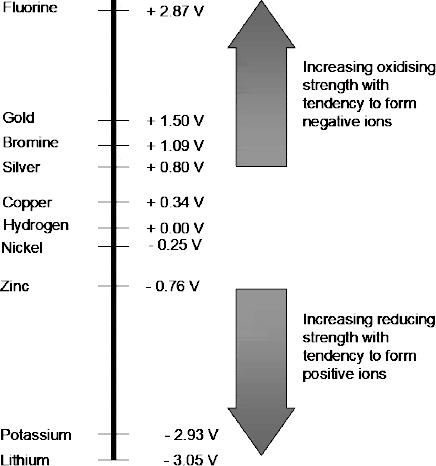
Open delta connections of protection VT
2.10.2 Ferro resonance in magnetic voltage transformer
While the phenomenon of ferro resonance in a CVT is an internal oscillation between the capacitor and the coil winding, the ferro resonance in a magnetic voltage transformer is an oscillation between the inductive reactance of the voltage transformer and the capacitance of the network. The oscillation can only occur in a network having an insulated neutral. An oscillation can occur between the network’s capacitance to ground and the non-linear electro magnetic inductance of the voltage transformer. Such an oscillation can be triggered by a sudden change in the network voltage e.g. switching or a fault.
Damping of ferro resonance
The electromagnetic type voltage transformer can be protected from ferro resonance oscillation by connecting a resistor across the open delta point in the three-phase secondary winding as shown in Figure 2.14. A typical value of the resistance is 50-60 ohm, 200W.

Damping ferro resonance of VT
2.11 Summary
There are basically two construction types of voltage transformers. The electro magnetic type and the capacitor type. The basic operation principle of an electromagnetic type voltage transformer is the same as the standard electromagnetic power transformer. The secondary voltages of typical voltage transformers are standardized as 110V – 120V. Voltage transformers can have multiple cores feeding measuring and relay circuits separately. Voltage transformers are also classified based on the operating voltage, type of insulation, number of phases and the location of installation. The secondary of a VT for measurement purposes is usually connected in Star configuration with the neutral to enable voltage measurements between phase to phase or phase to neutral.
The terminals of a VT are marked with different identification tags in IEEE and IEC standards. IEEE generally uses prefix H for primary (high voltage) and prefix X (Low voltage) for secondary ends. IEC generally uses capital alphabet (A, B….) for primary side and smaller alphabet with core number (1a, 1b, 2a, etc) for the secondary side. The polarity of a VT is usually identified with a small circle to show the primary and secondary voltage relationship.
The technical characteristics of a VT are usually specified in terms of rated voltages of primary and secondary windings, accuracy, burden, rated voltage factor, errors, etc. The required insulation levels are provided in the international standards.
Accuracy is an important factor for measuring circuits. However, accuracy is not a major cost factor for voltage transformers because of the high efficiency of VTs. The errors in the output values of a VT are caused by ratio error and phase angle error. The burden of a VT basically gives its maximum allowable load within which the VT will maintain its accuracy and acceptable errors. The other two factors that can affect a VT are its responses to frequency variations and input transients.
IEC and IEEE standards define the typical operating characteristics of voltage transformers and also list the various tests required to be conducted on VTs for checking their conformance to the standards.
While using voltage transformers it should be ensured that the secondary neutrals are properly grounded and that short circuiting of terminals are avoided. Proper isolation shall be ensured to avoid back feeds and protection from possible over loading / short circuit conditions with the provision of fuses. VTs may flashover and explode in the event of loss of insulation oil, dirty bushings, improper grounding and lightning strikes. VTs are affected by over voltages due to ferro resonance and lightning and hence protection is needed through the provision of proper fuses and lightning protection.
3
Current Transformers (CT)
In this chapter we will review the theory of operation, construction and the various features of different types, selections and connection methods of current transformers used for measuring purposes. We will also study the basic characteristics and the standards related to current transformers used in measurement applications and the possible hazards associated with CTs and the levels of accuracy adopted for different applications.
Learning objectives
- Basic theory of current transformer operation
- How current transformers are used for measurement
- Characteristics and classes of current transformers
- Comparison of metering CT and protection CT
- Standards for current transformers
- Hazards associated with current transformers
- Accuracy of current transformers
- Applications of current transformers
3.1 Basic theory of current transformers
Current transformers are used for producing smaller currents in the range of one to five amperes for metering and relay applications in power circuits having currents ranging up to thousands of amperes. The main purpose is to use these small magnitude currents in relays and meters for the purpose of detection of normal and abnormal currents. The principle of current transformer operation is based on the basic theory of normal transformers used in AC systems considering ampere turn balancing in primary and secondary windings as given by the following equation (primary and secondary currents/turns suffixed with p and s respectively).

In an “ideal” current transformer, the secondary current would be exactly equal to the primary current multiplied by the turns ratio and vectorially opposite to the primary current. However, as in the case of a voltage transformer, some portion of the primary current or primary ampere-turns is utilized for magnetizing the core, thus leaving less than the actual primary ampere turns to be “transformed” into secondary ampere-turns. This naturally introduces an error in the transformation. Theses errors are of two types—the current or ratio error and the phase error.
The following are the important characteristics of current transformers, which distinguish them from standard voltage/ power transformers:
- Current transformer has its primary winding directly connected in series with the main circuit, carrying the full operating current of the system unlike the parallel connection to voltage source adopted in standard transformers.
- The primary current in current transformer is dependant on the current in the main system to which it is connected in series and is not determined by the load connected on the secondary winding of current transformer.
- The primary winding of a current transformer always consists of very few turns (very often only a bar of conductor equivalent to a single turn forms the primary winding) and there is no appreciable voltage drop across it.
- The secondary winding of the current transformer has large number of turns; the exact number is determined by the turns ratio.
- A current proportional to the primary current flows in the secondary winding of a CT based on the turns ratio designed to ensure a standard secondary current of 1A or 5A for the rated primary current. These secondary values are universally standardized.
- The secondary winding of the current transformer should never be left open and shall either be connected to a device with a current coil or shall be just shorted using shorting links, when not connected to a device on the secondary.
A typical current transformer used for measurement purposes is made up of the following main parts which are completely sealed with a suitable insulating cover to form a single unit.
- Magnetic core: The magnetic core is made up of high quality steel which forms a closed magnetic circuit, similar to voltage transformers. At least one of the windings or both (primary and secondary) are wound over the core. Sometimes the transformer can have multiple cores in one assembly, each serving a distinct function.
- Primary winding: The primary winding is made up of copper conductor with adequate insulation. The primary winding design can be dead tank or live tank design.
- Secondary winding: The secondary winding is made up of enameled copper wire.
3.2 Types and categories of current transformers
Current transformers can be broadly categorized as shown in Table 3.1. They are generally not classified on the value of currents being handled.
Table 3.1
Categories/ Types of current transformers
| Category Basis | Types |
| Voltage | Low Voltage (LV) |
| Medium Voltage (MV) High | |
| voltage (HV) | |
| Insulation | Epoxy moulded or Resin cast |
| Phases | Oil immersed Single phase |
| Three phase | |
| Installation | Outdoor |
| Indoor | |
| Construction | Wound primary type |
| Bar primary type Window type | |
| Application | Metering CT Protection CT |
| Core Balance CT | |
| Output currents | 1A CT 5A CT |
One important method of differentiating the type of a CT is based on the construction method adopted. The constructions basically differ on how the primary winding is formed. There are three types of current transformers based on this categorization:
- Wound primary type
- Bar primary type
- Window type
Both wound primary and bar primary construction are adopted for metering and protection current transformers. However the window type CT is exclusively used for protection purposes.
Typical wound primary type CT is shown in Figure 3.1, where both the primary and secondary windings are wound over a common magnetic core.

Wound primary current transformer
Wound primary type CTs have the following limitations:
- Thermal limitations on the maximum currents of primary winding especially while carrying short circuit currents.
- Need for special structural requirements against high magnetic forces.
Wound type CTs are generally adopted for primary currents up to 100 amperes only. The bar primary type has its primary in the form of bus bar so that the above limitations are overcome for higher currents. For currents greater than 100 amperes, bar primary type is used, where the primary is nothing but part of the main conductor of the circuit to be measured/ protected. Typical construction of bar primary type CT is as shown in Figure 3.2.
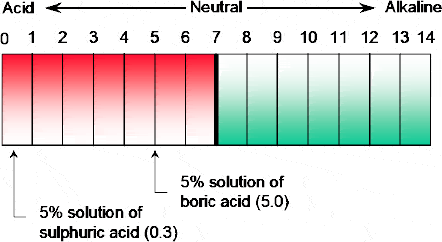
Bar primary current transformer
The major cause for errors in the CT is its leakage reactance which shall be minimized to limit the CT measurement errors. If the secondary winding of the CT is evenly distributed around the complete iron core as per Figure 3.3, its leakage reactance can be almost eliminated.

Bar primary CT with evenly distributed secondary winding
3.3 Use of CT for measurements
Generally current transformers are used to measure the currents for the following purposes:
- Tariff metering
- Reference Purpose
- Alarm/ Trip purposes
Tariff metering basically refers to the readings, which are directly linked to the charges payable by the consumer for the electricity consumed. It demands very high accuracy because both the consumer as well as the power supplier must be convinced about the correctness of the values recorded. However it is impossible to have meters with zero error. Hence it is generally considered acceptable to have tariff metering CT the lowest practically feasible error which is in the order of ± 0.2% exhibited by tariff meters used globally.
Current transformers are also used for providing reference values of currents for monitoring the consumption patterns. This is necessary because typical electrical distribution systems comprise of many branch consumers whose consumption values can vary either due to inherent load characteristics or due to other factors like poor efficiency, defects in load, fault conditions, etc. Reference purpose CTs are some times provided to cross check the consumption recorded by utility companies (normally referred to as check metering) and hence they also require equivalent accuracy as the tariff metering CT. However majority of the metering CTs are just for reading the primary current to get a broad idea about the performance of the equipment whose current is measured. Normally these requirements do not demand very high accuracy because an error of even 10% may not defeat the purpose for which the CT is used. Hence the reference purpose CTs mostly used in switchgears, motor control centers, Local control stations, etc. do not require very high accuracy as required by tariff metering CTs. An error of 2 to 5% is generally well accepted for these applications.
A CT used for current metering shall be able to provide a fairly accurate value in the secondary winding from 0 to 100% of the full load current. Hence a typical characteristic demanded from a metering current transformer is as per Figure 3.4. However it is practically impossible to have a linear primary- secondary current relationship over such a wide range. Nevertheless the importance of linear relationship cannot be ignored. The accuracy factor may also depend on the actual primary current with lower values introducing higher error percentages in the readings. Hence a CT used for measurements shall have its secondary current to be almost a true reflection of primary current at least for a load range of 50 to 120%.

Typical characteristics of metering CT
The point at which the curve reaches steady state or saturation is called knee point voltage of the CT. In the case of metering current transformers, normally the load current is not expected to go beyond the primary rated current of the CT. However under fault conditions, this is not the case and the fault currents may some times be many times the primary current. The secondary currents also tend to increase proportionately and can damage the connected instruments used for measurement purposes. Hence the CT used for measurements shall have its maximum secondary current restricted to little above full load value, which is normally achieved by core saturation. Core saturation offers a high reactance beyond a particular current thereby restricting the secondary current to within 120% of its rated value. After core saturation any further increase in primary current does not have any effect on the secondary current so instruments do not get destroyed under overload or fault conditions. Hence it is common to have metering CTs with a very sharp knee-point voltage at a relatively low value of primary current. A special nickel-alloy having a very low magnetizing current is used for the core in order to achieve the accuracy.
3.4 Representation of a current transformer
A conceptual representation of a CT is shown in Figure 3.5.
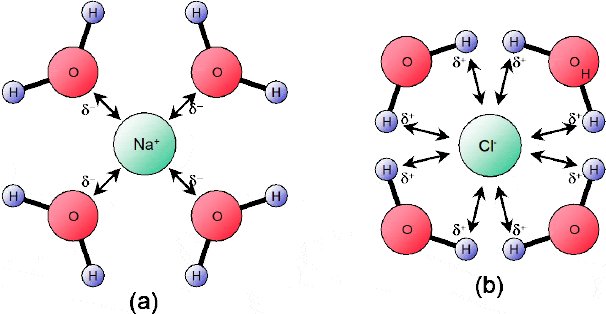
Concept of a current transformer
In electrical scheme drawings, a common symbol is used for both protection or metering type CTs. However the symbols used to depict current transformers differ in respect of IEC and IEEE standards. Typical symbols adopted in these standards are as given in Figures 3.6(a) and (b).

Symbols adopted for current transformers
The terminals are marked with P1, P2 for primary, S1, S2, etc for secondary with prefix numerals for multi core secondary CT terminals. Typical terminal markings of current transformers as per IEC are shown in Figure 3.7 while the markings adopted as per IEEE standards are as shown in Figure 3.8. These markings are also indicative of the polarity of the transformer as discussed later.

Terminal numbers adopted for current transformers (IEC)

Terminal markings adopted for current transformers (IEEE)
The core balance CT or the window CT is used for measuring the vector sum of currents through a three phase balanced load or a three phase and neutral unbalanced load. Under normal conditions the vectorial sum of these currents shall be zero. The secondary windings of the CT will have zero voltage under this condition. Any earth fault in the section beyond the CT will create an unbalance in the vectorial sum, generate a voltage in the secondary winding and drive a current through the relay connected to it. The three phase or three phase neutral cable cores or the busbars or the cables of windings (in case of motors) are passed through the window of the CT for detection of earth faults.
3.5 Typical connections of current transformers
For three phase current measurements, single phase current transformers (one in each phase) are connected in star or delta depending upon the application requirements. Figures 3.9 to 3.11 show the typical CT connections adopted in three phase systems. The use of CTs in one phase only is generally adopted as inputs for ammeters used in local control stations for large size motors. In these local metering applications, usually the CT is connected in the centre phase and is taken as representation of the load current for local monitoring purposes.

Star connection for current transformers

Delta connection of current transformers

Typical connections adopted for protection current transformers
3.6 Current transformer characteristics and classes
Similar to the voltage transformers, current transformers are defined by some main characteristics and technical parameters. Though this course mainly focuses on metering CTs, the characteristics of protection CTs are also covered to enable an overall view of the characteristics of the different current transformers and how they differ based on application requirements. Following are the main characteristics of current transformers:
- Magnetization characteristics
- Burden
- Rated voltage, thermal and short circuit currents
- Rated secondary current
- Accuracy
- Errors related to accuracy
- Responses under varying load/ system conditions
3.6.1 CT magnetization characteristics
Under actual operating conditions, when a primary current flows in a CT, its secondary winding generates a voltage depending upon the impedance connected to the winding so that a secondary current proportional to the primary current (as per CT ratio) flows in secondary. If the current is slowly increased from zero to the rated value, the voltage across the CT secondary also increases proportionately. A graph can be drawn to show how the secondary voltage of a CT changes with the change in primary current at specified secondary load impedance (burden). Due to the non-linearity of core, the characteristic follows the B-H loop characteristic of the magnetic core. The graph comprises of three regions:
- Initial region
- Unsaturated region
- Saturated region
These are graphically shown in Figure 3.12.

Magnetization curve of a current transformer
The magnetization characteristic of a CT is usually obtained using the secondary injection method. This takes the form of a curve showing the voltage variation across the secondary winding with varying current flow. The primary terminals remain open during this process. This curve describes the CTs performance in the best way.
The transition from the unsaturated to the saturated region of the open circuit excitation characteristic is a rather gradual process in most core materials. This transition characteristic makes a CT not to produce equivalent secondary current beyond certain point. This transition is defined by “knee-point” voltage in a CT, which fairly decides its accurate working range.
The knee point voltage is generally defined as the voltage at which a 10% increase in volts at the secondary side of the CT requires more than 50% increase in excitation (primary) current. For most applications, it means that current transformers can be considered as approximately linear up to this point. Beyond this value the CT output current gets saturated and it no longer represents the primary current. The saturation property is particularly useful in metering current transformers, to ensure that the current in metering devices is limited to its maximum allowable value to prevent damage to the instruments.
3.6.2 Rated burden
The burden of a current transformer is the apparent power in volt amperes (VA) absorbed at a specified power factor and at the rated secondary current. The CT secondary winding is connected in series with the coils of instruments like ammeter, kW meter, kWH meter and relays. Though some applications use independent CTs for a particular meter or a relay, it is quite common to have one CT feeding multiple instruments or relays. Each of these coils has some resistance value. As the number of coils increases, the total resistance increases and thus the secondary voltage has to increase to drive the required secondary current. However, the saturation voltage of a transformer is fixed and an increase in burden means that saturation happens at a lower value of current and therefore transformation will no longer be accurate. Hence it is utmost necessary that the burden of a CT is well assessed during selection stage depending on the number and type of coils to be connected.
In olden days, the relays were mostly of electro mechanical type with meters being mostly analog type. These analog devices usually have higher VA ratings (due to their higher internal impedance) compared to modern digital instruments/relays and hence the burden of the CTs used in older electrical installations were invariably specified and selected as 15 to 30 VA in almost all the applications. The advent of numerical relays and electronic meters has made the burden of these devices in the order of fractions. Hence it is quite common to come across CTs with 5 VA or 10VA in modern installations. The standard values of rated output are 2.5, 5, 10, 15 and 30 VA. In today’s installations, values above 30 VA are rare and provided only if any specific application demands such a higher value.
3.6.3 Rated voltage, thermal and short circuit currents
Voltage ratings for current transformers: Current transformers are always rated at the line-to-line voltage of the three-phase system on which they will operate. A 13.8 kV current transformer, for example, is designed for use on a 13.8 kV three-phase system. The actual voltage from the current transformer primary winding to ground is only 7.9 kV.
It has become standard practice to apply transformers with an actual voltage higher than the insulation class value. This is done on the basis that if the power system is designed in such a way (grounded, usually) that the line-to-ground voltage can never be more than 70% or 80% of the line-to-line value, lower-voltage-rated lightning arresters can be used and the insulation is protected from all the higher voltages to which it might otherwise be subjected.
The other major technical parameters of the CT are given below, which are as defined in IEC standards. These values shall be proved by various tests to be performed on the current transformers.
Rated short-time current: A current transformer may be overloaded when system short circuit currents are flowing for short periods of time. Standard times for which the CT must be able to carry rated short-time current (STC) are 0.25, 0.5, 1.0, 2.0, or 3.0 seconds. A CT with a particular short-time current/ time rating will carry a lower current for a longer time in inverse proportion to the square of the ratio of the current values. The converse, however, cannot be assumed, and larger current values than the STC. rating are not permissible for any duration unless justified by a new rating test to prove the dynamic capability.
Rated short-time thermal current (Ith): The r.m.s. value of the primary current which a CT will withstand for one second without suffering harmful effects when the secondary winding is short-circuited.
Rated dynamic current (Idyn): The peak value of the primary current which a transformer will withstand, without being damaged electrically or mechanically by the resulting electromagnetic forces with the secondary winding short-circuited. The value of the rated dynamic current shall normally be 2.5 times the rated short-time thermal current and it shall be indicated on the rating plate when it is different from this value.
Rated continuous thermal current (Icth): The value of the current which can be permitted to flow continuously in the primary winding without exceeding the specified temperature rise, when the secondary winding is loaded with the rated burden. The standard value of rated continuous thermal current is the rated primary current. When a rated continuous thermal current greater than rated primary current is specified, the preferred values should be 120 % to 150 % and 200 % of rated primary current.
Exciting current: The r.m.s. value of the current taken by one secondary winding of a current transformer, when a sinusoidal voltage of rated frequency is applied to this secondary terminals with the primary and other secondary windings are open-circuited.
3.6.4 Rated secondary current
The secondary current of a current transformer is invariably 1 ampere or 5 amperes, which helps in standardization of relays and meters connected to them. It can be noted that while measuring large current values, the turns ratio for an one ampere CT shall have to be more compared to 5 ampere CT. Accordingly 1A CTs are comparatively more costlier than 5 ampere CTs. A lower secondary current of the order of 1 ampere helps in reducing the voltage drop as well as losses in the secondary circuit and hence is generally preferred in large installations with long secondary leads. Where the current transformers are used for reference purposes or where the primary ratings are not very high, a 5 ampere CT would be sufficient to serve the purpose.
3.6.5 Accuracy
The accuracy of a current transformer depends on whether it is applied for metering or for protection purposes. As seen earlier, a metering CT demands a characteristic which ensures that its secondary current is directly proportional to the primary current with least possible error. Accordingly accuracies are defined in terms of the allowable errors for metering CT.
For example, the metering CT is defined by values 0.2, 0.5, etc representing the allowable percentage errors in the secondary currents over a range of about 20 to 120% of the rated primary current. On the other hand, protection CTs are expected to give true representation of primary currents under fault conditions but the accuracy need not be in terms of decimal values. Hence a protection CT defined with an accuracy of 5P20 represents an accuracy of +/- 5% at 20 times the rated primary current and not the normal range of the primary current. The figure “20” is termed the Accuracy Limit Factor (ALF). Saturation of the CT will only occur beyond this value.
IEEE standard specifies an alphabet to be used as the second part of the CT accuracy to designate the application for which the CT is rated. Metering CTs are designated with letter B, while CT’s used for relay applications are designated with different letters as given below.
- C or K – CT with low leakage flux, the leakage flux in the core of the transformer does not have an appreciable effect on the ratio and the accuracy of the CT can be calculated.
- K – Current transformers with K classification shall have a knee-point voltage at least 70% of the secondary terminal voltage rating
- T – CT with significant leakage flux, the leakage flux in the core of the transformer has an appreciable effect on the CT ratio (Factory test needed to determine the accuracy).
3.6.6 CT errors
The error in a CT shall be within required limits based on the application requirements. The errors are mainly introduced because the primary current contains two components as given below.
- An exciting current which magnetises the core and supplies the eddy current and hysteresis losses and is usually lost within the CT itself.
- Remaining primary current component which is available for transformation to secondary current in the inverse ratio of turns.
The exciting current is not getting transformed and is therefore the cause of transformer errors, which means it shall be minimized as much as possible to get more accurate secondary currents. The more the exciting current, the lesser would be the accuracy.
The amount of exciting current drawn by a CT depends upon the core material and the amount of flux that must be developed in the core to satisfy the output requirements of the CT. That is, to develop sufficient driving voltage required across the secondary winding to push secondary current through its connected load or burden. Hence the selection of core materials plays an important role in getting higher accuracy.
The error which a CT introduces into the measurement of a current and which arises from the fact that the actual transformation ratio is not equal to the rated transformation ratio is called the Ratio error or current error as per IEC. The current error (or ratio error) expressed in percent is given by the following formula:
Current error % = (Kn × Is – Ip ) × 100 / Ip
Where
- Kn is the rated transformation ratio
- Ip is the actual primary current and
- Is the actual secondary current when Ip is flowing, under the conditions of measurement.
The other factor introducing errors in measurements is the relative phase angle difference in the primary and secondary current vectors. For an ideal transformer the primary and secondary current vectors shall be in phase with zero displacement error i.e. the secondary vector angle shall be exactly the same as the primary vector. However in practice this is not achievable and an error is introduced in phase angle between the primary and secondary currents. The phase displacement is referred to as positive when the secondary current leads the primary current and is expressed in minutes or centi-radians.
Composite Error: The composite error is defined as the rms. value of the difference between the instantaneous values of the primary current and the instantaneous values of the actual secondary current multiplied by the rated transformation ratio under steady-state conditions. The positive signs of the primary and secondary currents are used in defining the composite error corresponding to the convention for terminal markings.
The composite error εc is generally expressed as a percentage of the rms. values of the primary current as per following formula, with the parameters as noted earlier and T being the time duration of one cycle.

In the case of current transformers used for metering, the composite error should be greater than 10 %, in order to protect the apparatus supplied by the instrument transformer against the high currents produced in the event of system fault. The rated instrument primary limit current (IPL) is an important factor for measuring transformers, which is defined as the value of the minimum primary current at which the composite error of the measuring current transformer is equal to or greater than 10 %, with the secondary burden equal to the rated burden of the CT. Yet another other factor is the Instrument Security Factor (FS) which is equal to the ratio of rated instrument limit primary current (IPL) to the rated primary current, which basically indicates the factor of safety for the instruments being connected.
3.6.7 CT responses
Following points give a brief overview of the effects of system conditions on current transformer operation and its measurement values.
- Change in primary current will have a direct proportional change in the secondary current value.
- With increase in burden in the secondary circuits, the error of measurements increases, though not directly proportional.
- In case of inductive burdens in secondary circuits, the secondary current lags the secondary induced voltage. Under this condition, the actual transformation ratio is always greater than the turns ratio and the ratio error increases with increase in lagging powerfactor angle.
- On a similar basis, in case of capacitive burdens, the secondary current leads the induced voltage, and the actual transformation ratio is always less than the turns ratio. This also means that the ratio error would increase on the negative side with increase in leading powerfactor angle.
- A change in the incoming supply frequency has an indirect relationship with the flux density. An increase in frequency will result in a proportionate decrease in the flux density and vice versa.
3.6.8 Polarity
Polarity is important in ensuring the correct operation of the relays and metering results. For some of the relay applications the direction of current flow is very important. Polarity in a CT may be considered same as identification of positive and negative terminals of a battery. The terminals of CT are usually marked by P1 and P2 on the primary and S1 and S2 on the secondary to match the current flows as shown in Figure 3.13. Standards indicate that at the instant when current is flowing from P1 to P2 in primary, the current in secondary must flow from S1 to S2 through the external circuit and the markings shall be ensured to meet this requirement. This marking is very important for the relays to get true current directions in specific applications like reverse power detection when two or more sources are feeding a common bus in parallel. A reversal of connection will lead to malfunction and can cause undesired tripping.

Polarity marking of a current transformer

Current direction reversals based on polarity of a CT
3.7 Metering and protection type current transformers
A metering CT is usually specified with the following parameters:
- Rating: XXX/ 5 or XXX/1 amps
- Burden: 15 VA
- Accuracy Class: 0.2, 0.5, etc
- Insulation class: B, F, etc
The metering CT requirements are defined by various accuracy classes and the basic requirements of these specifications shall be understood to ensure that the test results are verified before accepting a current transformer. Table 3.2 defines the applicable current error in line with IEC requirements for the different accuracy classes of the metering current transformers.
Allowable error of measurements in metering CT’s
| Accuracy class | ± Percentage current (ratio) error at percentage of rated current | |||
| 5 | 10 | 100 | 120 | |
| 0.1 | 0.4 | 0.2 | 0.1 | 0.1 |
| 0.2 | 0.75 | 0.35 | 0.2 | 0.2 |
| 0.5 | 1.5 | 0.75 | 0.5 | 0.5 |
| 1.0 | 3.0 | 1.5 | 1.0 | 1.0 |
Table 3.3 gives the acceptable phase displacement errors for the different classes of current transformers, as per IEC.
Allowable phase displacement errors in metering CTs
| Accuracy class | ± Percentage current (ratio) error at percentage of rated current | |||||||
| Minutes | Radians | |||||||
| 5 | 20 | 100 | 120 | 5 | 20 | 100 | 120 | |
| 0.1 | 15 | 8 | 5 | 5 | 0.45 | 0.24 | 0.15 | 0.15 |
| 0.2 | 30 | 15 | 10 | 10 | 0.9 | 0.45 | 0.3 | 0.3 |
| 0.5 | 90 | 45 | 30 | 30 | 2.7 | 1.35 | 0.9 | 0.9 |
| 1.0 | 180 | 90 | 60 | 60 | 5.4 | 2.7 | 1.8 | 1.8 |
It is to be noted that a metering CT is expected to have the least error from 100% to 120% of its rated primary current. The allowable phase displacements are more at lower ranges and less at rated current. The protection CT on the other hand is not expected to give an accurate feedback of the current under normal operating ranges. However they shall be able to offer the actual current to the relays under fault conditions. Saturation of core at fault currents may not give the true condition to the relay and hence the relay may not trip when needed, which in turn may damage the costly main equipment for which it is used. Hence the protection CT requires core saturation to occur at much higher values compared to the metering CT.
Typical tolerance values for the accuracy classes for protection CTs are as per Table 3.4.
Allowable phase displacement errors in current transformers
| Accuracy class | Current error at rated primary current | Phase displacement at rated primary current | Composite error at rated accuracy limited primary current % | |
| % | Minutes | Centi radians | ||
| 5P | ± 1 | ± 60. | ± 1.8 | 5 |
| 10P | ± 3 | N.A | N.A | 10 |
Higher accuracy is not a major requirement for protection current transformers. Protection CTs are expected to ensure that the error in measurement at the worst condition does not differ by more than 10 to 20% compared to 0.2%, 0.5%, 2%, etc required by metering CT’s. Further, the protective relays are not normally expected to give tripping commands under normal conditions. On the other hand the relays are concerned with a wide range of currents from acceptable fault settings to maximum fault currents which are many times the normal rating. Larger errors may be permitted and it is important that saturation is avoided wherever possible to ensure positive operation of the relays mainly when the currents are many times the normal currents.
Figure 3.15 shows the typical characteristic required for a protection CT.

Magnetization curve of a protection CT
Table 3.5 summarizes some of the major differences between a metering and a protection current transformer.
Comparison of metering and protection current transformers
| Characteristics | Metering CT | Protection CT |
| Accuracy | Defined with accuracy classes like 0.2, 0.5, 1.0, etc. | Defined with a numeral follwed by P; 5P and 10P are the common |
| Composite error | Shall be greater than 10% at rated burden | Should be less than 5% or 10% at rated burden |
| Transient responses | Not critical | Important to ensure proper protection |
| Errors | Both ratio and phase angle errors are important | Ratio error is an important factor |
| Use for other | Not useful for relay | Used for metering and relay |
| application | applications | applications in modern digital relays |
| CT Saturation | Shall saturate at around 120% rated primary current to safeguard the instruments | Saturation shall be at around primary current |
Class PS/X CT
In the case of balanced protection systems, CTs with a high degree of similarities in their characteristics are necessary. These requirements are met by Class PS / or class X CTs. Their performance is defined in terms of knee-point voltage (KPV); the magnetizing current (Imag) at the knee point voltage, or 1/2 or a 1/4 of the knee-point voltage; and the resistance of the CT secondary winding corrected to 750 C. Accuracy is defined in terms of the turns ratio. Class X current transformers are used for differential protection and restricted earth fault applications, which require that the current transformer characteristic shall match at both the ends where the currents are measured.
3.8 Standards for current transformers
Separate standards (parts) are available in IEC for specifying the requirements of current transformers unlike IEEE which specifies the requirements in a common standard for voltage transformers and current transformers. However both IEEE and IEC have separate standards for protective current transformers, which indicate the importance of current transformers for protective relay applications. Following is the list of main standards adopted for current transformers, with some special standards for protection current transformers.
- IEEE Std C57.13 – Standard requirements for instrument transformers.
- IEEE Std C37.110 – IEEE guide for the Application of Current Transformers used for protective relaying purposes.
- IEEE C57.13.1- IEEE Guide for Field Testing of Relaying Current Transformers
- IEC 60044-1 – Current transformers.
- IEC 60044-6:1992, Instrument transformers – Part 6: Requirements for protective current transformers for transient performance.
Similar to the standards for any electrical equipment, these standards also basically specify the requirements to be met by the current transformers related to:
- Manufacture and designing requirements
- Testing standards
- In-service requirements.
3.8.1 Design and manufacturing requirements
The ambient temperature, altitude and humidity are some of the important factors that can influence the design and working of the current transformers. The altitude to be considered for the design of a CT is usually up to and including 1000mtrs above sea level. Any altitude beyond this value would require additional safety margins to be considered in the insulation of the CT windings.
As per IEC 60044-1, current transformers are broadly classified into three categories as given in Table 3.6 and it can be noted that the same are applicable for VTs also.
Categories of current transformers based on ambient temperature (IEC)
| Category | Minimum temperature °C | Maximum temperature °C |
| –5/40 | –5 | 40 |
| –25/40 | –25 | 40 |
| –40/40 | –40 | 40 |
3.8.2 Tests as per standards
Similar to other equipments, the standards specify the routine and type tests to be conducted on the CTs before they are delivered or put into service. The tests are classified as routine tests, type tests and special tests.
Routine tests
Following are the standard routine tests specified in International standards for the current transformers:
- Verification of terminal markings
- Power-frequency withstand tests on primary windings
- Partial discharge measurement (Um ≥ 7.2 kV)
- Power-frequency withstand tests on secondary windings
- Power-frequency withstand tests between sections
- Inter-turn overvoltage test
- Determination of errors
Type tests
Following are the type tests specified for current transformers, which shall be conducted on each type of CT manufactured but need not be repeated for each delivery.
- Short-time current tests
- Temperature-rise test
- Lightning impulse test
- Switching impulse test
- Wet test for outdoor type transformers
- Determination of errors
- Measurement of the radio interference voltage (RIV)
Special tests
Special tests to be considered for specific client/ site requirements are listed below and are done based on agreement between purchaser and manufacturer.
- Chopped lightning impulse test on primary winding
- Measurement of capacitance and dielectric dissipation factor
- Multiple chopped impulse test on primary winding
- Mechanical tests (tests keeping CT in horizontal and vertical arrangement)
- Measurement of transmitted over voltages
3.8.3 In-service requirements
In case of CTs installed in a place where the ambient temperature can vary, (with temperatures significantly outside the values in Table 3.6) shall preferably be specified and designed to meet the following minimum and maximum temperature ranges.
- –50 °C and 40 °C for very cold climates
- –5 °C and 50 °C for very hot climate
Some of the main considerations related to temperature and wind conditions are as below:
- Average value of the ambient air temperature, measured over a period of 24 h, does not exceed 35 °C
- Solar radiation up to a level of 1000 W/m2 (on a clear day at noon) should be considered
- The wind pressure does not exceed 700 Pa (corresponding to 34 m/s wind speed)
3.9 Insulation types for current transformers
Based on the operating voltage, environmental conditions, space availability, etc., different types of insulation materials are adopted in the construction of a current transformer. In this section, we will have a brief review on the various types of insulation adopted for the current transformers.
The permissible temperature rise of a current transformer under normal operation is defined based on the insulation adopted and when the primary is carrying the rated continuous thermal current with a unity PF rated burden at 40 deg C ambient temperature, as a standard. Table 3.7 gives the allowable temperature rise for various classes of insulations adopted in a current transformer.
Acceptable temperature rise of current transformers
| Insulation class | Maximum temperature rise in K |
| All classes immersed in oil | 60 |
| All classes immersed in oil and | 65 |
| hermetically sealed | |
| All classes immersed in bituminous | 50 |
| compound | |
| Classes not immersed in oil or | |
| bituminous compound : | |
| Y | 45 |
| A | 60 |
| E | 75 |
| B | 85 |
| F | 110 |
Following paragraphs give the characteristics and features of commonly adopted insulation types in current transformer constructions.
Paper Insulation: In the outdoor type current transformers, paper insulation impregnated with mineral oil is used. The paper used is high grade all woodcraft paper with good mechanical and insulating properties. The paper must be free from conducting particles, should have a high electrical breakdown value, less ash content, and good absorbing properties.
Adequate thickness of the insulating paper is applied on primary (for dead tank type) or secondary cores (for live tank types). The insulation arrangement should be such that the electrical stress produced should be uniform throughout the insulation thickness. For high voltages (more than 132 kV), it becomes necessary to provide intermediate conducting layers to form the capacitor grading for reducing and uniformly distributing the electrical stresses.
Tape wound: these are used in ring type CTs, with polyester or fiberglass tape.
Resin cast: these are used in ring type CTs, with polyester or PVC tape and then cast into resin. Resin works as insulation and provides environmental protection. Terminals and supporting clamps are also cast in the resin.
Oil filled: in these, oil is used as insulation and provides cooling. These are generally the high tension types of CTs.
Cycloaliphatic Epoxies: the cycloaliphatic epoxy (CEP) was first introduced in outdoor insulators in the late 1970s due to its strong resistance to humidity, ultraviolet (UV) radiation, outdoor pollutants, and chemicals, as well as its outstanding mechanical strength and dielectric properties.
Aromatic Polyurethanes: Aromatic polyurethane (PUR) elastomers are another cost-effective insulation for medium voltage electrical equipment. There are approximately 14 general types of PUR successfully commercialised for a wide variety of applications, including instrument transformers. Polyurethane rubber raw materials are in the form of liquid, which permits them to be pumped, metered, mixed, and dispensed by machines under strict conditions controlling temperature and ingredient proportions.
The fully cured PUR elastomers possess a desirable balance and can be easily manufactured (via vacuum casting). The PUR elastomers are known for their mechanical toughness and their good electrical properties.
Hydrophobic cycloaliphatic epoxy: in the early 2000s, a global epoxy resin supplier introduced a hydrophobic version of CEP called Hydrophobic Cycloaliphatic Epoxy (HCEP) in the market. HCEP is formulated to sustain surface hydrophobicity better than its CEP counterpart upon prolonged exposure to aggressive outdoor environments without sacrificing other desirable chemical and mechanical properties.
A hydrophobic insulation surface is desirable for outdoor applications because it prevents water from developing wet, resistive, conductive surfaces. Leakage currents are therefore reduced, which helps to reduce the flashover risk. The result is enhanced reliability. Furthermore, less discharge activity means less attack and therefore less surface erosion, which extends the transformer’s life.
Transformer oil: oil is used in instrument transformers mainly as an insulating medium. It also plays a role in cooling in the case of high current CTs, designed for 600 Amps and above.
Sulphur-hexafluoride (SF6): this is not poisonous, not inflammable, and has good dielectric, arc-quenching, and thermal capabilities. These characteristics make it desirable for wide-use in medium voltage and high voltage equipment. Gas insulation is non-ageing, compressible, less sensitive to humidity and the presence of air, all of which are important for current transformers. Current transformers which use SF6 are explosion proof.
3.10 Hazards associated with current transformers
Following can lead to some hazards associated with CTs and caution is needed to take care of these factors.
- Open circuiting of secondary terminals
- Explosions
- Non grounding
3.10.1 Open circuiting of CT secondary
A current transformer secondary should never be open-circuited while main current is passing through the primary winding. An open circuit can also happen when a connected load is removed from the secondary, like removal of an instrument for repair work, etc. When the secondary is open with the main primary current still flowing, most of the primary current becomes magnetizing current. To maintain electrical stability, the vector angles of the current change in such a way as to keep the total current in the primary the same as before. Since the primary winding is carrying mostly the magnetizing current, the flux in the core shoots up to a high level and a very high voltage appears across the open secondary terminals. Current transformers normally employ very high turns ratios like 5/100, 1/200, 1/1000, etc. Hence, the open circuit voltage across secondary winding under this condition can reach dangerously high levels and can lead to:
- Break down of insulation of the winding
- Safety hazard to personnel
- Flashovers
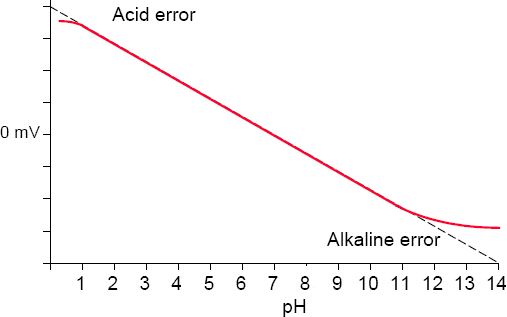
Open circuiting of CT
The high flux also saturates the core and results in strong residual magnetism left in the core, which increases magnetization current during subsequent usage and introducing error in the transformation ratio. Hence it is very vital that the secondary of a CT winding shall never be open circuited during live conditions and it is necessary to short the secondary terminals before removing any secondary load while current is flowing through the primary winding. Shorting links are standards in almost all the relays operating with secondary current from current transformer. Metering instruments do not generally come with such shorting links and hence it is usual practice to specify special shoring links as part of the CT terminals.
It is also recommended to use lugs which are circular in shape so that the cable leads cannot be easily removed from the instrument and relay terminals. A pin type termination is considered as a safety hazard while carrying out switchgear terminations.
3.10.2 Explosion
The causes of explosions in current transformers are same as those we reviewed for voltage transformers:
- Loss of oil
- Unclean bushings
- Loose primary connections
- Improper grounding
- Reduced clearances
- Lightning strikes
It is necessary that operating personnel follow the safety procedures noted below while working with current transformers (instrument transformers in general)
- The basic condition is that the personnel working with the equipment have proper knowledge of the operation and maintenance of the equipment and in case it is lacking, a knowledgeable supervisor shall be personally monitoring the maintenance jobs giving step by step instructions.
- Use of appropriate personal protective equipment including fire retardant clothing, hard hats, safety glasses and rubber gloves.
- De-energising the circuits when working closer to the transformer units.
- Ensure suitable precautions are taken while removing the lid from a suspected faulty transformer by operating the pressure relief valve. In case it is not provided with any such valves, tie a sling over the lid before loosening the attachments.
- Ensure ground connections for all the metallic cases, frames, bases, etc. of instrument transformers.
3.11 Applications of current transformers
It can be concluded that the basic purpose of CT is to measure current and the measured value is used for metering or relay applications. Following are some of the typical and common applications for which current transformers are used.
- Over-current or under-current protection: The current transformer can continuously monitor the current and drive an over-current relay or an under current relay as a switch, when the main current exceeds or goes below a preset value of current. The output current of the current transformer activates the relay and the protective circuit.
- Measurement of very high currents: A current transformer steps down the current for a low current meter to monitor the high current circuit. Alternatively, a resistor can be connected in series with the current transformer secondary winding to develop a voltage across the resistance so that when the secondary current passing through this resistor falls below or goes above a preset value, an alarm or trip can be initiated.
- Isolation transformer in current metering circuits: A current transformer while stepping down the current also acts as an isolation transformer to keep the metering circuits isolated from the very high voltages of the primary circuit.
- Remote circuit current status monitoring system: A current transformer can also be loaded with an LED as a discrete current indicator to monitor the circuit condition in a remote location. When the remote circuit current is flowing, the current transformer will generate enough current to light an LED to indicate that the current flowing. When the remote current ceases to flow, the LED gets turned off.
Overcurrent relay applications
Figure 3.17 shows an over current relay application. In this application, the fuses bypass the AC trip coils. Under normal conditions, the fuses carry the maximum secondary current of the CT due to the low impedance path. Under fault conditions, Isec having reached the value at which the fuse blows and operates trip coil TC to trip the circuit breaker. The inverse current characteristic of the fuse enables to achieve a limited degree of grading.
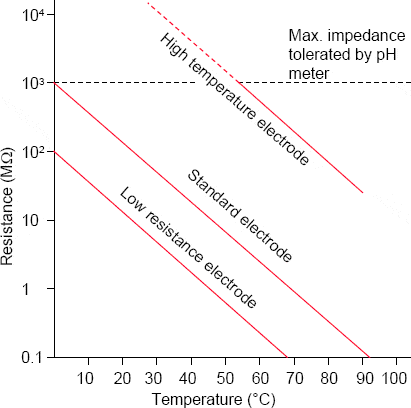
CTs for Overcurrent Use in series trip coils
Overcurrent & Earth fault application
There are two possible methods of connection as shown in Figures 3.18 (a) and (b). Figure 3.18 (b) is the most economical arrangement for this application.

CTs for Overcurrent and earth fault protection with series trip coils in all phases

CTs for Overcurrent and earth fault protection with series trip coils in two phases
3.12 Summary
Current transformers are used to produce smaller currents of 1 ampere or 5 amperes for the purpose of relay and metering applications. The current transformer construction consists of a common magnetic core linking the primary and secondary windings like a standard transformer. The basic theory of current transformer is similar to that of a voltage transformer, with the turns ratio deciding the secondary current for a particular primary current. The ratio of primary to secondary current is inversely proportional to the number of turns in the respective windings. Unlike voltage transformer, the CT secondary winding is connected in series with the current coils of the relays and meters.
The current transformers are categorized based on voltage, insulation, area of use, construction, application and output currents. Construction types basically vary between current transformers based on the magnitude of currents handled. For smaller currents, a wound primary type is adopted whereas for larger currents, bar primary types are adopted. The third type is window construction which is generally used for detecting earth faults in cable circuits.
CTs are mainly used for metering and relay applications. The metering can be either for tariff purposes or for reference purposes. Though accuracy is important in all the applications, the accuracy for tariff metering shall be the highest and general standard is to ensure an error of less than 0.2% for major installations. It is generally expected that the secondary of the metering CT shall be able to provide a linear output current in the range of 50 to 120% of the rated primary current for which the CT is used. However to protect the meters at higher currents, the CT is allowed to get saturated beyond 120%. Accuracy limit factor and instrument security factors shall be duly considered in metering CTs to protect the instruments connected. However the protection CTs are expected to correctly operate under short circuit and fault conditions, which are defined by accuracy class as 5P20, 10P20, etc.
The symbol for CT as per IEC is a small circle with the ratio, accuracy class and burden specified by the side of the symbol. IEEE adopts CT symbol in the form of windings. The terminals are identified with P and S in the case of IEC standards, while they are identified with H and X in the case of IEEE standards. Current transformers are always manufactured as single phase types and are connected externally in star or delta for measuring three phase currents.
The magnetization characteristic of a CT is divided into three regions – initial, unsaturated and saturated regions and these characteristics indicate the typical accuracy maintained by the current transformers for specific ranges. Knee point voltage is an important characteristic, which is used for relay applications, mainly in case of differential CTs to match the two sets of current transformers used for differential protection. The rated burden of a CT is the maximum load that can be connected and it is usual to have CTs with burdens in the order of 15 VA to 30 VA.
Current transformers are also defined with other electrical performance characteristics like rated voltage, rated thermal current, short time current, dynamic current, etc. The rated secondary current is an important factor that decides the requirement of the meters and relays to be connected to a CT.
Current error (ratio error) and phase displacement error affect the outputs of a current transformers and the accuracy of final measured values. The composite error defines the requirements of a metering and protection type CT with a higher composite error of above 10% accepted for a metering application, basically to safeguard the meter. Accuracy of a current transformer indicates the percentage error allowable at a minimum range of 50 to 120% of rated current.
Standards for current transformers specify the CT requirements for a normal ambient of 40 deg C and an altitude of up to 1000 m above sea level. Installations with other site conditions would require suitable corrections and additional construction features. The International standards also specify the routine, type and special tests applicable for the current transformers before they are put into service.
One of the important precautions to be taken while using a current transformer is not to open its secondary when it is in service without shorting the secondary terminals. The open circuit operation of a CT can develop a very high voltage at the secondary terminals which can cause harm to insulation as well as operating personnel. Like any electrical equipment CTs shall be handled, operated and maintained considering all safety precautions.
4
Metering Devices and Principles
In this chapter we will review the various types of meters, their classifications and the basic operation principles. We will also briefly discuss the various electrical parameters measured, particularly with respect to alternating current systems, the different meters employed in electrical systems, their features, specific requirements, etc. As digital meters are employed in many modern installations, we will also review the special features of digital meters.
Learning objectives
- Different types of meters
- Classification of meters
- Measurement principles
- Alternating current system, Peak value, RMS value
- Active and reactive power
- Circuit configurations (direct and using instrument transformers)
- Ammeter and voltmeter
- Frequency meter
- Power factor meter
- Power and energy meter
- Measurement of current, power and frequency
- Integrating Instruments
- Registering Instruments
- Recording Instruments
- Digital Instruments
- Instrument mounting and wiring
4.1 Types of meters
The meters intended to be used in electrical installations must be suited to the system of supply, whether DC or AC, and shall match the voltage, frequency, number of phases and the load to be measured. The continuous current rating of the meter shall not be less than the maximum load of the system to which it is connected. Modern meters have a maximum continuous current rating of at least 120% of the rated current and a voltage rating of at least 110% of the rated voltage.
A voltmeter displaying the value of voltage indicates the presence and magnitude of voltage. An ammeter displaying the value of current helps the operators to know whether the equipment is correctly loaded enabling them to optimize loading and avoiding overloading of any equipment. There are other many derived parameters using the above fundamental parameters of voltage and current viz., power factor, power, energy, etc. An indication of a derived parameter like power factor alerts the operator to take appropriate action when the power factor goes below the prescribed limits. Continuous measurement of frequency, monitoring of the same to control it to be well within the prescribed limits is vital for maintaining the healthiness of a power system. Measurement of electrical power helps the operator to know the extent of loading of electrical equipment viz. power/distribution transformers, motors, lighting loads etc.
Active energy measured in kilo watt hours is the primary parameter based on which electricity is either sold or bought. Other derived parameter like demand expressed in kVA or kW helps the consumer to schedule the electrical loads optimally. In an industrial environment, continuous monitoring of the demand helps the consumer to stagger the operation of various units optimally. Utility companies employ power factor capacitors at their distribution substations to maintain the power factor at an acceptable value so that distribution cable sizes are optimized. The monitoring of reactive power is vital for control of the power factor compensation so that power factor is not over corrected. Leading power factor may lead to over voltages that can be detrimental to the system components. Hence kVAR monitoring is also an important factor for an efficient distribution system.
Based on the operating principle and the type of construction, metering instruments are broadly classified into:
- Electromechanical or Analogue type
- Electronic or Digital or Numeric types
Though electromechanical types have been in use from the time metering was considered necessary, they are slowly getting replaced with digital meters/ relays with electronic circuits.
4.1.1 Electromechanical type
Use of galvanometers is very common in laboratory experiments to detect and measure the flow of current in electrical circuits. Figure 4.1 shows the construction principle of a basic galvanometer adopted in electromechanical meters.

Basic Galvanometer operation
The instrument basically consists of a coil located in a magnetic field and when a current is passed through the coil, the coil experiences a torque proportional to the current. It is possible to have an opposing force like a spring to oppose or balance the coil’s movement so that the amount of deflection of a needle attached to the coil is proportional to the current passing through the coil. Such “needle movements” are the heart of the electromechanical meters.
4.1.2 Digital meters
The principle of digital measurements is based on sampling and digitizing the instantaneous values of voltage and current at regular time intervals, and processing this data using formulas to indicate the effective values of AC or DC power. Digital meters include the sub components of analogue to digital converters that generate pulses proportional to the inputs, counters, integrators, display circuits, etc to produce the desired output. With today‘s high computing power of digital signal processors and fast analogue to digital (A/D) converters having high accuracy it is comparatively simple to measure reactive power, phase shift, power factor and apparent power. In many cases it is also necessary to measure the frequency spectrum of the power network signals. Digital processing of analogue signals guarantees short- and long-term stability as well as high accuracy of measurement. Usually, digital devices contain auto calibration techniques and self test features. Digital meters normally show the readings using LED (Light Emitting Diode) display or LCD (Liquid Crystal Display).
4.2 Classification of meters
Meters may be further classified into following types based on their method of functioning.
- Indicating meters
- Integrating meters
- Recording meters
Those instruments which directly indicate the value/ quantity of the electrical parameter at the time when it is being measured are called indicating instruments e.g. ammeters, voltmeters and wattmeters. In such instruments, a pointer moving over a graduated scale, directly gives the value of the electrical quantity being measured. These meters help the operator to know the values of circuit parameters like current, voltage and power at any given instance.
An integrating meter, as the name implies, integrates the instantaneous values over a particular time period. A well known example is the energy meter (kilo watt hour meter) that presents the cumulative value of electrical energy over a prescribed interval of time, viz. energy consumed every day, every month etc.
While indicating meters and integrating meters help the user to obtain the desired measurement values at the time of observation, these types of meters do not provide the information pertaining to the past. Recording meters record the values of any measurement over a time range preceding the time of observation either electronically or otherwise, which can be retained for reference at any time in the future.
Electrical power is generated and used in forms of AC or DC (Alternating current and Direct current). Thus measurements are required for both AC and DC. However most electrical systems are predominantly AC based and therefore brief description of the parameters normally measured and monitored in AC systems are given in the following paragraphs.
4.3 Measurement principles
An important requirement in indicating instruments is the arrangement for producing deflecting or operating torque (Td) when the instrument is connected in the circuit to measure an electrical parameter. The deflecting torque causes the moving system (and hence the pointer attached to it) to move from zero position to indicate on a graduated scale the value of electrical quantity being measured. The actual method of producing the deflecting torque depends upon the type of instrument and will be discussed while dealing with the particular instrument.
4.3.1 Controlling torque
If deflecting torque were acting alone, the pointer would continue to move indefinitely and would swing over to the maximum deflected position irrespective of the magnitude of current (or voltage or power) to be measured. This necessitates providing some form of controlling or opposing torque (Tc). This controlling torque should oppose the deflecting torque and should increase with the deflection of the moving system. The pointer will then be brought to rest at a position where the two opposing torques are equal i.e. Td =Tc. The controlling torque performs two functions:
- It increases with the deflection of the moving system so that the final position of the pointer on the scale will be according to the magnitude of current (or voltage or power) to be measured
- It brings the pointer back to zero position when the deflecting torque is removed. If deflecting torque is not provided, the pointer once deflected would not return to zero position on removal of the deflecting torque
The controlling torque in indicating instruments can be provided by one of the following two methods:
- By one or more springs (Spring control)
- By weight of moving parts (Gravity control)
4.3.2 Damping torque
The degree of damping decides the behaviour of the moving system. If the instrument is under-damped, the pointer will oscillate about the final position for some time before coming to rest. On the other hand, if the instrument is over-damped, the pointer will become slow and lethargic. However, if the degree of damping is adjusted to such a value that the pointer attains the final position quickly without overshooting or oscillating about it, the instrument is said to be dead-beat or critically damped. Figure 4.2 shows the graph of under-damping, over damping and critical damping (dead-beat). Damping torque in indicating instruments can be provided by (i) air-friction (ii) fluid friction and (iii) eddy currents. These mechanisms produce opposing torque depending upon the speed of movement of the pointer assembly.

Damping in analogue meters
4.4 Alternating current system parameters
The current in an AC system follows the same sinusoidal waveform as the applied voltage, except that its magnitude is based on the impedance Z of the circuit. Due to the inductive nature of the circuit the resultant current in the conductor will lag the applied voltage by an angle Φ. The instantaneous positions of voltage and current in relation to each other can be vectorialy indicated as shown in Figure 4.3, with both V and I rotating 360º in each cycle.

Relation between resistance, reactance and impedance
4.4.1 Peak and average values
While discussing alternating current and voltage, we will often find it necessary to express current and voltage in terms of INSTANTANEOUS values, MAXIMUM or PEAK values, PEAK-to-PEAK values, EFFECTIVE values or AVERAGE values. Each of these values has a different meaning which we will discuss in this section. The INSTANTANEOUS value of an alternating voltage or current is the value of voltage or current at one particular instant. The value is zero if the particular instant is the time in the cycle at which the polarity of the voltage or current is changing. The value is the peak value, if the selected instant is the time in the cycle at which the voltage or current stops increasing and starts decreasing. There are actually an infinite number of instantaneous values between zero and the peak value.

Peak to peak value of AC wave
The AVERAGE value of an alternating current or voltage is the average of ALL the INSTANTANEOUS values during ONE alternation. Since the value of the parameter increases from zero to peak value and decreases back to zero during one alternation, the average value must be some value between these two limits. You can determine the average value by adding together a series of instantaneous values of the alternation (between 0° and 180°), and then dividing the sum by the number of instantaneous values used. The computation would show that one alternation of a sine wave has an average value equal to 0.636 times the peak value. The formula for average value of voltage is:
Eavg = 0.636 x Emax
Where Eavg is the average voltage of one alternation, and Emax is the maximum or peak voltage. Similarly, the formula for average current is:
Iavg = 0.636 x Imax
Where Iavg is the average current in one alternation, and Imax is the maximum or peak current.
The above definition of an average value shall not be confused with that of the average value of a complete cycle. Because the voltage is positive during one alternation and negative during the other alternation, the average value of the voltage values occurring during the complete cycle is zero for a balanced wave, whereas in net effect the load current is 0.636.
It is not practically useful for a meter to show instantaneous values as the voltages and currents vary continuously (sine wave) and at an extremely fast rate. Hence for measurement purposes, usually alternating voltage and current are expressed in EFFECTIVE rather than in peak-to-peak, average and instantaneous values.
4.4.2 Effective or RMS value
The effective value of an AC waveform can be stated as its equivalent DC value which will produce the same amount of heating in a resistive circuit. Thus an AC current flowing in a resistive circuit of 1 ohm and producing 1 watt equivalent of heat is said to have an RMS value of 1 ampere. The same concept also applies to voltages.
The effective value of a sine wave of current can be calculated to a fair degree of accuracy by taking equally-spaced instantaneous values of current along the curve and extracting the square root of the average of the sum of the squared values. For this reason, the effective value is often called the “root-mean-square” (RMS) value.
Thus,

Applying integral calculus for the sign wave, the effective or RMS value (Ieff) of a sine wave of current will work out is 0.707 (i.e. 1/√2) times the maximum value of current (Imax). Thus, I eff = 0.707 x Imax. When Ieff is known, Imax can be found by using the formula Imax = √2x Ieff = 1.414 x Ieff.
Since alternating current is caused by an alternating voltage, the ratio of the effective value of voltage to the maximum value of voltage is the same as the ratio of the effective value of current to the maximum value of current. Stated another way, the effective or RMS value (Eeff) of a sine-wave of voltage is 0.707 times the maximum value of voltage (Emax),

Whenever an alternating current or voltage value is specified, the value is always the effective value unless there is a definite statement to the contrary. Similarly, all the meters, unless marked to the contrary, are calibrated to indicate effective values of current and voltage.

Average and RMS values of AC wave
4.5 Active and reactive power
The power consumed in a circuit is measured in terms of watts and in a DC circuit it is equal to the product of voltage (V) applied across the load and the current (I) flowing into the load.
i.e. W = V × I
Similarly, the total electric power input to be met by the AC source in an AC circuit is called the apparent power and is provided by the multiplication of voltage and current and is termed as Volt-amperes (VA). This apparent power comprises of two components; active power and reactive power. A certain amount of input electricity is always consumed in the inductive and capacitive components of any electrical equipment fed by AC supply (except heaters which are purely resistive). The inductive power which is consumed internally for generating and sustaining a magnetic field or for maintaining electrostatic charge in a dielectric medium (such as insulation or capacitors) and does not produce any practical output is called the reactive power. The power that actually gets converted into useful output (such as mechanical or thermal energy) is called the active power and is given in terms watts or kilowatts (kW).
In AC circuits the parameter “power factor” is necessary to describe the “active” and “reactive” power consumed. Power factor is given by the cosine of the angle by which a AC current wave is lagging the AC voltage wave in an inductive circuit. Taking this lagging angle as Ø, the active power consumed in a single phase AC circuit is given by:
W = V × I × cos Ø
The reactive power is measured in “volt-ampere reactive” or VAR or kVAR and is given by
VAR = V × I × sin Ø
kVAR = kV × I × sin Ø
The total VA input is equal to the square root of the sum of the squares of the active and reactive powers.
The relationship between Active and Reactive power can be seen in Figure 4.6.
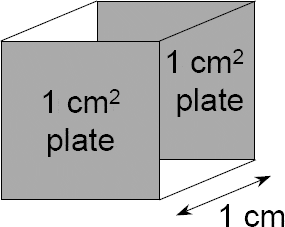
Vector diagram of active and reactive power
In the case of three phase AC systems the phenomenon is the same, however currents flow through three phases to the star or delta connected load. In either type of connection, the power consumption in kilowatts is given by:
kW = √3 × kV × I × cos Ø
Hence, to measure the active and reactive power consumed in a circuit, it is necessary that the meter shall be able to read voltage applied and current flowing as well as the phase angle between these two. Watt meters and VAR meters have two coils namely as voltage (or potential) coil and current coil. These coils are independently connected. The voltage coil is connected across the load to read the voltage and the current coil is connected in series with load to read the current.
4.6 Typical circuit configurations
Basic circuit configurations in single phase applications are covered below, which can be further extended for three phase applications.
- The current in a single phase AC two–wire circuit, with a phase wire and neutral, is measured by the use of a single phase ammeter having its coil in series with the load.
- The voltage in a single phase two–wire circuit is measured by a voltmeter coil connected across the source terminals or the load. The voltmeter consists of a large resistance which makes a only a small current to flow through the instrument unlike an ammeter.
The above single phase connection principles can be extended to three phase systems also. When the quantities to be measured are large and the voltage of the circuit is very high for the instruments to withstand, the instruments are connected to the supply system through instrument transformers. An example of a three phase measurement scheme using instrument transformers is shown in Figure 4.7.

VT and CT connections for metering
Basically the instrument transformers help in bringing down the operating voltage and current to values that can be handled by the meters. The standard secondary output voltage of a voltage transformer (VT) is 110V or 120V with the primary of the VT connected across the two phases or across phase and neutral. The standard secondary current of a current transformer is 1 ampere or 5 amperes with the primary of the current transformer connected in in series with each phase carrying the load current. Accordingly the meters in 3 phase systems are rated for 110V, 5 amps or 120V, 1 amp, etc matching with the VT and CT specification.
One more advantage with the use of CT is that the same 5 amp meter can be used to read 100 amperes or 1000 amperes just by changing the multiplication factor (in case of digital meter) or by changing the graduated scale (in case of analogue meters).
The meters in a three phase system can be connected in any one of the following configurations:
- Three phase four wire (with neutral)
- Three phase three wire with three CTs
- Three phase three wire with two CTs
4.7 Ammeters and voltmeters
In a DC circuit an ammeter is connected in series with the circuit under as shown in the Figure 4.8 so that the total current or a fraction of the current to be measured (if the current is large, a shunt is used to divert a major portion of current so that only a small current flows through the instrument) passes through the instrument. The ammeter must be capable of carrying this current without incurring damage and without abnormally increasing the resistance of the circuit into which it is inserted. For this reason, an ammeter is designed to have low resistance.

Ammeter and Voltmeter in a DC circuit
A voltmeter is used to measure the potential difference between two points of a circuit. It is thus connected in parallel with some part of the circuit as shown in Figure 4.8. The voltmeter must have a high enough resistance so that it will not get damaged by the current that flows through it; and also will not affect the current flows in the circuit to which it is connected.
The basic principle of the ammeter and the voltmeter is the same. Both are current operated devices i.e., deflecting torque is produced when current flows through their operating coils. In the ammeter, the deflecting torque is produced by the current or a certain fraction of that current which we wish to measure. A voltmeter is basically a moving coil galvanometer with a resistor in series. It employs a small coil of fine wire installed in a strong magnetic field. When an electrical current passes through the coil, the galvanometer’s indicator rotates. The angular rotation is proportional to the current through the coil. For use as a voltmeter, a series resistance is added so that the angular rotation becomes proportional to the applied voltage.
4.8 Frequency meters
The measure for describing the back-and-forth alternating rate of oscillation of an AC voltage or current wave is termed as frequency. The unit for frequency is Hertz (abbreviated Hz), which indicates the number of wave cycles completed during a period of one second. Prior to naming the frequency unit as Hertz, frequency was simply expressed as “cycles per second.” Older meters and electronic equipment often bore the term “CPS” (Cycles per Second) instead of Hz. A typical AC wave form is shown in Figure 4.9.

Typical AC wave cycle
Period of the wave form and the frequency of the wave form are mathematical reciprocals of each other. That is to say, if a wave has a cycle period of 5 seconds (taking 5 seconds to complete one full back-forth oscillation), its frequency will be 0.2 Hz, or 1/5th of cycle per second.

In the United States, the standard power-line frequency is 60 Hz, meaning that the AC voltage oscillates at a rate of 60 complete back-and-forth cycles every second. In Australia, Europe and most of the Asian countries, where the power system frequency is 50 Hz, the AC voltage only completes 50 cycles every second which is equivalent to 20 milli-second time period for each cycle.
There are two basic versions of the standard needle type analogue frequency meter: moving-coil meter and ratio meter. Moving-coil meter consists of two coils tuned to different frequencies, one higher and one lower compared to the measuring frequency, and connected at right angles to each other. Frequencies in the middle of the range equalize the currents in the two coils and allow the needle or pointer to indicate the midpoint of the scale. Changes in frequency create an imbalance between these currents, causing the coils and the needle connected to it move over the graduated scale. Ratio meters use two frequency inputs, one of a known value and the other which is to be measured.
The reed type frequency meter is also a common instrument used for frequency measurements. This frequency meter consist of reeds having natural vibration frequencies 90, 96, 100, 106, 110, etc with the reeds marked as 45, 48, 50, 53, 55 respectively on a scale (in a typical 50Hz meter) and installed on a common bar having a flexible support. An armature is attached to the bar such that the 50Hz current when flowing through the coil exerts maximum attraction on the armature couple of times in every cycle (positive and negative cycle). All the reeds of the bar undergo vibration with this input; but the reed having the natural frequency closest to that of the flowing current (whose frequency is being measured) vibrates more prominently. The frequency is read from the scale value opposite the reed having the greatest vibration.
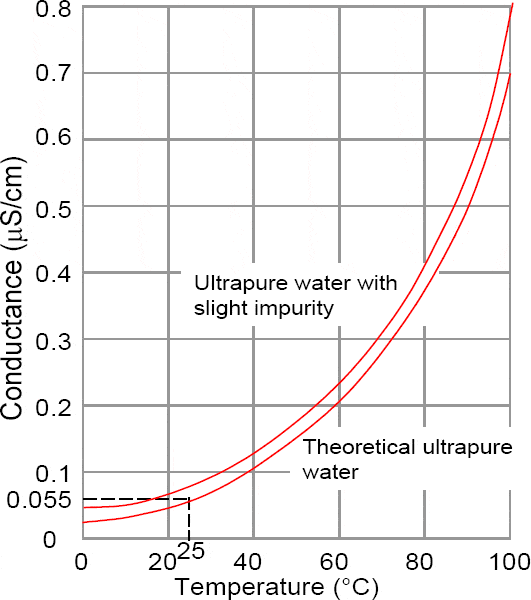
Reed type Frequency meter
A digital frequency meter converts the input cycles into pulses and uses counters/ integrated chips for displaying the measured frequency.
4.9 Powerfactor meters
A standard analog type powerfactor meter consists of two voltage coils one with a non inductive series resistance and the other with a series capacitance. The deflecting torque is proportional to the phase angle between the voltage and current vectors and operates the needle to show the power factor value. These instruments have no provision for an opposing torque and therefore when the input is disconnected the needle tends to rest at any random value in the scale.
4.10 Integrating instruments
For electricity utilities, the measurements of kilowatts as well as kilowatt hours are important. The kilowatts recorded over a long period of time or at periodic intervals basically help in ascertaining the maximum input power consumed in the system. This value is used for planning the generation capacity and also to assess the trend of power growth for plans needed to meet the future loads. The “kilowatt hour”, which may be termed as the cumulative energy consumed in the system over a period is the acceptable basis for billing purposes both by the electricity seller and consumer.
The energy in a single phase two–wire circuit is measured by the use of a single phase AC watt hour meter having its current coil in series with the phase wire and its voltage coil connected between the phase wire and neutral. There is a constant integration needed for the varying values of voltage and currents in the system over time.
An electromechanical kilowatt-hour meter essentially consists of:
- A small motor with a current circuit connected in series with the line and a potential circuit connected across the line.
- A brake which opposes the turning of the motor.
- A revolution counter which records the number of turns.
The relation between the motor torque and the opposing torque of the brake is such as to cause the motor to rotate at a speed which is proportional to the power flowing in the circuit. Energy or the product of power and time, is proportional to the number of revolutions made by the motor, and is shown on the revolution counter.
Though digital types are increasingly replacing the electromechanical type, the study on meters is incomplete without an understanding on the functioning of electromechanical type meters. Hence we will devote some time on these electromechanical instruments to have a good knowledge on their working principles.
4.10.1 Watt-hour meter or energy meters
From the commercial viewpoint, the measurement of electrical energy is the most important of all electrical measurements. An instrument which measures electrical energy is called an energy meter or a watt hour meter. Since electrical energy consumed by a load adds up with time (watt-hours = watts × hours), it is evident that the watt hour meter is an integrating instrument.
The electromechanical energy meters employ a phenomenon first noted by Dr. Ferraris in 1884 that a motor torque could be produced electromagnetically by alternating current fluxes. The electromechanical meters are combination of one, two or three single-phase watt-hour meter stators that drive a common shaft (rotor) at a speed proportional to the power of the circuit. Rotor revolutions are transmitted through gearing to the drive shaft and indicated by a clock type or a cyclometer type register.
All energy meters are essentially watt meters with control springs and pointers removed. They do however, have braking torque and a counting mechanism. As in a wattmeter, the driving torque in an energy meter is provided by a shunt circuit (carrying current proportional to supply voltage) and a series circuit (carrying current proportional to the load current). Since there is no controlling torque, the moving system will rotate continuously like an electric motor and hence the name motor meters. The driving torque on the rotor is proportional to the power being supplied. A braking or retarding torque proportional to the disc speed is provided by a brake magnet. Consequently, the disc speed will be proportional to the power and the number of revolutions made by the disc in a given time is a measure of the electrical energy consumed by the load during that time. The counting mechanism is so designed that it counts the revolutions of the disc in terms of kilowatt hours (kWh).
General Operation: Figure 4.11(i) shows the general construction of a watt-hour meter. The driving torque on the rotor is proportional to the power being supplied i.e.
Driving torque (Td) α Power

Watt hour meter operation principles
Braking Torque: Figure 4.11 (ii) shows how braking torque is provided in a standard watt hour meter. An aluminium disc is attached to the spindle and intercepts the flux of permanent magnet (i.e. brake magnet). As the disc rotates, eddy currents are induced in the disc. There eddy currents react with the flux of the permanent magnet to produce a braking (or retarding) torque proportional to the disc speed.
4.10.2 Three-phase watt-hour meter
In a three-phase system, energy can be measured by means of two single-phase watt hour meters. The total energy supplied will be the algebraic sum of the two readings. However, this is never commercially done as it would be more expensive and more troublesome than the use of a single three-phase meter. A three-phase meter is merely a combination of two single-phase meters with their moving elements mounted on the same spindle. The total driving torque is equal to the sum of the toques exerted by both the moving elements. Thus only one counting mechanism is required which will directly indicate the energy being supplied to the three-phase circuit.
Figure 4.12 shows how a three-phase watt hour meter is connected in a three-phase circuit to measure energy. The current coils are connected in series in any two lines and each potential coil is across these two lines and the third line. In fact, the connections are similar to two-wattmeter method used to measure power in a three-phase circuit.
It is very important that the two elements are ‘balanced” i.e. the driving torque of the two elements be exactly equal for equal amounts of power flowing through each. If this is not done, the meter will not indicate correct reading on unbalanced load. The balancing adjustment is most conveniently checked with the potential coils connected in parallel and the current coils in series opposition. If the elements are balanced, there will be no rotation of the disc for this condition. The usual lag, load and power factor adjustments are made independently for each element.

Watt hour meter connections
It is possible to connect transducers (covered later) in the circuits to produce one pulse for every 0.1 kWhr (or kVAhr) consumed at the connected load point. A controller can be used to record and add these pulses for every 15 minutes or as desired to get the average power used over the last 15 minutes. This is called as the “sliding window”, as these values change every 15 minutes or adopted time period. The controller compares this 15 minutes running average with a set target load value (which is normally 30 minutes) to operate a set of relays in case the extrapolated demand is likely to exceed the maximum allowable or the target kW value. The relay contacts are subsequently used to switch off non-critical electrical loads in the next 15 minutes so that the average overall load in the 30 minute period can be limited to the prescribed/ target maximum kW value.

Typical kWH meters
4.11 Registering instruments
In this section let us have a look at the various types of registering instruments used for electrical measurements.
4.11.1 Demand meters
We have earlier noted that the instantaneous power in the AC circuit is never constant and varies based on various parameters attributable to the source or the load. However the source shall be in a position to supply the power demand by the customer irrespective of such variations. It is a practice to charge the customer based on the maximum demand of the electrical installation to ensure that the customers will limit the loads of their installation within an agreed value.
The meters which measure the kVA (or kW) of a circuit or a system continuously are used to assess the maximum demand. This is not the demand at a particular instant of time but rather an average of demand over a 15 minute cycle or 30 minute cycle, with 30 minute cycle being adopted normally by most of the utilities.
In its simplest form, an electromechanical demand meter has a pointer which moves a red marker. The pointer falls back at the end of the 30 minutes cycle but friction keeps the red marker in the position to where it had been moved. When a demand meter is read at the end of the billing cycle, its marker is normally reset, usually with a magnet from outside the sealed meter enclosure, so that the meter is ready record the maximum demand for the next billing cycle.
The maximum demand is measured every thirty minutes in kVA, which is equal to 48 measurements of 30 minute periods in a day. Considering 30 days in a billing month, there can be as many as 48 x 30 = 1440 thirty minute demand values. The maximum among these 1440 values is taken as the demand to be charged to the consumer. Along with this the consumer has to pay for the energy in kilo watt hours consumed during the month on the basis of a per kilo watt hour rate.
Most digital demand metering systems work by counting consumption pulses over a fixed period, say, every 30 minutes. At the end of the period a reset occurs which returns the register to zero.
4.11.2 Trivector meters
In case of electromechanical meters, the trivector meter is the comprehensive energy recording meter used in commercial and industrial installations. A trivector meter basically comprises of three different recording elements, namely, kWh, kVAh and kVARh. The meter is very reliable, robust and practically free of any adjustment even for a long period of service. If the P.F. of the installation is leading, then kVARh element of the trivector has a tendency to record in reverse direction. But this is checked by providing a back stopper in kVARh element and if the power factor is leading, it records at unity power factor. In addition, trivector meters have a scale and a pointer for each of these three measurements. The pointers can move only in the forward direction but not return back on their own, unless mechanically brought back. This feature is useful in indicating the maximum value which a parameter has reached since the pointers were reset the previous time.
4.11.3 Multiple tariff metering
We noted that the load pattern of the consumers do not remain constant and vary over a period. For example the loads on air conditioners increase in summer and can drop down dramatically during winter. Also during a normal day, the usage of lighting, computers, heaters, etc can vary during the course of the day. There is generally a surplus of electrical generation capacity at times of low demand, such as during the night.
Time of use (TOU) metering facilitates Utility companies to control the loads and reducing the supply-demand gap. TOU concept involves dividing the day, month and year into tariff slots based on the demand pattern. Based on the pattern, utilities charge higher rates at peak load periods and low tariff rates at off-peak load periods. The higher tariff during higher demand periods makes the consumers to use their loads optimally.
Using the TOU metering it is possible to charge customers different tariffs at different times of the day. Such multiple tariffs can be made applicable only by time of use (TOU) meters, which incorporate or are connected to a time switch and which have multiple registers.
Domestic multiple tariff meters normally permit only two tariffs (“peak” and “off-peak”) and in such installations a simple electromechanical time switch may be used. Large commercial and industrial premises may use electronic meters which record power usage in blocks of half an hour or less. Most electricity grids have demands surging throughout the day and by giving incentives to large customers it would be possible to reduce demand at specific times. Some multiple tariff meters use different tariffs for different amounts of demand.
4.11.4 Summated metering
In some of the installations it is possible that multiple supplies are provided but for billing purpose it is necessary to use a single meter to sum up the consumptions of the different feeders. Though summing up of individual consumptions may give the overall consumption, the summing up of demands will not give the true demand due to the diversities involved in the different feeders. In these cases, a summation current transformer is used to get the overall demand and consumption pattern of multiple circuits in a single meter.
A summation CT is an interposing Current transformer which has n+1 winding, where n = number of feeders. The “n” secondaries are used to measure the current in the “n” feeders and the extra (+1) winding is used as a single secondary winding summing up all the ‘n’ currents and its current is used as input to a single energy/ demand meter to record the summated current.
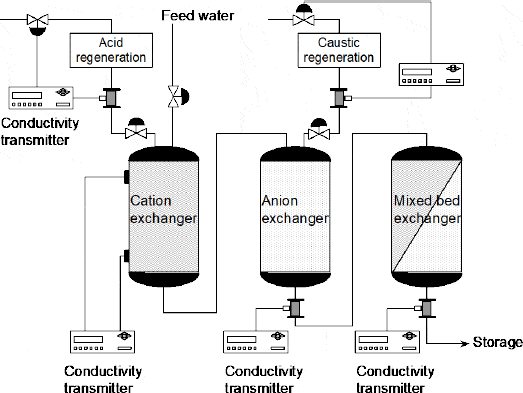
Summation CT schematic connections
When the two load currents flow through the summation CT, the two primary fluxes add up in its core vectorialy resulting in the total primary flux. This total flux is linked with the secondary winding of the summation CT. Due to transformer action, a proportional secondary current is produced in the secondary circuit and flows through the energy meter. The current seen by the meter is thus the vector summation of the two currents.
The summation can also be achieved by using one of the following methods:
- Paralleling of the secondary outputs of all CT leads and connecting them to the meter current coil.
- Independent elements of all CTs mounted on a common shaft of the same meter, so that the shaft gets the total torque to record the total input and consumption.
- Separate circuits, each fitted with a transducer to record the consumption at different points independently in the form of pulses and transmitting the pulses simultaneously to a common meter which can record the total consumption.
4.12 Recording instruments
There are two types of recording devices:
- Analogue recorders
- Digital recorders
Strip chart type: Analogue recorders of strip chart type consist of:
- Long roll of graph paper moving vertically.
- System for driving the paper at some selected speed. A speed selector switch is generally provided. Chart speeds of 1 – 100 mm/s are usually used.
- Stylus for making marks on the moving graph paper. The stylus moves horizontally in proportional to the quantity being recorded.
- Stylus driving system which moves the stylus in a nearly exact replica or analog of the quantity being recorded.
- Range selector switch to ensure input to the recorder drive system is within the acceptable level.
Most recorders use a pointer attached to the stylus. This pointer moves over a calibrated scale thus showing the instantaneous value of the quantity being recorded. An external control circuit for the stylus may be used.
Paper Drive Systems: The paper drive system should move the paper at a uniform speed. A spring wound mechanism may be used but in most of the recorders a synchronous motor is used for driving the paper.
Marking Mechanisms: There are many types of mechanisms used for making marks on the paper. The most commonly used one is marking with “Ink filled Stylus”. The stylus is filled with ink by gravity or capillary action. This requires that the pointer shall support an ink reservoir and a pen, or contain a capillary connection between the pen and an ink reservoir. In general, red ink is used but other colours are available and in instrumentation display, a colour code can be adopted. The stylus, moving over the paper with pre-printed scales, traces the variations of the input signal. This method is most commonly employed as a wide range of recording speeds is possible and also there is little friction between the stylus tip and the paper. The disadvantages of this method are that ink spatters at high speeds, batches at low speeds and clogs when the stylus is at rest. These recorders can only be used for slow variations as the ink flow cannot support quick movements of the pointer mechanism. For example, transient changes such as large voltage dips cannot be accurately read from the paper records of a recording voltmeter.
4.13 Digital instruments
Digital instruments display the numerical quantity to be measured in the form of a digital number. A panel displaying digits represents the value that is measured.
Meters are available for every measurement like voltage, current, frequency etc. But their versatility is in terms of possessing multiple measurement capability in a single meter measuring and recording active, reactive and apparent demand/ energy in addition to the basic and standard parameters. Static multi function meters are microprocessor based and have non-volatile memory to record, store and communicate the data. The multi function electronic meter in its basic form has a power supply, a metering engine, a microcontroller, other add-on modules such as Real Time Clock (RTC), LED/LCD display, communication ports/modules, etc. A block diagram of a digital voltmeter is shown in Figure 4.15. The analogue to digital converter converts the analog input into the digital code that is proportional to the magnitude of the incoming analogue signal. The system also incorporates a feedback circuit and successive approximation register for continuous measurements.
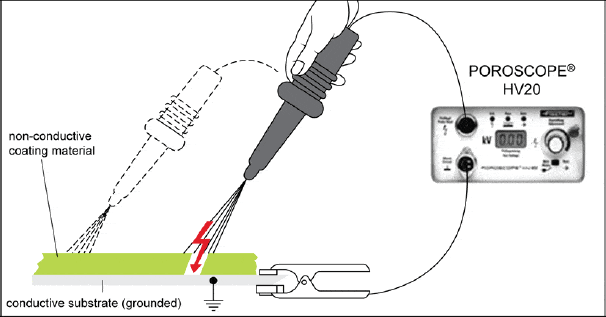
Block diagram of a digital voltmeter
Electronic energy meters are replacing the traditional electromechanical meters in many residential, commercial and industrial applications because of the versatility and low-cost afforded by electronic meter designs. The measurement circuits are electronic with LED (Light Emitting Diode) display or LCD (Liquid Crystal Display). The accuracies of electronic meters are typically class 0.2, 0.5, 1.0. They can be used to cater to multiple types of connections like CT-VT operated, CT operated, 1-phase or 3-phase Direct connected segment. The block diagram in Figure 4.16 shows the major components of a typical electronic energy meter.
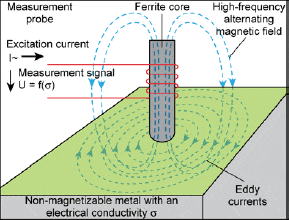
Typical electronic energy meter block diagram
The electronic meters are difficult to tamper with and if somebody does attempt to tamper them, they can be programmed to send alarm signals and record the information. The programmability of microprocessor has become a very useful tool for incorporating different features like Tamper data, Import- Export, TOU metering, load pattern analysis, etc. They are increasingly getting applied in SCADA (Supervisory Control and Data Acquisition) systems with communication ports to support various communication platforms as well as for downloading of data.
4.13.1 Metering from numerical protection relays
Today’s numerical relays are microprocessor based digital relays connected with CT and PT to derive the actual load circuit parameters and are used to initiate alarm or trips based on the severity of the parameter that is being measured. It means that under normal conditions these relays are capable of reading and providing information on the load parameters similar to a multi function meter. Hence it is often felt that the metering from these relays can save considerable expenditure in terms of additional instruments, associated wiring and space.
Metering outputs from these relays can be used for ascertaining the normal loads of the circuits. However their outputs are considered unsuitable for billing purposes. The main reason is that the inputs to these relays are through protection grade instrument transformers whose rated accuracies are far lower than those instrument transformers used for metering purposes.
Nevertheless they help in reducing the number of meters in the sub circuits and help in giving values of many parameters which otherwise may not be possible without a dedicated meter for each parameter.
4.14 Instrument mounting and wiring
There are many ways of mounting the instruments for measurement purposes. The energy meter at consumer premises is usually connected before the consumer’s isolating device (Main Switch) in a separate enclosure either in a separate lockable room or in an enclosure having locking provisions, to avoid the possibilities of tampering. Meters are normally flush mounted on the front of an enclosure which requires suitable cut-outs on the front door.
Meters can also be mounted on DIN rails but in such cases it is necessary to have the glass window to enable direct reading of the meters. The transducers that do not directly provide any displays on their face are DIN rail mounted inside the panels.
Tamper proofing is necessary for energy billing by adopting seals at one or more locations as shown below.
- CT Secondary Boxes (in addition to locking arrangement)
- PT Secondary Box (in addition to the locking arrangement)
- Meter Cabinet
- Meter Test Block
- CT Primary Links and Top Covers
- MD Reset feature
- Meter reading port
In metering installations using current and voltage transformers, the size and the length of the CT and VT wires play a major role in measurement accuracy. For example, large voltage drops can take place in undersized PT wires which can reduce the voltage being measured, thereby causing lower energy being registered by the meter. Such errors in some installations can be as large as 1% or more in energy recording and hence the additional investment made by the Utility companies for the high accuracy meters and VTs would go wasted.
Most metering circuits use fuses in the VT outputs backed up by primary fuses upstream. The failure of any of these fuses, if not detected will affect the measurement reliability. Normally fuse failure relays are a necessary in such cases. Modern meters have self checking facilities that can indicate major mistakes in the input circuit.
Another problem associated with CT metering is the resistance of the CT lead wires adding burden to the CT thereby affecting the accuracy of measurements. In long distance metering higher cross section wires are needed in CT circuits to minimize the burden.
It is also preferable to route the metering cores of the CT and VT in suitable metal conduits to protect them from physical damage and tampering
4.15 Summary
The meters chosen for an installation shall match the electrical system conditions like voltage, frequency, AC or DC, etc. Based on the operating principle of the meters they are broadly classified as electromechanical or digital (analog and numeric type). Electromechanical meters usually have a needle pointer which moves under the influence of the measured electrical parameter. Preset calibrated values are marked on a dial over which the pointer moves to indicate the measured value. Digital meters on the other hand, sample the inputs and integrate the samples over a time period to give the digital display of the measured value.
Based on application, meters may be further classified as indicating type, integrating type and recording type. While indicating and integrating type meters give the values of the measured parameters at a particular instant of time or over a period of time, recording meters help to keep the past data for future reference for study of system growth, improvements etc.
In DC systems, the main electrical power measurements are usually voltage, current and power. However in AC systems there are some more important electrical parameters to be measured viz., peak and average values, peak to peak value, RMS value, frequency, power factor, Active/ reactive power, etc.
Three phase AC measurements are carried out done with single phase PTs and single phase CT’s connected in different configurations to match the system connections. There are many ways of measuring the energy consumption and one popular method is to measure the power consumption in AC circuits by connecting current transformers in two phases only.
Ammeters, voltmeters, frequency meters and energy meters are the other common meters used in AC systems. Energy meter of analogue type has an induction disc which rotates when power is consumed. Mechanical dials are used to give the energy consumption readings in analogue types. Most of the installations in the world still employ these electromechanical type energy meters which are quite economical and proven to be reliable with reasonably good life.
Registering meters are used to record power consumption. Trivector meters measure the active, reactive power and help to assess power factor of a system, so that improvements can be implemented in the system. Multiple tariff meters record the energy consumptions at peak and non-peak periods to enable utility companies charge differential rates based on the power demand of the grid and to limit the power consumption by industries during peak periods.
5
Transducers
Transducers basically produce voltages and currents of very low magnitudes, in the order of a few volts or milliamperes, linearly proportional to the inputs to be measured, which can be mechanical, optical, Electrical, etc. Transducers used for measuring electrical parameters are provided with inputs from voltage transformers and/or current transformers of the main power circuits. The electrical transducers produce output linearly varying in line with the inputs being measured and the transducer output is normally in the range of 4 to 20 milli-amperes. This current will be connected by cables to a remote monitoring system to give the output values proportional to the current flowing in the circuit. In this chapter we will review the different types of transducers, focusing mainly on the transducers used in electrical systems.
Learning objectives
- Types of transducers depending on principle, active and passive
- How measurement is carried out with transducers
- Average responding transducers
- R.M.S. responding transducers
- Power Transducers and their use
- Use of interposing transformers
- Applications of Transducers
5.1 Basics of transducers
A transducer is a device which converts one form of energy to another. Typically, one of these forms can be mechanical, optical, or thermal while the other is mostly electrical or mechanical.
While the term transducer commonly implies use as a sensor/detector, any device which converts energy can be considered a transducer. Transducers may be categorized by application: Sensor, actuator, or combination. Sensors are used to provide signals that are measurable and recordable. A sensor can be defined as “a device which can detect a change in a physical stimulus and turns it into a signal which can be measured or recorded”. For example, mercury in a glass thermometer expands and contracts with the temperature being measured and the contraction/ expansion of the liquid can be read on a calibrated glass tube. A thermocouple converts temperature to an output voltage due to the temperature gradient which can be read by a voltmeter. For accuracy, all sensors need to be calibrated against known standards. In short, a sensor is used to detect a parameter in one form and report it in another form of energy (usually an electrical and/or digital signal). For example, a pressure sensor might detect pressure (a mechanical form of energy) and convert it to electricity for display at a remote gauge.
An actuator accepts energy and produces movement (action). The energy supplied to an actuator might be electrical or mechanical (pneumatic, hydraulic, etc.). An electric motor and a loudspeaker are both transducers, converting electrical energy into motion for different purposes.
Combination transducers have both functions- they both detect and create action. For example, a typical ultrasonic transducer switches back and forth many times a second between acting as an actuator to produce ultrasonic waves, and acting as a sensor to detect ultrasonic waves.
The transducers gain more importance in any continuously running plant, which is monitored and controlled by acquiring data on the operating status. Hence in any process plant or a power plant or any similar applications, where it is always a necessity to measure the various parameters of the plant at various stages, the transducers are employed wherever possible. The transducers are employed to monitor all critical parameters of a plant. These parameters give an indication on how the process is functioning and help the operators to take corrective actions at appropriate times in case these parameters deviate from the normal or established requirements. A common monitoring and control system is in place in such installations to monitor the status of the various parameters at various stages. It is also normal to control most of these parameters form this remote station by giving inputs to the plant areas to ensure that the outputs at each stage meet the plant process requirements. The parameters that are of interest and which can affect the system outputs can be pressure, temperature, levels of liquids, vibrations, etc with each one critical for some specific process and application and may not be critical in some other cases. It is also to be noted that all parameters can be controlled from remote though all can be monitored. Some can be controlled directly and others have to be controlled by manual or by controlling another connected system.
A transducer is often referred to as a transmitter when used for measuring and reporting process parameters to a monitoring and control system. A transducer can have its input directly from the source being measured or from the sensor output and converts to another signal that can be connected to a calibrated device to indicate the value of the inputs. In the early days of instrumentation, the sensors were directly connected to instruments/indicators. Thus most measuring instruments were located in the field. A more elegant method was required to convey the measurements to a remotely located control area. This gave rise to the development of transmitters. The output of these devices was invariably a current or a voltage which made it possible for connecting to the control room in a convenient manner using signal wiring. It should be noted that the accuracy of measurement should not be compromised by the length of wiring from the transducer to the control point. While this may not be a problem with transducers having a voltage output, those using a current signal need to be designed so that the output current is independent of the length of wiring. Current transducers therefore need a power source which can drive he required current irrespective of the burden (resistance of output circuit) and behave like a current source.
Usually, sensors are employed at specific stages to directly measure the required parameters and convert to a measurable signal. The outputs from such sensors are then converted to equivalent electrical signals and taken via shielded cables to a remote end for the convenience of measurement as well as control of these sensor outputs. The monitoring and control is normally done at a remote place and can be a single system having an overall common control over various stages of the plant. A typical process transmitter set-up is as per Figure 5.1.
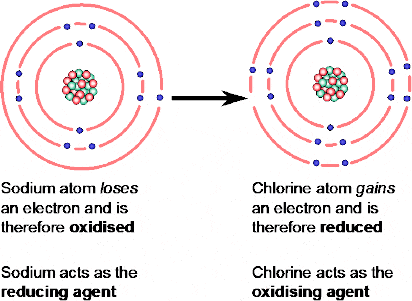
Typical block diagram of a process transmitter
Transducers provide electrical isolation by built-in transformers, also termed as ‘Galvanic Isolation’, between the input and the output ends. This ensures that the cabling from the output terminals is isolated from the fault level and insulation requirements of the input end. Some of the major advantages of using galvanic isolated transducers are:
- The transducer is mounted close to the source end ensuring substantial reduction in the burdens and cabling.
- The monitoring and display can be mounted remote from the transducer location.
- It is possible to use single output for multiple measurement purposes.
- The burden on the CT’s/VT’s can be reduced considerably.
While the need for transducers in process control systems can be understood in the above context, its use for electrical measurement has other purposes. Measurements in electrical circuits often involve current transformers which though are electrical devices, have limitations of output burden and cannot be used for transmission of measurements to remote monitoring locations. This is also true of any complex measurements which involve current as a measured parameter. An electrical transducer is thus a device which accepts an input electrical quantity such as voltage, current, power or frequency into a proportional dc output for the measurement purpose as shown in Figure 5.2. The design of such a transducer overcomes the burden limitations to a great extent.
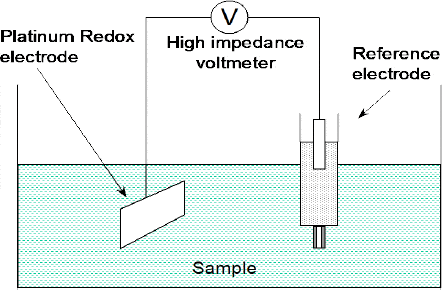
Typical block diagram of an electrical transducer
By adopting transducers in a circuit, a complex electrical quantity, such as watts, vars, etc measured at the load point can be converted into a load independent dc current signal and transmitted with just two wires over any distance for display, recording or control. The values so obtained can be used to monitor as well as to give corrective signals to the upstream system so as to get the desired predetermined output value. A well known application of transducers is for the variable frequency drives, where speed can be varied or maintained as per the needs. The remote data access system or data control system acquires the actual speed of a motor through a 4 to 20mA signal to monitor the speed of a process drive. The same data system can also transfer a current signal to the variable frequency drive panel as an input to maintain or vary the speed to the desired value, whenever needed.
Through using transducers for indication of watts or vars, the number of signal wires to be laid between source and indicator can be reduced from as many as nine to two. Further, the transducer output wires can have small cross section and insulated for low voltage.
It is common to use protection class transformer outputs as inputs for the transducers which enables transducers to be able to withstand significant short-term overloads. A typical requirement for the current input circuits of a transducer suitable for connection to protection-class instrument transformers is to withstand:
- 300% of full-load current continuously
- 2500% for three seconds
- 5000% for one second
It is common to consider input impedance of any current input circuit to be kept as low as possible, and that for voltage inputs to be kept as high as possible. This considerably reduces errors due to impedance mismatch.
5.2 Types of transducers
Transducers are broadly classified into different types. These types represent the methods adopted or principle of operation for the measurements. The following paragraphs describe their basic functional requirements.
The transducers may be called as input device or output device, depending on how they transfer communication to the other end i.e. whether just for monitoring alone or whether for control of an upstream component or part of a system.
Input transducers are those which convert some property or effect into an electrical signal. Output transducers usually have electrical input and generate a mechanical or some other output.
“Active” Transducers require external auxiliary power supply for their working. An active transducer thus can introduce a power gain using its auxiliary power source. On the other hand, “Passive” Transducers use the power of the input signal for their operation and will work without an external auxiliary power supply. A typical example is a piezoelectric crystal which converts pressure (more exactly strain) to a small signal voltage. Passive transducers cannot introduce any gain to their outputs and require other devices such as amplifiers to be useful.
Categories/Types of current transformers
| Category Basis | Types |
| Direction of information flow | Input devices Output devices |
| External auxiliary supply | Active Passive |
| Application | Pressure Temperature Level Acoustics Electrical Speed |
| Physical properties | Phiezo electric Photovoltaic Proximity Capacitive Inductive |
In electrical systems, the major transducers used are:
- Voltage transducer (Input from VT)
- Current transducer (Input from CT)
- kW transducer (Inputs from VT and CT)
- kVAR transducer (Inputs from VT and CT)
- Powerfactor transducer (Inputs from VT and CT)
- Frequency transducer (Input from VT)
Most of these electrical transducers are provided with external DC auxiliary supply for their correct operation and are usually designed to give an output varying between 4 to 20 mA with 4mA produced at zero measurement and 20mA produced at the full scale measurement.
Figure 5.3 shows three basic transducer types commonly adopted. Type 2 is a two-wire transducer energized by the loop current in which the loop source voltage is included as part of the receiving end. The transmitter signal floats and the grounding is done at the processor end. The Type 3 transmitter has the auxiliary supply voltage fed locally and sources the loop current using this auxiliary supply. In this case, transmitter common is connected to receiver common. Type 4 is a four-wire transmitter energized by an independent auxiliary supply at the transmitter. The transmitter sources the loop current to a floating receiver load.

Transducer types
The output signal of the transducer is dc analogue signal of a definite range but obtained from the ac input, which means that DC analogue signal produced by the transducer will contain a certain amount of alternating component, or ripple. Ripple is generally defined as the peak-to-peak value of the alternating component of the output signal although. It is also named as ‘mean-to-peak’ or ‘r.m.s.’ values. It is normally necessary to indicate the conditions under which the value of the ripple is measured and shall be provided as an important technical data, e.g. 0.25% r.m.s. = 1.0% peak-to-peak ripple.
Transducers with a current output will have a maximum output voltage, known as the compliance voltage. If the load resistance is too high and hence the compliance voltage is exceeded, the output of the transducer will no longer be accurate.
Transducer outputs may be both digital and analogue. Digital outputs are typically in the form of a communications link with RS232 and/or RS485 type links. The response times of digital transducers are comparatively longer than analogue types. This usually is linked on the rate at which values are transferred to the communications link and the delay in processing data at the receiving end.
5.3 Measurements using transducers
Typical transducers with sensor inputs generate 4 to 20mA loop current to the processor or controller where this current is converted to an equivalent voltage across a resistance to provide the calibrated readings. Figure 5.4 shows a typical arrangement used for such measurements. It can be noted that for a current of 0 to 20mA, it is possible to generate up to around 5V to 10V across a 250 to 500 ohm resistance, which is sufficient to provide necessary sensitivity for the output readings.

Typical current loop of a transducer
Though there are many types of transducers, our study will be focused on electrical transducers which are mainly used to read and monitor the electrical parameters of a power generating and distribution system. The main internal parts of a transducer are the digital circuits that samples and analyses the input value to produce the equivalent pre-calibrated output current. With the advent of digital technology, the transducers are built to provide the required accuracy levels of 0.2% to 0.5%, ensuring linear relationship, which are well accepted in most of the installations.
The electrical transducer inputs are similar to the inputs required in the analogue and digital meters depending on the measuring parameter. For example a voltage transducer may just need voltage as its input while transducers for kW, kVA, power factor, etc will require both voltage and current of the system under measurement. The transducers generally require an auxiliary voltage supply as an additional input to ensure uninterrupted operation.
Most electrical transducers accept direct connection up to a maximum of 600 volts AC only. For AC voltages greater than 600 volts, potential transformers are required and hence most of the transducers are normally rated for 110 V AC inputs that can be used for systems up to hundreds of kilo volts. Similarly for AC applications most of the electrical transducers do not accept current input beyond 20 amperes directly into their circuits. For higher amperages, it is necessary to employ current transformers. All AC inputs to the transducers are isolated and level shifted by adopting transformers inside the transducers. Transducer outputs are independent of the connected loads and their variations, meaning they are not directly connected to the load circuit and are isolated. This offers the following specific advantages:
- The transducer can be open-circuited or short-circuited without causing any problem in the load circuit.
- Can transmit the measured data over very long distances using thin wires which make the wiring simple and inexpensive.
- Multiple indicating or recording instruments may be connected to the same transducer without any adjustments or precautions.
- Can be connected or disconnected without affecting the other instruments in the circuit and their outputs.
The majority of present day transducers in the use of electrical measurements produce load independent current signal, in the 4-20mA range, though other ranges of this current as well as voltage ranges are possible. The outputs are usually standardized as current signals like 4 to 20mA, 0 to 10mA, etc, and voltage outputs like 0 to 10V, etc. As stated earlier, the transducers act as current sources for the measuring device at the other end. The transducer’s output voltage adjusts itself to drive the required current regardless of the loop impedance of the output circuit. This current output remains constant up to a specified maximum load resistance which ensures that the type and length of cabling needed are little significant to affect the accuracies. The receiving instrument shall typically have a low input resistance (10-250 ohm) to make the current signal immune to electrical interference.
When electrical control signals were introduced at an early stage in Europe, 0-20mA output range was adopted to ensure conversion from a current to voltage signal by feeding the current through a suitably sized resistor without any offset. Scaling is made easy by direct ratio calculations. Though zero based signals are still available, the 4 to 20mA output range is mostly used in present day transducers as this range has a number of features different from zero based signals. It ensures that the transducer failure condition is clearly identified in the 4-20mA range vis-à-vis 0-10mA current output from the transducer. It shall however be noted that since the signal has a 16mA swing it requires deduction of 4mA while scaling calculations are carried out for the output.
The outputs provide a linear scale with maximum output corresponding to 100% of the measured value, with minimum output corresponding to zero measurement. It means that a 4-20mA transducer measuring 0 to 1000 amperes will provide 4mA output at zero input, 12mA at 500 amperes input and 20mA at 1000 amperes input on a linear scale for the 16mA span as shown in Figure 5.5.
Typical linear output of 4 to 20mA current transducer
The use of digital technology in the transducers provides the following advantages.
- Improved long-term stability
- Accurate r.m.s measurements
- Better communications facilities
- Possibility of programming the scale factors.
- Multiple functions
- Compact transducer size that can be rail mounted.
5.4 Average responding transducers
As we are aware, the AC measurements can be average or RMS values of the AC wave form. The standard method for measuring the average magnitude of an ac signal is to use a precision rectifier followed by a filter as per Figure 5.6. This measures the “average” value of the sinusoidal AC wave in the rectified wave form with positive cycles. A scale factor can be calibrated into the measurement to show the rms value directly (say by using 1.111 factor which is the ratio of r.m.s. to average for pure sine wave).

Typical average responding transducer for ac circuits
The transducers measuring voltages and frequency typically have one input from voltage transformers as shown in Figure 5.7 for measuring the values.

Typical single VT input connection for an electrical transducer
The above simple measurement is sufficient as long as the input is an undistorted sine wave. The rms value may still be closer to the actual value as long as the distortion is limited, within reasonable values to meet the accuracy levels demanded in the measurements. The results are considered acceptable as long as the waveform to be measured has no greater than a few percent distortions, say less than 5%. If the input has higher distortions and consequently more harmonics with higher amplitudes, the form factor of 1.111 for pure sine wave does not hold good any longer. Hence direct reading of rms value will no longer be correct, though the average value may still be reasonably accurate. Accordingly it becomes necessary to measure the quantities with an r.m.s. responding instrument for ac wave forms having more harmonics. However considering the advent of digital loads like PCs, UPS, etc , which are prone for harmonics, it is becoming a normal practice to use r.m.s. technique whether measuring the rms value of pure sinusoidal or non-sinusoidal signals to ensure better accuracy in the measurement results.
5.5 RMS responding transducers
True R.M.S. measurement of ac wave forms is needed for higher accuracy taking care of the amplitudes of the distortions/ harmonics in the ac wave form. The rms responding transducers include an averaging square root circuit as an additional system component to the standard average rectifier circuit, which calculates and reads the rms value of the input wave. Figure 5.8 shows the block diagram of a transducer incorporating the square circuits for measuring the rms value.

Typical R.M.S. responding transducer for ac circuits
The square root circuit samples the true values of the average circuit outputs to provide the mA output in proportion to the true rms values without any need for multiplication or correction factors.
5.6 Power transducers
A watt or power transducer measures true electrical power delivered to a load and converts that measurement to a dc voltage or current signal proportional to the power measured. As we are aware the true power output is dependent on three parameters – voltage, current and powerfactor of the system under measurement. Hence the transducer shall be able to measure the phase shift between the voltage and current to arrive at the power factor of the system. Typically the transducers have two input channels, one for the voltage and the other for the current, when powerfactor values are needed. They may also be provided with two voltage inputs from two different sources, like generators to be operated in parallel, to monitor and control the phase angle of the two sources precisely and adjust their end power factor by sending appropriate signals to the sources.
Considering typical wave forms of the two channels A and B as per Figure 5.9, the phase angle difference between the channel inputs is 360 × P1/P. In case the two channel inputs represent two voltages of two independent supplies, the phase-shift between these two sources can be detected which is useful for paralleling/synchronising applications. In a power transducer, these two channels are basically the voltage and current inputs typically from a distribution feeder feeding a load which is used to arrive at the power factor for calculating the active and reactive power values.

Inputs for phase displacement measurement with two channel inputs
Phase angle is determined by timing the crystal clock pulses over a specified gate time which is selectable from say 10 milli seconds to 199.99 seconds. By selecting the minimum gate time of 10 milli second, the update rate of measurements can be up to 20 per every second for a 50/60 Hz ac line frequency. Improved accuracy is obtained by making the gate time long enough so that multiple cycles can be averaged.
The transmitters determine the frequency by taking the inverse of period as measured with a calibrated quartz crystal time base, which are then processed in software. The analog output is generated by an ultra-linear 16-bit digital-to-analog (D/A) converter for 0.02% output accuracy. The power transducers are used in both single phase and three phase applications. A typical single phase application requires voltage and current transformers to provide the inputs to the transducers as shown in Figure 5.10.

Single phase power transducer with two channel inputs
Three phase power measurements require more than one VT and CT for better accuracy. Following are the different combinations of transducers adopted for power measurements in electrical systems.
- 3 phase 3 wire Delta (1-1/2 element)
- 3 phase 3 wire Delta (2 element)
- 3 phase 4 wire star (2-1/2 element)
- 3 phase 4 wire star (3 element)
The delta and star in the above types indicate how the instrument transformers are connected to the transducer inputs. Figures 5.11 to 5.14 give these different types and the connections involved. Basically the ½ type represents use of lesser number of VT compared to the number of CT in the circuit connections/ inputs for measurement purposes. All these types give almost identical output values for a single system.

Three phase three wire Delta type power transducer (2 element)

Three phase three wire Delta type power transducer (1-1/2 element)

Three phase four wire Star type power transducer (2-1/2 element)

Three phase four wire Star type power transducer (3 element)
For a three phase balanced load like a motor, it is usual to connect one centre phase CT for power measurements as this can save considerable cost in a process plant with multiple motor loads of different ratings. Figure 5.15 shows a typical arrangement adopted.

Three phase three wire power transducer for balanced load
5.7 Use of Interposing transformers with transducers
Interposing transformers are commonly used in protection circuits to match the phase angles of the currents in the current transformers used at two different circuits, for comparison purposes. In traditional transformer differential schemes, the requirements for phase and ratio correction were met by the application of external interposing current transformers (ICT’s), as a secondary replica of the main winding connections, or by a delta connection of the main CT’s to provide phase correction only.
Transducers generally do not use interposing transformers for measurement purposes. However some times, it is possible that the transducer is rated for 1 ampere while the CT’s are rated for 5 ampere outputs OR vice versa. In such cases, it would be necessary to introduce a 5/1 A CT or a 1/5A as interposing between the main CT and the transducers. Figure 5.16 shows typical transducer connection using interposing transformers.

Typical transducer circuitry with interposing transformer
5.8 Applications of transducers
Today the transducers are finding applications in many process industries for their simple connection requirements, cost, sensitivity, etc. In application of transducers, it is necessary to ensure the following.
- Accuracy – The output shall be close to the “true” value of the variable being measured.
- Sensitivity- The measured results shall show consistent values with no random variability in the measured variable.
- Operating range – Shall be able to cover the full operating range of the system being measured with accuracy and precision maintained over the entire measuring range.
- Calibration – It shall be possible to calibrate the transducer easily with minimum efforts.
- Drift – The transducer does not lose accuracy over time.
- Reliability with zero failure chances.
The modern transducers are able to provide most of the above features which had also proven results in many process industry applications as well as SCADA applications in power plants. The transducers are widely used in the following applications.
- Electro magnetic applications like photo detector (light levels to resistances), magnetic tapes, optical disks, etc.
- Thermo electric applications like Resistance temperature detectors, thermistors, thermocouples, etc.
- Photo electric applications like LED, photo diodes, etc.
- Electro chemical applications like pH probes, gas analyzers, gas detectors, etc.
- Electro mechanical applications like galvanometer, load cells, strain gauge, etc.
- Electro acoustic like microphone, loud speaker, etc.
Figure 5.17 shows a typical block diagram of a data control system adopted in modern process units with multiple inputs with a few demanding auxiliary supply and some being passive type transducers. The CPU monitors and also controls a few inputs through actuators which control the inputs of the selective channels to maintain desired outputs.

Typical Data control/ Acquisition system with multiple inputs
5.9 Summary
Transducers are becoming important components in today’s continuous process plants. The plants are provided with monitoring and controlling system to maintain the process and plant critical which are nowadays measured by sensors and transducers with suitable feedback controls. Electrical transducers are finding increased applications in measurements of electrical parameters like voltage, current, power, etc. Electrical transducers are mostly provided with auxiliary external supply. Most of the transducers are standardized in many applications with 4-20mA dc current outputs which offer specific advantages and ensure failure conditions are known at measuring end.
For ac wave measurements it is necessary to have rms measuring transducers to provide better results even with distorted wave forms. The electrical transducers are provided with inputs from VT and CT to measure the voltage and current and to produce equivalent milli amperes for transfer to remote monitoring systems. The kW/ kVAR power transducers require inputs from both voltage and current transformers and many types of connections are followed in the three phase systems.
Continuous process plants transfers inputs from various transducers with electrical, mechanical and other measurements in the form of linear dc milliamperes which are then analyzed and controlled by the Data control systems.
6
Practical Applications of Metering
In this chapter we will review the practical applications of metering mainly covering the measurements adopted for tariff purposes and also measurements for monitoring / control in electrical transmission distribution systems. We will also discuss some of the common metering codes employed by many utility distribution companies and the standard methods followed for tariff metering in most of countries, which provides the main income for the utility companies. We will also discuss the importance of accuracy and reliability to be met by the electrical meters and the standards generally adopted or followed in metering systems.
Learning objectives
- Tariff metering and control and indication metering
- Metering code
- Parameters monitored and purpose
- Tariff Metering Arrangements
- Importance of accurate and reliable metering
- Standards applicable
6.1 Tariff metering and control / indication metering
Power utility companies generally employ two broad categories of metering to monitor, record and bill the power consumption by the consumers. These are
- Tariff metering
- Statistical metering – control/ indication
Tariff Metering is adopted for electrical energy billing by utility companies for all types of consumers – residential, commercial, industrial, etc – whereas the control/ indication metering is used by utility companies as their internal data for monitoring and recording purposes to meet the present and future needs. The accuracy demanded for the tariff metering is quite high whereas lesser accuracies are considered adequate for the control and indication monitoring since these are basically used to provide statistical data.
Tariff metering is invariably installed at the service connection point so as to measure the energy consumed from this point onwards for charging to the consumer. Each utility company establishes different standards for the tariff metering to the different consumers based on the power generation adequacy and consumption patterns of the various consumers in a particular country.
The types of external components used for tariff metering like current transformers, voltage transformers, transducers, meters, etc are also specified and installed with higher accuracies matching the accuracy expected for tariff metering. However, the accuracies for control and indication metering for statistical purposes need not have the same kind of accuracies adopted for tariff metering. Some of the practices generally followed by many utility companies are as below.
- The consumer is responsible for the supply and installation of all service equipment like local isolation switches, enclosure box, etc. The revenue meter is normally supplied by the utility company and remains as its sole property.
- It is mandatory that the utility companies shall be given free access to these tariff meters to check the performance of the meters, to take the readings and also to arrange replacements, etc., as may be needed, during the normal operation. This is applicable for single as well as multi occupancy buildings
Control and indication metering is mainly adopted at the major transmission and distribution substations of the utility companies for their internal use to monitor and control the power being distributed and also for future growth projections.
It is to be noted that the CT error can vary with CT magnetization current based on its characteristics. Some CTs having with low knee point voltage may have an error greater than 0.5% while others with relatively higher knee points (e.g. line CTs) will have comparatively lower errors. However even the ones with errors greater than 0.5% may still be usable provided that the accuracy of the measuring instrument is chosen to get a higher accuracy.
Generally the values recorded by tariff metering could be just kWH alone in case of smaller consumers while for large consumers (commercial and industrial establishments) the metered values can include maximum demand and the kVAH to take care of the power factor to be maintained at these installations as per the utility regulations. On the other hand, the control and indication metering try to collect the maximum data at various points in the distribution system including voltage, current, etc which are not normally metered for tariff purposes. The details collected help the utilities to see the trend of power quality, power consumption growth, etc so that long term plans can be made to meet future growth and also to help cut down transmission and distribution losses, based on the actual consumption recorded by tariff meters. Table 6.1 gives some basic comparisons between the two types of metering.
Tariff metering Vs Control/ indication metering
| Parameter | Tariff metering | Control & Indication metering |
| Measured items | kWH, kW/ kVA demand, kVARH | All electrical parameters including Voltage, current and frequency |
| Accuracy | Higher accuracy not less than 0.5 but preferably 0.2 | Accuracy classes 0.5 to 1.0 or little above 1.0 also generally acceptable |
| Purpose | Only for Tariff purposes | For monitoring and for future growth projections |
| Points of installation | At supply end only | Along important feeders, substations, load centres, etc. |
6.2 Metering code
Many countries have adopted or established separate companies for distribution of Electricity and metering practices are established by these independent companies for providing connections and charging the consumers. These distribution companies are generally under the purview of regulatory authorities to ensure uniform practices are adopted by the companies without any preferential treatments to the various consumers.
In any installation, it is necessary that the installation is certified by a professional electrical engineer who is normally provided with license to provide such services. The professional is expected to follow the codes established by the utility companies and give all basic data needed for supply connection at the appropriate voltage.
All the utility companies have established codes for metering purposes which define the types of metering adopted for a particular installation and the basic provisions expected from the consumers. The metering codes can be broadly classified as per Table 6.2 based on the magnitudes of voltage and/or loads.
Metering types/ codes normally applied
| Deciding parameters | Codes/ Practices followed |
| Distribution Phases | Single phase two wire |
| Three phase 4 wire | |
| Supply Voltage | Low voltage |
| High voltage | |
| Extra High voltage | |
| Consumer Loads | Direct reading meters |
| CT operated meters |
6.2.1 Basic codes
The rules / metering codes adopted by utility companies generally cover the following:
- These codes define the limits of loads for single phase and three phase connections. Invariably single phase connections are limited to around 3 kW to 5kW in most of the countries. Accordingly single phase direct reading energy meters up to a maximum of about 15 to 30 amperes are permitted in such installations.
- Beyond these minimum loads, it is mandatory for the consumers to employ three phase distribution of the loads, which means three phase, 4 wire supply is terminated for such installations.
- The utility companies normally have HV/LV step down transformers maintained by them to distribute three phase power to the consumer up to a predefined maximum load only (say around 25kW to 40kW maximum).
- Beyond these stipulated maximum loads, the power is normally supplied at a higher voltage to reduce the distribution losses and maintenance costs associated with such high loads. The consumers are expected to provide suitable transformers matching their loads, so that the utilities provide supply at high voltage (normally in the order of 3.3kV to 33kV depending on the local voltage levels used). The metering is done at the supply (high) voltage with suitable voltage transformers and current transformers provided by utility companies for metering purposes. These are either three phase three wire type, or three phase four wire type depending on the local grid connections adopted. The supplies are terminated on a weather proof panel which accommodates the meters and the metering components. Depending on local regulations, either the utility company or the consumer provides these metering enclosures. In effect this means that the consumers also pay for the losses of their transformers.
- When the total load is in excess of 5MVA, the utility companies insist to take power supply at EHV rated 110kV upwards based on local grid voltages. The consumers are expected to set up their own EHV substation with transformers, which shall include necessary space for the installation of EHV CT and VT plus the metering panels to be provided by the utility.
- The codes also indicate the space to be allocated by the consumers to facilitate installation of metering devices and associated components by the utility companies, mainly for HV and EHV consumers.
The metering codes are established to ensure:
- Accurate metering of electricity production and consumption so that the distribution losses can be monitored and controlled.
- Uniform practices followed for all the installations to establish standard methods of connections.
- To give confidence to the consumer that they are correctly charged for the energy they use.
- To standardize the metering procedures.
Special attention shall be given to the earthing arrangements for HV metered installations. The primary star point of the voltage transformers with graded insulation must be earthed. Installations with uniform insulation may be earthed or left unearthed. The star point may be left unearthed to remove a possible path for fault current due to external HV faults however, the impedance of the VT is such that any fault current that might flow through the VT will be insignificant. The use of graded insulation reduces the cost of the VT. However, with voltage transformers which are used for earth fault monitoring and for biasing directional earth fault protection using secondaries connected in open delta mode, earthing of primary star point is a must. The secondary output of the voltage transformers has the centre phase earthed at the metering cubicle.
Some of the important practices to be adopted in metering installations are given below:
- The meter shall be installed in such a height and location that its reading is easily visible. Meters shall be installed in a vertical position to give proper view directly.
- The meters shall be installed on a solid wall or within a covered area with suitable enclosures in case of 3 phase LV metering.
- Where HT metering is adopted, CTs shall be on the incoming end before the point of isolation at the consumer premises.
- The meter and the meter box shall be properly sealed to avoid pilferage with access to internal components restricted to the power supply authorities.
6.2.2 Distribution regulatory authorities
Most of the developed countries have independent Electricity Distribution Regulation Authority to support the consumers in all matters related to distribution of electricity. The Authority’s functions are to maintain a competitive, efficient and fair commercial environment for the benefit of the public. The Authority is expected to promote fair prices and ensure quality distribution and proper choice to the public being served by the distribution companies.
Hence, it is becoming vital for many distribution companies to establish authenticated and accurate metering data related to the electricity being distributed, conditions applicable for power supply to the consumers and the methods of charging the consumers based on the established tariff scales. It is important that correct type of meters with acceptable accuracies are installed at correct locations such that the data retrieved from such systems are reliable and also beneficial to utilities as well as to the public being served in the long run.
6.2.3 Export / Import metering
Metering codes also gain importance where captive power generated by consumers is exported to the utility grid and also when captive power units of the consumers operate in parallel with the grid supply. In the first case, it is necessary that the exported power is properly metered and the consumer is given due credit for the total power provided to the utility. The utility companies also prefer some basic protection features to be employed by the consumers in their systems to avoid back feeding, grid stability problems, etc. Usually an agreement between the utility and the consumer is in place where export-import of power is adopted in an installation with suitable metering as agreed. The tariffs for imported power and exported power may be the same except for some marginal reduction to compensate for the distribution losses and usually the metering may be time dependant.
If the same tariff is agreed for both import and export of energy then a single meter without stops will record the net energy used by the consumer. A two-meter arrangement is necessary if the actual value of imported and exported energy is required and also tariffs for import and export are worked out along different lines. For example, energy drawn by the consumer may be based on a two part tariff whereas the surplus power exported to the utility is usually based only on the energy exported. A single four-quadrant meter is also available that can record import and export energy separately.
6.2.4 Communication links
Today online continuous recording of parameters is possible with communication links, with meters having suitable port connections for transfer of data at high speeds. Where metering installations are included with a communications link, it is generally a condition that the system shall include a modem and isolation device approved under the relevant telecommunications regulations. These links allow total energy data at defined intervals to be downloaded to the metering database at utility main centre via a telecommunications network. In advanced countries, it is becoming a practice to have the communications link in any of the forms like a radio communications system, a microwave communications system, a GSM or CDMA or a satellite communications system or a combination of many systems. Suitable password and security controls are to be provided to protect the data held in the metering installation to avoid access from direct or remote electronic systems.
6.2.5 Sealing of metering
The meters are installed in consumers’ premises and the owners of these meters access them once a month. Hence, sealing the meters and access to its terminals become necessary to avoid the tampering of connections and internal parts of a meter either inadvertently or deliberately. A seal basically helps to detect unauthorized manipulations to the internal parts of the meters. The effectiveness of the seal is more if it can be tamper proof and cannot be duplicated and there are effective procedures to track the seal conditions.
The sealing of metering systems can be at one or more places depending on the type of metering and the layout of the metering components. It is a standard practice to seal the following points to minimize the tampering chances. The boxes are usually locked, wherever possible in addition to the seals.
- CT Primary Links and Top Covers.
- CT Secondary Boxes.
- PT Secondary Box
- Meter Cabinet.
- Meter Terminals.
- Meter Cover.
- Doors of enclosures having CT and PT secondary circuits and where these could be shorted to bypass the metering.
- Rest pushbutton of maximum demand in a trivector meter.
- Meter reading communication port used for remote metering.
Where new meters are installed, it is the duty of the personnel to check all the following to avoid mal-operation and unnecessary losses.
- Phase sequence
- CT polarity
- VT polarity
- Phase angles
- Actual CT / VT ratio and the multiplication factors involved.
Metering codes generally define procedures and the corrective actions needed, when there are possible errors in the meter outputs.
6.3 Parameters monitored and purpose
Meters are also adopted for monitoring and control purposes without using them for tariff purposes, mainly to achieve the long term goals and objectives of the utility/ distribution companies and the regulatory authorities. With electricity consumption increasing in most of the countries, the national grids of many countries see unexpected demands during economical growth conditions and also see fall in power demand during some bad times. The utility companies generally prefer to keep their systems flexible to meet any variation in the power consumption patterns happening in different parts of their country due to socio-economical reasons. Following are some of the major parameters monitored by distribution companies with installation of suitable meters at select places owned by them.
- Grid network Control: Along the grid there are many substations at different voltages that are established to serve different regions and different types of consumers. These networks are provided with meters to record Voltages, frequency and loads at different nodes so that they can be constantly monitored and be ensured that network operation criteria are met (e.g. plant approved load, voltage profile, generator capability, transmission stability, switchover operations, etc.). These parameters help the companies to know how stable the distribution system is and also to plan for improvements before it is too late.
- Each regional grids are usually provided with a centralized master station, which has records of MW, MVAR inputs and also have the data on the installed power generation capacity. These stations provide the services for long term planning studies and security analysis. It also helps to fill the gaps in power demands and also tries to identify possible metering errors.
- Generation business unit is provided with values of system frequency and generation loads. These generation dispatch and control metering values are constantly monitored and assessed with available reserves. They help the Government to take correct investment decisions in power sectors to meet the expected demand growth and augmentation needed in the existing power plants.
- Historical metering information of the various areas at substations and receiving ends and metered consumption are used by utility companies to calculate the transmission and distribution losses so as to take corrective steps for minimizing the losses as part of energy conservation efforts. This also helps to substantially save on the investments needed for new power plants and associated infrastructure requirements.
Most of the metering values are continuously logged in modern computer systems on a instantaneous, hourly, daily weekly and monthly basis depending on the importance of the parameters. This helps the data to be retrieved whenever required for analysis and future projections.
6.4 Tariff metering arrangements
Tariff metering for residential and commercial LV installations up to a maximum load of around 30 amperes are invariably connected by direct reading energy meters and beyond these loads it is done through CT operated meters. Normally smaller installations of less than 3kW to 5kW are provided with single phase direct reading single phase energy meters. Table 6.3 gives some of the common types of tariff metering arrangements followed in many countries. (Assuming 230V single phase distribution)
Typical metering practices adopted
| Type of service | Metering considered |
| Direct 240 | Single phase kWH meter upto about 30A load |
| Direct 415 V | Three phase four wire kWH meter upto about 100A load. |
| CT operated 415V | Beyond 100A but limited to less than about 200-250 amperes. Some countries even accepts higher load currents. |
| HV/ EHV metering | Where LV currents exceed the preset values in a single installation. Normally a trivector meter is adopted to control the demand, powerfactor, etc. |
| Summation metering | Where there are two or more supply sources to an installation (normally feeders from different zone substations) with each source metered with CT, usually at HV, and the consumptions from the soyurces are summed up to produce a single bill for the energy consumed. |
| Import/ Export metering | Where the installations are exporting power to the grid normally at a HV or EHV with meter operated by CTs |
HV metering is connected using Voltage and current transformers. Generally the metering equipment (current and voltage transformers) is supplied and installed by the utility companies. The consumer is expected to provide space and some basic facilities for the installation of metering equipment in accordance with the utility operator’s requirements. The meter enclosure shall be located at a convenient location which normally requires approval by the utility distribution company and shall be close to the entry point of the consumer premises.
6.5 Importance of reliable and accurate metering
The metering helps on the following important factors
- For tariff purposes
- For ensuring quality distribution
- To facilitate future growth plans at appropriate times.
Hence the meters installed in the power system shall guarantee that the system is properly functioning and also shall ensure that the investment decisions taken by the Government and utility companies based on the meter readings serve the real purpose of meeting the consumer’s expectations and are also economically viable. It means that the accuracy of meters and the associated components is very much important to get authentic and dependable values all the times. Another issue is related to the reliability of the metering instruments because an energy meter recording lower values can affect the income of the utility companies and instruments reading higher values can create protests from consumers. It is also possible that some transformers along the distribution lines may be over loaded due to wrong ammeters having high negative errors. Some of the important design and installation features to be considered in the installations are as below.
- The accuracy of a meter, whether ammeter or energy meter is likely to fall when currents much lower than the nominal ratings and especially when connected by current transformers. Hence it is very important to consider the CT ratio to match with the actual load current of the system to ensure that the secondary output currents from the CT are not too low in the measuring range.
- It is further to be realized that the tariff meters provide the main source of income for the utility and distribution companies. The tariff rates are fixed based on the capital cost and operating cost of the distribution systems and it is vital that energy meters that provide the consumption figures are reliable and accurate to ensure customer satisfactions and to comply with the Electricity Act and local electricity codes adopted by the Government.
6.6 Standards applicable
The metering codes of the utility companies normally set standards to be followed in regard to the procedures for power supply applications, the type of components to be installed, the accuracy classes of the meters to be adopted for the various tariff classes, etc. It is a standard practice to provide meters with high accuracy (0.2) for high end customers, who are the major contributors to the exchequer of the utility companies. Lower accuracy classes in the order of around 1.0 are generally accepted for single phase and three phase LV installations, while an accuracy of 0.5 is adopted for medium industries and commercial establishments having HV metering.
International standards like NEC define detailed descriptions related to consumer installations, which always include local meters. The test requirements of the CT, VT are defined in IEC and IEEE standards, which are universally adopted by many utility companies and the manufacturers of these items.
- IEC 62052-11:2002, Electricity metering equipment (a.c.) – General requirements, tests and test conditions – Part 11: Metering equipment.
- IEC 62053-11:2003, Electricity metering equipment (a.c.) – Particular requirements – Part 11: Electromechanical meters for active energy (classes 0,5, 1 and 2).
- IEC 62053-22:2003, Electricity metering equipment (a.c.) – Particular requirements – Part 22: Static meters for active energy (classes 0,2 S and 0,5 S).
- IEC 62053-23:2003, Electricity metering equipment (a.c.) – Particular requirements – Part 23: Static meters for reactive energy (classes 2 and 3).
- IEC 62053-31:1998, Electricity metering equipment (a.c.) – Particular requirements – Part 31: Pulse output devices for electromechanical and electronic meters.
- IEC 62053-61:1998, Electricity metering equipment (a.c.) – Particular requirements – Part 61: Power consumption and voltage requirements.
- IEC 62054-11: Particular requirements for electronic ripple control receivers.
- IEC 62054-21: Particular requirements for time switches.
- IEC 62059-11 Electricity metering equipment – Dependability – Part 11: General concepts.
- IEC 62059-21 Electricity metering equipment – Dependability – Part 21: Collection of meter dependability data from the field.
- IEC 62059-41 Electricity metering equipment – Dependability – Part 41: Reliability prediction.
IEC-62056 is the series of standards to be issued defining data exchange requirements for electricity tariff metering.
- IEC 62056-21, Electricity metering. Data exchange for meter reading, tariff and load control Part 21: Direct local data exchange.
- IEC 62056-46, Electricity metering. Data exchange for meter reading, tariff and load control. Part 46: Data link layer using High level Link Data (HDLC) protocol.
- IEC 62056-53, Electricity metering. Data exchange for meter reading, tariff and load control. Part 53: Companion Specification for Energy Metering (COSEM) application layer.
- IEC 62056-61, Electricity metering. Data exchange for meter reading, tariff and load control. Part 61: OBIS – Object identification system.
IEC 61107 (presently IEC 62056-21) defines the standards for computer protocol to read utility meters. The meter can send data in predefined formats to a hand held unit (HHU) using serial port communication link. The data can be exchanged with modulated light with photodiode, or hard wires with 20mA current loop. A sign-on procedure with HHU addresses a particular meter by number. The data from the meter are generally grouped to various security settings like ‘no security group’, ‘ low security groups’ and ‘ the high security groups’. For data in low security group, a password authentication of the HHU is required before information can be read. For high security parameters, a cryptographic password exchange is needed between the HHU and the meter before data can be downloaded. These modes are usually protected by anti-tampering features such as switches that sense if the meter enclosure has been opened.
6.7 Summary
Utility companies throughout the world incorporate metering for two main purposes, one for the tariff to be collected from the consumers and the other for internal review mainly for condition monitoring as well as for future planning and to ascertain the growth projections. The tariff metering is adopted at the point of power supply termination to the consumer, with the data shared with the consumers. The control metering is adopted at many parts of the transmission and distribution systems along the grid with data used for internal purposes of the companies only. While tariff metering is mainly record the total energy consumed including total demand in some cases, the control metering reads various electrical parameters including voltage, frequency, current, etc at regular predefined intervals to continuously monitor the condition of the grid and also retrieve old data as and when needed.
Most of the countries now have the concept of independent distribution companies with a Government regulatory authority monitoring their functions. The consumers are protected with established metering codes of the distribution companies which define the classification of metering based on consumption pattern and the purpose of use like residential, commercial, industrial, etc. The tariff metering is adopted with meters having accuracies of 0.2 to 0.5 while control and indication metering are accepted with accuracies in the order of 0.5 to 1.5. The metering codes also define rules related to import/ export metering based on the captive power availability at consumer end and the supplies are governed by separate agreements between consumer and the distribution companies.
The meters for tariff shall be properly sealed and protected to avoid pilferage and tampering. Depending on the power consumption, the metering can be LV single phase, three phase or HV/EHV 3 phase system. While direct metering is adopted for LV systems up to around 30 amperes, CT meters are adopted for loads beyond 30 amperes per phase and also for HV metering.
IEC and IEEE standards define the metering accuracies and the tests to be conducted on the metering components. Today, many of the countries are collecting the metering data from remote by having data communication links with local meters. This considerably saves time and also ensures availability of data at any time. The data exchanges follow HDLC/COSEM protocol with requirements being defined in new IEC standards under draft stage.
7
Commissioning, Testing and Maintenance of Metering Systems
In this chapter we will review the testing requirements for the various metering system components such as voltage transformers, current transformers, transducers, meters, etc. We will also discuss the procedures and precautions to be followed during pre-commissioning checks and commissioning of these systems. A brief discussion covering maintenance procedures usually recommended and adopted will also be part of the review.
Learning objectives
- Testing of a voltage transformer
- Testing of current transformers
- Testing of meters and transducers
- Commissioning of instrument transformers
- Commissioning of meters and transducers
- Maintenance of current transformers, voltage transformers and transducers
7.1 Requirements of testing
Any electrical installation is considered incomplete unless it is visually checked, tested and commissioned in a well defined manner adopting procedures and test equipments that are reliable and are safe to use. The correct operation of electrical equipments require all the protection system components like CT, VT, etc shall be tested as defined by international standards. Similarly, metering plays an important role for the utility companies to ensure that fair charges are collected through the tariff meters and also to ensure that the future demand projection figures are reliable and useful. IEEE and IEC are the two major international standards, which are followed for the specification and testing requirements of the electrical equipments and components by many electrical installations in the world. IEC requirements are analyzed in this chapter considering that many countries adopt the IEC standards for their electrical installations, which is expected to be the main standards to be followed in future.
7.1.1 Need for tests
It may be noted that testing on electrical equipment and its component is needed
- to prove the performance of an equipment before being put into service
- to ensure that the equipments are assessed on a common basis with respect to their technical capabilities
- to make the end user confident about the capability and performance of the equipment where it is to be used
- to establish an assurance in the minds of all users that the equipment will provide reliable service and will not cause any damage to the property and personnel, when the equipment is put into service.
7.1.2 Categories of tests
Depending on the area where the tests on electrical items are conducted, these tests are broadly categorized as
- Factory tests
- Laboratory tests
- Field/Pre-commissioning tests
The factory and laboratory tests are the established standard tests that are to be conducted by the manufacturer before it can be declared that the equipment is suitable for a particular application, with the manufacturer’s guarantees/ warranties. These are categorized as:
- Type Tests/Design Tests: These are normally done on identical equipment. The type tests can be destructive in some cases in a sense that the type tested equipment may not be capable to be used again. Hence it is not expected that the equipment under use is type tested but its design should have been proven by conducting tests on similarly designed equipment. All the type tests are not destructive. Some times when multiple quantities of similar equipment are ordered, it is acceptable that one equipment alone pass the tests defined as type tests with the rest of the equipment not undergoing these type tests. It might be necessary to conduct type tests in an independent laboratory.
- Routine Tests: These are the necessary basic tests that are to be conducted by a manufacturer even if a customer does not specifically indicate this requirement. Any equipment which had failed in any of the routine tests is generally NOT to be used for the desired application. However under exceptional cases some routine tests may be repeated after making minor alterations to internal construction. It may be noted that all electrical equipment which are in service, should have passed the routine tests.
- Acceptance Tests: Some of the tests are to be conducted in case the operating conditions demand the same. These tests may not be applicable for all operating conditions and mostly guided by the application of the particular equipment.
- Sample Tests: When tens and hundreds of identical equipment are ordered, it is not necessary to conduct all tests on every piece of equipment. Standards define the quantities to be considered for sample tests and the items are randomly tested to prove their capacity. The quantities to be selected are defined by a table or by some formula and samples are chosen accordingly.
- Special tests/ other tests: These are defined by standards for some specific equipment at some specific ratings/ capacities. These are invariably defined for tests like partial discharge tests, impulse withstand voltage tests, etc which are normally applicable for operating voltages above certain range like 132kV or 220kV.
Field Tests are the tests conducted outside the manufacturing location and generally in the place where equipment is put into service. These may be classified as below:
- Pre-commissioning/ commissioning tests: These tests that are conducted on equipment in the field of service before it is put into service. Invariably most of the pre-commissioning tests are almost same as routine tests like megger tests, Insulation tests, etc. However some special tests are carried out in larger units like turbines, etc., which are difficult to get fully loaded in the manufacturing place due to limitation of power availability.
- Maintenance Tests: These are tests conducted at regular intervals as part of maintenance checks to maintain its performance. Typical tests are conducted on items like relays, meters, etc which are required to give correct outputs for the proper operation of the equipment.
7.1.3 Tests on metering equipment
The basic requirement for metering is accuracy, which is dependent on the many components adopted for metering including meters. We will review the tests on the following related to the metering applications.
- Testing of voltage transformers
- Testing of current transformers
- Testing of transducers
- Testing of meters
7.2 Testing of voltage transformers
Following are the tests recommended on voltage transformers as per IEC 60044 Part 2
7.2.1 Type tests
- Temperature-rise test
- Short-circuit withstand capability test
- Lightning impulse test
- Switching impulse test
- Wet test for outdoor type transformers
- Determination of errors
- Measurement of the radio interference voltage (RIV) (Um ≥ 123 kV)
All the dielectric type tests shall be carried out on the same voltage transformer, unless otherwise specified. After transformers have been subjected to the dielectric type tests, they shall be subjected to all routine tests as below.
7.2.2 Routine tests
The following tests apply to each individual voltage transformer:
- Verification of terminal markings
- Power-frequency withstand tests on primary windings
- Partial discharge measurement (Um ≥ 7.2 kV)
- Power-frequency withstand tests on secondary windings
- Power-frequency withstand tests between sections
- Determination of errors
The order of the tests is not standardized but determination of errors shall be performed after the other tests. Repeated power-frequency tests on primary windings shall be performed at 80 % of the specified test voltage.
7.2.3 Special tests
The following tests are performed upon agreement between manufacturer and purchaser:
- Chopped impulse test on primary winding
- Measurement of capacitance and dielectric dissipation factor(Um ≥ 72.5 kV)
- Static withstand load tests (Um ≥ 72.5 kV)
- Transmitted over voltage measurement (Um ≥ 72.5 kV)
7.3 Test procedures
7.3.1 Temperature rise test
Done similar to the power transformer temperature rise test with the test conducted at an ambient of 10 to 30 deg C with the VT mounted in a manner representative of the service condition. If practicable this is done by measuring the increase in resistance.
The voltage to be applied to the transformer for the temperature rise test shall be one of the following as applicable.
- All voltage transformers irrespective of voltage factor and time rating shall be tested at 1.2 times the rated primary voltage. If a thermal limiting output is specified, the transformer shall be tested at rated primary voltage, at a burden corresponding to the thermal limiting output at a unity power factor without loading the residual voltage winding. If a thermal limiting output is specified for one or more secondary windings, the transformer shall be tested separately with each of these windings connected, one at a time, to a burden corresponding to the relevant thermal limiting output at a unity power factor. The test shall be continued until the temperature of the transformer has reached a steady state.
- Transformers having a voltage factor of 1.5 or 1.9 for 30 seconds shall be tested at their respective voltage factor for 30 sec starting after the application of 1.2 times rated voltage for a time sufficient to reach stable thermal conditions; Alternatively, such transformers may be tested at their respective voltage factor for 30 seconds starting from the cold condition; the winding temperature rise shall not exceed 10 K.
- Transformers having a voltage factor of 1.9 for 8 hours shall be tested at 1.9 times the rated voltage for 8 hours starting after the application of 1.2 times rated voltage for a time sufficient to reach stable thermal conditions; the temperature rise shall not exceed by more than 10 K the values specified in the Table 7.1.
Insulation and temperature rise for voltage transformers (IEC)
| Class of insulation | Maximum temperature rise K |
| All classes immersed in oil | 60 |
| All classes immersed in oil and hermetically sealed | 65 |
| All classes immersed in bituminous compound | 50 |
| All classes immersed in oil | 60 |
| Classes not immersed in oil or bituminous compound : | |
| Y | 45 |
| A | 60 |
| E | 75 |
| B | 85 |
| F | 110 |
| H | 135 |
7.3.2 Short-circuit withstand capability test
For this test, the voltage transformer shall initially be at a temperature between 10°C and 30°C. The voltage transformer is energized from the primary side and the secondary terminals are shorted.
One short circuit shall be applied for the duration of 1 second. During the short circuit, the r.m.s. value of the applied voltage at the transformer terminals shall be not less than its rated voltage. In the case of transformers provided with more than one secondary winding, or section, or with tappings, the test connection shall be agreed between manufacturer and purchaser.
The voltage transformer is accepted to have passed this test if, after cooling to ambient temperature, it is not visibly damaged, its errors do not differ from those recorded before the tests by more than half the limits of error in its accuracy class, it withstands the dielectric tests with the test voltage reduced to 90 % and the insulation next to the surface of the primary and the secondary windings does not show significant deterioration (e.g. carbonization).
7.3.3 Impulse test on primary winding
Typical insulation test voltages are as per the Tables 7.2 to 7.4. The test voltage shall be applied between each line terminal of the primary winding and earth. The earthed terminal of the primary winding or the non-tested line terminal in the case of an unearthed voltage transformer, at least one terminal of each secondary winding, the frame, case (if any) and core (if intended to be earthed) shall be earthed during the test. The reference impulse voltage shall be between 50 % and 75 % of the rated impulse withstand voltage. The peak value and the wave shape of the impulse shall be recorded. For failure detection the record of current(s) to earth or of voltages appearing across the secondary winding(s), shall be performed in addition to the voltage record.
7.3.4 Lightning impulse test
For primary windings having Um < 300 kV the test shall be performed with both positive and negative polarities with test voltages show in Table 7.2 for the applicable rated voltages. Fifteen consecutive impulses of each polarity, not corrected for atmospheric conditions, shall be applied. The transformer passes the test if for each polarity if
- No disruptive discharge occurs in the non-self-restoring internal insulation;
- No flashovers occur along the non-self-restoring external insulation;
- No more than two flashovers occur across the self-restoring external insulation;
- No other evidence of insulation failure is detected (e.g. variations in the wave shape of the recorded quantities).
For unearthed voltage transformers, approximately half the number of impulses shall be applied to each line terminal in turn with the other line terminal connected to earth.
Rated test voltages for voltage transformers with Um < 300kV (IEC)
| Highest system Voltage Um (kV peak) | Rated short-duration power-frequency withstand voltage kV (r.m.s) | Rated lightning impulse withstand voltage Kv (peak) |
| 0.72 | 3 | — |
| 1.2 | 6 | — |
| 3.6 | 10 | 20/40 |
| 7.2 | 20 | 40/60 |
| 12 | 28 | 60/75 |
| 17.5 | 38 | 75/95 |
| 24 | 50 | 95/125 |
| 36 | 70 | 145/170 |
| 52 | 95 | 250 |
| 72.5 | 140 | 325 |
| 123 | 185/230* | 450/550* |
| 145 | 230/275* | 550/650* |
| 170 | 275/325* | 650/750* |
| 245 | 395/460* | 950/1050* |
* – Choose the highest value for exposed installations
For windings having Um ≥ 300 kV the test shall be performed with both positive and negative polarities as per values Table 7.3. Three consecutive impulses of each polarity, not corrected for atmospheric conditions, shall be applied. The transformer passes the test if:
- No disruptive discharge occurs;
- No other evidence of insulation failure is detected (e.g. variations in the wave shape of the recorded quantities).
Rated switching test voltages for voltage transformers with Um ≥ 300kV (IEC)
| Highest system Voltage Um (kV peak) | Rated switching impulse withstand voltage (kV peak) | Rated Lighting impulse withstand voltage (kV peak) |
| 300 | 750/850 | 950/1050 |
| 362 | 850/950 | 1050/1175 |
| 420 | 1050/1050 | 1300/1425 |
| 525 | 1050/1175 | 1425/1550 |
| 765 | 1425/1550 | 1950/2100 |
Note: Choose the highest value for exposed installations
The power frequency test voltages are as per Table 7.4, which are based on the values of the switching impulse voltages for which the VT is designed.
Rated power frequency test voltages for voltage transformers with Um ≥ 300kV (IEC)
| Rated lightning impulse withstand voltage (peak) kV | Rated power frequency withstand voltage (r.m.s.) kV |
| 950 | 395 |
| 1050 | 460 |
| 1175 | 510 |
| 1300 | 570 |
| 1425 | 630 |
| 1550 | 680 |
| 1950 | 880 |
| 2100 | 975 |
7.3.5 Switching impulse test
The test voltage shall have the appropriate values, depending on the highest voltage for equipment and the specified insulation level. The test shall be performed with positive polarity. Fifteen consecutive impulses, corrected for atmospheric conditions, shall be applied. For outdoor-type transformers the test shall be performed under wet conditions.
The transformer passes the test if:
- No disruptive discharge occurs in the non-self-restoring internal insulation;
- No flashovers occur along the non-self-restoring external insulation;
- No more than two flashovers occur across the self-restoring external insulation;
- No other evidence of insulation failure is detected (e.g. variations in the wave shape of the recorded quantities).
7.3.6 Wet test for outdoor type transformers
For windings having Um < 300 kV, the test shall be performed with power-frequency voltage of the appropriate value depending on the highest voltage for equipment applying corrections for atmospheric conditions. For windings having Um ≥ 300 kV, the test shall be performed with switching impulse voltage of positive polarity, of the appropriate value depending on the highest voltage for equipment and the rated insulation level.
7.3.7 Radio interference voltage (RIV) test
The test is done with ambient temperature limited between 10 to 30 deg C and a humidity level of 45 to 75%.
The test voltage shall be applied between one of the terminals of the primary winding of the test object and earth. The frame, case (if any), core (if intended to be earthed) and all terminals of the secondary winding(s) shall be connected to earth. The measuring circuit is provided in IEC. The measuring circuit shall preferably be tuned to a frequency in the range of 0.5 MHz to 2 MHz, the measuring frequency being recorded. The results shall be expressed in micro volts. The impedance between the test conductor and earth (Zs + (R1 + R2)) shall be 300 Ω ± 40 Ω with a phase angle not exceeding 20°. A capacitor Cs may also be used in place of the filter Zs and a capacitance of 1000 pF is generally adequate.
The filter Z shall have high impedance at the measuring frequency in order to decouple the power frequency source from the measuring circuit. A suitable value for this impedance has been found to be 10000 Ω to 20000 Ω at the measuring frequency.
The radio interference background level (radio interference caused by external field and by the high-voltage transformer) shall be at least 6 dB (preferably 10 dB) below the specified radio interference level.
A pre-stress voltage of 1.5 Um/ √3 shall be applied and maintained for 30 seconds. The voltage shall then be decreased to 1.1 Um / √3 in about 10 seconds and maintained at this value for 30 s before measuring the radio interference voltage.
The VT is considered to have passed the test if the radio interference level at 1,1 Um/ √3 does not exceed the limit prescribed per IEC. Some times by agreement between manufacturer and purchaser, this test may be replaced by partial discharge test. In such case the allowable PD value is 300 pC at 1.1 Um / √ 3.
7.3.8 Power frequency withstand test
This is normally a routine test and similar to those done on power transformers. For separate source withstand test, the duration shall be 60 seconds. For the induced voltage withstand test, the frequency of the test voltage may be increased above the rated value to prevent saturation of the core. The duration of the test shall be 60 seconds.
If, however, the test frequency exceeds twice the rated frequency, the duration of the test may be reduced from 60 seconds as below:
Duration of test (in seconds) = (twice the rated frequency/ Test Frequency) × 60 with a minimum of 15 seconds.
For Windings having Um < 300 kV test values are as per table based on the system highest voltage.
The applicable test voltage shall be applied for 60 seconds in sequence between the short-circuited terminals of each winding section, or each secondary winding and the earth. The frame, core (if there is a special earth terminal), and the terminals of all the other windings or sections shall be connected together and to earth when one winding/section is tested.
7.3.9 Partial discharge test
Procedure A: The partial discharge test voltages are reached while decreasing the voltage after the induced voltage withstand test. Procedure B: The partial discharge test is performed after the induced voltage withstand test.
The applied voltage is raised to 80 % of the induced voltage, maintained for not less than 60 seconds, and then reduced without interruption to the specified partial discharge test voltages. If not otherwise specified, the choice of the procedure is left to the manufacturer. The test method used shall be indicated in the test report. For unearthed transformers two tests are done by applying voltages alternately to each of the HV terminals with the other terminal connected to ground along with the other windings and frame.
7.3.10 Chopped impulse test on primary winding
The test shall be carried out with negative polarity only, and be combined with the negative polarity lightning impulse test. The voltage shall be a standard lightning impulse, chopped between 2 µs and 5 µs. The chopping circuit shall be so arranged that the amplitude of over swing of opposite polarity of the actual test impulse shall be limited to approximately 30% of the peak value. The test voltage of the full impulses shall have the appropriate values based on the highest system voltage and the specified insulation level.
The sequence of impulse applications shall be as following:
For windings having Um < 300 kV:
- One full impulse;
- Two chopped impulses;
- Fourteen full impulses.
For unearthed transformers, two chopped impulses and approximately half the number of full impulses shall be applied to each terminal.
For windings having Um ≥ 300 kV:
- one full impulse;
- two chopped impulses;
- Two full impulses.
Differences in wave shape of full wave applications before and after the chopped impulses are an indication of an internal fault. Flashovers during chopped impulses along self-restoring external insulation shall be disregarded in the evaluation of the behaviour of the insulation.
7.3.11 Capacitance and dielectric dissipation factor
The measurement of capacitance and dielectric dissipation factor shall be made after the power-frequency withstand test on the primary windings. The test voltage shall be applied between the short-circuited primary winding terminals and earth. Generally the short-circuited secondary winding(s), any screen, and the insulated metal casing shall be connected to the measuring bridge. If the current transformer has a special device (terminal) suitable for this measurement, the other low-voltage terminals shall be short circuited and connected together with the metal casing to the earth or the screen of the measuring bridge.
7.3.12 Transmitted over-voltages measurement
A low-voltage impulse (U1) shall be applied between one of the primary terminals and earth. For single-phase current transformers for GIS metal-enclosed substations, the impulse shall be applied through a 50 ? coaxial cable adapter with the enclosure of the GIS section connected to earth as to be done in service. The terminal(s) of the secondary winding(s) intended to be earthed shall be connected to the frame and to earth.
The transmitted voltage (U2) shall be measured at the open secondary terminals through a 50 Ω coaxial cable terminated with the 50 Ω input impedance of an oscilloscope having a bandwidth of 100 MHz or higher which reads the peak value. If the current transformer comprises more than one secondary winding, the measurement shall be successively performed on each of the windings. In the case of secondary windings with intermediate tappings, the measurement shall be performed only on the tapping corresponding to the full winding. The over voltages transmitted to the secondary winding (Us) for the specified over voltages (Up) applied to the primary winding shall be calculated as follows:
Us = (U2 / U1) × Up
In the case of oscillations on the crest, a mean curve should be drawn, and the maximum amplitude of this curve is considered as the peak value U1 for the calculation of the transmitted over voltage.
The voltage transformer is considered to have passed the test if the value of the transmitted over voltage does not exceed the limits given in Table 7.5.
Limits on transmitted over voltages of secondary windings (IEC)

7.3.13 Ratio and accuracy class verification test
These are both type tests and routine tests. The requirement is that the voltage error and phase displacement at rated frequency shall not exceed the values at any voltage between 80 % and 120 % of rated voltage and with burdens between 25 % and 100 % of rated burden at a power factor of 0.8 lagging. To prove compliance with this, type tests shall be made at 2 %, 5 % and at 100 % of rated voltage and at rated voltage multiplied by the rated voltage factor, at 25 % and at 100 % of rated burden at a power-factor of 0.8 lagging.
The routine tests for accuracy are in principle the same as the type tests, but routine tests at a reduced number of voltages and/or burdens are permissible, provided it has been shown by type tests on a similar transformer that such a reduced number of tests are sufficient to prove its characteristics.
For measuring voltage transformers of accuracy class 0.1 and 0.2 and having a rated burden lower than 10 VA an extended range of burden can be specified. The voltage error and phase displacement shall not exceed the values given, when the secondary burden is any value from 0 VA to 100 % of the rated burden, at a power factor equal to 1. This requirement is mostly requested for certified accuracy of energy measurements.
The measurement errors shall be determined at the terminals of the voltage transformer and shall include the effects of any fuses or resistors as an integral part of the VT.
7.3.14 Ferro-resonance test
In this test, one phase is kept open and the capacitance of the resonant circuit is connected to that phase and the earth. As capacitance of the circuit starts increasing, variations occur in the voltages with respect to time. If the ferro-resonance is not in a specified limit, the damping resistor in the residual voltage secondary winding is connected to reduce the risk of ferro-resonance.
The overvoltage factor can be used in some cases to reduce or totally eliminate the risk of ferro-resonance. According to IEC standards, the rated over-voltage factor is 1.9 × Un / 8h. The high rated over-voltage factor shifts the operating point towards lower flux values of voltage, thus reducing the ferro-resonance. The damping resistors being used have some standard values and checks should be carried out to ensure that value. Table 7.6 shows the standard values of load on secondary and damping resistance.
Ferro resonance test resistance values
| Primary Voltage class (volts) | Load on secondary in watts to prevent ferro resonance | Equivalent Resistance per phase (ohms) |
| Upto 500 | 200 | 72 |
| 7200 to 15000 | 500 | 29 |
| 25000 & above | 750 | 20 |
7.4 Testing of current transformers
IEC 60044 Part 1 specifies the testing requirements for the current transformers. The major tests recommended as per the standard are as below. It may be noted that though the current transformers operate on the principle of currents flowing through them, the tests are mostly related to their insulation levels applicable for a particular application. Hence most of the type tests are done with voltages applied across the windings, similar to the voltage transformers, except for test verifying short circuit characteristics, temperature rise, etc.
7.4.1 Type tests
The following are the type tests and these are not normally done on all the manufactured current transformers.
- Short-time current tests.
- Temperature rise test.
- Lightning impulse test.
- Switching impulse test (Um ≥ 300 kV).
- Wet test for outdoor type transformers.
- Determination of errors.
- Radio interference voltage measurement (RIV) – For Um ≥ 123kV.
All the dielectric type tests should be carried out on the same transformer, unless otherwise specified. After transformers have been subjected to the dielectric type tests, they shall be subjected to all the routine tests as below.
7.4.2 Routine tests
The following tests apply to each individual current transformer before they are accepted for dispatch.
- Verification of terminal markings/ Polarity.
- Power-frequency withstand test on primary winding.
- Partial discharge measurement (Um ≥ 7.2 kV).
- Power-frequency withstand test on secondary windings.
- Power-frequency withstand tests, between sections.
- Inter-turn over voltage test.
- Determination of errors.
The order of the tests is not standardized, but determination of errors shall be performed after all the other tests.
7.4.3 Special tests
The following are special tests that are to be performed based on agreement between the manufacturer and the purchaser:
- Chopped lightning impulse test.
- Measurement of capacitance and dielectric dissipation factor (Um ≥ 72.5 kV).
- Multiple chopped impulse test on primary winding.
- Static withstand load tests (Um ≥ 72.5 kV).
- Measurement of transmitted over voltages (Um ≥ 72.5 kV).
7.5 Test procedures
7.5.1 Short time current I th withstand test
For this test the CT shall initially be at a temperature between 10°C and 40°C and the test is made with the secondary winding(s) short-circuited. A current (I) for a time (t) is circulated such that I2 t is not less than the square of the rated thermal current Ith2 and provided the time (t) has a value between 0.5 and 5 seconds.
The dynamic test shall be made with the secondary winding(s) short-circuited, and with a primary current peak value not less than the rated dynamic current Idyn for at least one peak. The dynamic test may be combined with the thermal test above, provided the first major peak current of that test is not less than the rated dynamic current. The transformer shall be deemed to have passed these tests if, after cooling to ambient temperature, it does not show any visual damage, it retains its earlier recorded accuracies, etc.
7.5.2 Temperature rise test
Done similar to the power transformer temperature rise test with the test conducted at an ambient of 10 to 30 deg C with the CT mounted in a manner representative of the service condition. If practicable this is done by measuring the increase in resistance.
7.5.3 Impulse Tests
The test is done by applying the applicable voltage between the primary terminal and earth with frame, core and secondary terminals connected to ground. The applicable test voltages are shown for voltage transformers based on system highest voltages as per Tables 7.2 to 7.4.
For windings with Um < 300 kV, the lightning impulse voltage test is done on both positive and negative polarities by applying 15 consecutive impulses on each polarity. In case of CTs having Um 300kV and above the test is done by applying three consecutive impulses on each polarity. The CT passes the test if there are no disruptive discharges and no flashovers along the external insulation.
Switching impulse test voltages are applied on positive polarity only and fifteen consecutive switching impulses as appropriate corrected to atmospheric conditions are applied. For outdoor transformers, the test is carried out in wet conditions. A maximum of two flashovers is allowed across the external insulation under this test.
In regard to wet PF tests for windings with Um < 300 kV the test is performed with the applicable voltage while for Um ≥ 300 kV, it is the switching impulse voltage on the positive polarity.
7.5.4 RIV test
This test is carried out with an ambient temperature limited between 10 to 30 deg C and a humidity level of 45 to 75%.
The test voltage shall be applied between one of the terminals of the primary winding of the test object and earth. The frame, case (if any), core (if intended to be earthed) and all terminals of the secondary winding(s) shall be connected to earth. The measuring circuit is provided in IEC. The measuring circuit shall preferably be tuned to a frequency in the range of 0.5 MHz to 2 MHz, the measuring frequency being recorded. The results shall be expressed in micro volts. The impedance between the test conductor and earth (Zs + (R1 + R2)) shall be 300 Ω ± 40 Ω with a phase angle not exceeding 20°. A capacitor Cs may also be used in place of the filter Zs and a capacitance of 1 000 pF is generally adequate.
The filter Z shall have high impedance at the measuring frequency in order to decouple the power frequency source from the measuring circuit. A suitable value for this impedance has been found to be 10 000 Ω to 20 000 Ω at the measuring frequency.
The radio interference background level (radio interference caused by external field and by the high-voltage transformer) shall be at least 6 dB (preferably 10 dB) below the specified radio interference level.
A pre-stress voltage of 1.5 Um/ v3 shall be applied and maintained for 30 seconds. The voltage shall then be decreased to 1.1 Um / v3 in about 10 seconds and maintained at this value for 30 seconds before measuring the radio interference voltage.
The CT is considered to have passed the test if the radio interference level at 1,1 Um/ √3 does not exceed the limit prescribed per IEC. Some times by agreement between manufacturer and purchaser, this test may be replaced by partial discharge test. In such case the allowable PD value is 300 pC at 1.1 Um / √ 3.
7.5.5 Partial discharge test
Procedure A: The partial discharge test voltages are reached while decreasing the voltage after the power-frequency withstand test. Procedure B: The partial discharge test is performed after the power-frequency withstand test. The applied voltage is raised to 80 % of the power-frequency withstand voltage, maintained for not less than 60 seconds, then reduced without interruption to the specified partial discharge test voltages.
If not otherwise specified, the choice of the procedure is left to the manufacturer. The test method used shall be indicated in the test report.
7.5.6 PF voltage tests
The applicable test voltage shall be applied for 60 seconds in sequence between the short-circuited terminals of each winding section, or each secondary winding and the earth. The frame, core (if there is a special earth terminal), and the terminals of all the other windings or sections shall be connected together and to earth when one winding/section is tested.
7.5.7 Inter-turn overvoltage test
Procedure A: with the secondary windings open-circuited (or connected to a high impedance device which reads peak voltage), a substantially sinusoidal current at a frequency between 40 Hz and 60 Hz and r.m.s. value equal to the rated primary current shall be applied for 60 sec to the primary winding. The applied current shall be limited if the test voltage of 4.5 kV peak is obtained before reaching the rated current. Procedure B: with the primary winding open-circuited, the prescribed test voltage (at some suitable frequency) shall be applied for 60 seconds to the terminals of each secondary winding, ensuring that the r.m.s. value of the secondary current is not exceeding the rated secondary current. The value of the test frequency shall be not greater than 400 Hz. At this frequency, if the voltage value achieved at the rated secondary current is lower than 4.5 kV peak, the obtained voltage is to be regarded as the test voltage.
The procedure to be adopted is based on agreement between manufacturer and the purchaser.
7.5.8 Chopped impulse test on primary winding
The test shall be carried out with negative polarity only, and be combined with the negative polarity lightning impulse test. The voltage shall be a standard lightning impulse, chopped between 2 µs and 5 µs. The chopping circuit shall be so arranged that the amplitude of overswing of opposite polarity of the actual test impulse shall be limited to approximately 30% of the peak value. The test voltage of the full impulses shall have the appropriate values based on the highest system voltage and the specified insulation level.
The sequence of impulse applications shall be as following:
For windings having Um < 300 kV:
- One full impulse;
- Two chopped impulses;
- Fourteen full impulses.
For windings having Um ≥ 300 kV:
- one full impulse;
- two chopped impulses;
- Two full impulses.
Differences in wave shape of full wave applications before and after the chopped impulses are an indication of an internal fault. Flashovers during chopped impulses along self-restoring external insulation shall be disregarded in the evaluation of the behaviour of the insulation.
7.5.9 Capacitance and dielectric dissipation factor
The measurement of capacitance and dielectric dissipation factor shall be made after the power-frequency withstand test on the primary windings. The test voltage shall be applied between the short-circuited primary winding terminals and earth. Generally the short-circuited secondary winding(s), any screen, and the insulated metal casing shall be connected to the measuring bridge. If the current transformer has a special device (terminal) suitable for this measurement, the other low-voltage terminals shall be short circuited and connected together with the metal casing to the earth or the screen of the measuring bridge.
7.5.10 Transmitted over voltages measurement
A low-voltage impulse (U1) shall be applied between one of the primary terminals and earth. For single-phase current transformers for GIS metal-enclosed substations, the impulse shall be applied through a 50 Ω coaxial cable adapter with the enclosure of the GIS section connected to earth as to be done in service. The terminal(s) of the secondary winding(s) intended to be earthed shall be connected to the frame and to earth.
The transmitted voltage (U2) shall be measured at the open secondary terminals through a 50 Ω coaxial cable terminated with the 50 Ω input impedance of an oscilloscope having a bandwidth of 100 MHz or higher which reads the peak value. If the current transformer comprises more than one secondary winding, the measurement shall be successively performed on each of the windings. In the case of secondary windings with intermediate tappings, the measurement shall be performed only on the tapping corresponding to the full winding. The over voltages transmitted to the secondary winding (Us) for the specified over voltages (Up) applied to the primary winding shall be calculated as follows:
Us = (U2 / U1) × Up
In the case of oscillations on the crest, a mean curve should be drawn, and the maximum amplitude of this curve is considered as the peak value U1 for the calculation of the transmitted over voltage.
The current transformer is considered to have passed the test if the value of the transmitted. Over voltage does not exceed the limits given per Table 7.5 given earlier.
7.5.11 Ratio verification test
The CT ratio is typically represented as 100/5 amps, 200/1 amps where 100, 200 are the primary currents and 1 and 5 the corresponding secondary currents. This ratio shall be inverse to the turns ratio as per transformer fundamentals.
The ratio verification is similar to the turns ratio test done on a transformer. The primary current is passed through the primary and the secondary currents are measured to ensure that the secondary current follows a proportionate change in line with primary current variations. The ratio test is more relevant for metering CT where the secondary currents shall follow the primary current with minimum error in the 50 to 100% range. Generally the present day current transformers exhibit a good characteristic even at around 20% rated primary current.
The errors in the protection CT are permitted in the lower range and again readings shall preferably be taken at higher than the rated current. The main issue would be the withstand time and hence fast reading instruments which apply the current for a few seconds and automatically display the secondary current shall be used for the same.
7.5.12 Accuracy class verification
Type tests to prove compliance with accuracy classes in the case of CTs of classes 0.1 to 1, shall be made at each value of current given at 25 % and at 100 % of rated burden (subject to 1 VA minimum). Transformers having extended current ratings greater than 120 % shall be tested at the rated extended primary current instead of at 120 % of rated current. Transformers of class 3 and class 5 shall be tested for compliance with the two values of current given in table at 50 % and at 100 % of rated burden (subject to 1 VA minimum).
7.5.13 Polarity test
Figure 7.1 shows the simple testing arrangement for verifying the CT polarity markings at the time of commissioning electrical systems. The factory test is similar in principle except for the large power source.
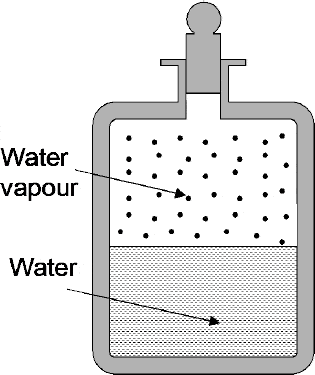
Polarity test on Current Transformer
Connect the battery negative terminal to the current transformer P2 primary terminal. This arrangement will cause a current to flow from P1 to P2 when + ve terminal is connected to P1 till the primary gets saturated due to the DC Voltage. If the polarities are correct, a momentary current will flow from S1 to S2.
A centre zero galvanometer is connected across the secondary of the current transformer. Touch or flick the +ve battery connection to the current transformer primary terminal P1. If the polarity of the current transformer is correct the galvanometer should flick in the +ve direction.
7.5.14 Test for CT magnetizing curve
It is necessary to test the characteristics of a CT before it is put into operation, since the results produced by the relays and meters depend on how well the CT behaves under normal and fault conditions. Figure 7.2 shows a simple test connection diagram that is adopted to find the magnetic curve of a CT.

Test for CT magnetization curve
In the circuit shown in Figure 7.2, the current is passed through the secondary from zero to the full rated current across S1 and S2. Hence a milli-ammeter is used to measure the currents, and the corresponding voltages across S1 and S2 are measured. This basically indicates the voltage generated at the secondary terminals corresponding to the currents flowing in the winding.
The readings shall be taken until the effect of increase in the current does not generate a proportionate in the voltage. The curve is to be drawn and the exact knee point is decided where the current increase of 50% causes less than 10% change in the excitation voltage.
7.5.15 Short circuit test
This is normally a destructive test and hence not done as a routine test. The short circuit ratings are generally defined to match the switchgear ratings in which they are used.
7.6 Tests on meters and transducers
The meters and transducers are used in low voltage circuits after the necessary step down of the primary voltages and currents using VT and CT. Hence the meters and transducers do not undergo exhaustive high voltage tests even when they are used in HV and EHV systems. They are basically tested for the following before they leave manufacturer’s place.
- Dielectric voltage tests as applicable for LV systems (maximum 2kV)
- Verification on the calibration to meet the desired voltage/ current range with specified accuracies for the range from 20 to 120% of the rated voltage or current.
- The transducers are tested for their ability to produce the current in linearity to the range of measurements for which they are designed, with external auxiliary supplies.
Transducers are basically tested to check for the current loop characteristics with external auxiliary supply when the actual input varies between 0 to 120%. The linear characteristic of the output current values corresponding to input values are measured and ascertained to be within the accuracy class of 0.5, adopted for most of the transducers.
Most of the modern transducers of established manufacturers are calibrated using special test equipment, having current and voltage dispensers which are stable to within 0.05% and have total harmonic distortion levels of less than 0.02%. They use precision voltmeters and watt meters, with 0.02% accuracy to calibrate to within 0.2% of full scale for current and voltage transducers and 0.2% of reading for power transducers. This accuracy is generally applicable for a complete range of operating conditions including a temperature range of 0 to 50°C and hence calibration and testing is very critical for transducers.
Modern power systems are subject to distortion due to use of electronic control systems and use of non-linear loads, which are not in the control of utility companies. The level of harmonic distortion up to 5% for 3rd harmonic is becoming common. Hence the errors resulting from harmonic distortion should be duly taken into consideration, while evaluating the use of measuring equipment.
As shown in Figure 7.3, even low levels of 3rd harmonic distortion can easily result in a 1% error on the output of a mean sensing transducer. It should be noted that calibrating or checking a mean sensing voltage or current transducer using a high stability source with low total harmonic distortion, can give erroneous results.
True r.m.s. current and voltage transducers utilize square-law circuitry to measure the true r.m.s. value of the input waveform. Hence these devices are not affected by guaranteed levels of distortion as shown in Figure 7.3. Power transducers respond correctly up to tenth harmonic because they use pulse height-width modulation of a square wave as the basic measurement technique.
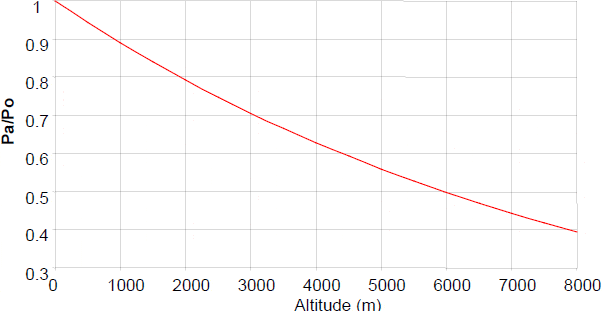
Errors with mean sensing transducers
Once the metering equipments leave the factories, they are tested in the field before put into service and also at regular intervals to establish their characteristics during the life cycle.
7.7 Need for field tests
The equipments are normally tested at manufacturer’s works and transported to site once the test results are satisfactory. Invariably there would be considerable time elapse between the factory tests and the readiness of site to charge the equipment. The time elapsed may vary from at least a month to several months depending on many factors. The installation and providing necessary connections also take considerable time, even if the site is waiting for the equipment. Following factors are unavoidable from the time the equipment is ready at manufacturer’s place till it is ready to get charged in the place of use.
- Time for packing and arranging for the transportation after completing all the commercial formalities.
- Transportation time from the manufacturer’s works to the place of installation depending upon whether the item is imported or locally available. Even in case of locally available equipment in the country of the project, transportation, distance and the facilities may make the delivery to go from a week to few weeks.
- Possible damages during the transportation either directly on the equipment or indirectly due to unknown reasons. Rough handling and improper packing can also lead to unknown damages.
- The delay in readiness of foundation or building may result in the equipment being kept in unfavorable climatic conditions in the filed that can affect the internal insulation of the equipment. Some times the environmental conditions in a construction site or an existing nearby plant can also result in some deterioration to the internal condition of the components and oil used in the equipment.
All the above reasons plus many other possible human mistakes are the general reasons for delay in energizing the electrical equipment. Hence it is necessary to ensure that there are no internal damages that can affect its life and performance. For example, the oil dielectric strength might have gone down over a period of time that would require filtration before charging a transformer. If not, an internal flashover or short circuit may make the whole project to wait for the transformer getting repaired. Similarly in a switchgear panel, some internal links or shorting may lead to similar issues.
The above reasons are basically related to the delay in energisation due to unavoidable reasons. Once the equipment is energized, it is necessary to have periodical maintenance to keep the equipment in healthy conditions. The maintenance activities may result in replacement of some components, some adjustments in the internal mechanism, some rewiring, etc. All these need also to be checked for correctness before the equipment is put back into service.
Some basic tests are prescribed especially for HV/MV equipment that are to be conducted before restoring the service or charging the equipment for the first time. These tests are named as pre-commissioning tests / checks, commissioning tests, maintenance tests, etc and since most of these tests are done in the field of service, these are referred to as field tests in this chapter. It should be recognized that many of the tests described in the earlier tests call for special test equipment/facilities and therefore are not feasible to be done at the installation site. While the factory tests are done with the object of ensuring manufacturing quality and establishing conformity with the relevant specifications, the aim of field testing is to ensure the health of equipment before energizing (after the first installation or subsequent maintenance work).
Field tests are usually performed by independent contractors, the installation contractor or the manufacturers. The individuals who perform the acceptance tests should preferably be certified and/or licensed for the equipment under test. The system should be initially checked for damage, deterioration and component failures using specific component checks, inspections, and tests defined by the equipment manufacturer. Then the interconnection of the system components should be checked using de-energized and energized methods, to verify the proper interconnection and operation of the components, ON/OFF control, system interlocks and protective relaying functions. It is recommended that all the field tests are witnessed by a person who could be the operator of the plant or in case of shortage of skilled man power, a commissioning engineer who is not associated professionally with the agency/ person performing the tests. Once the above tests are complete, the system can be energized and operational tests and measurements should be performed. All steps and results of the field tests should be carefully documented for review and for use in the future for comparison with the results of future tests. Considerable variation in the results of present tests compared to earlier tests is indicative of problems like deterioration of insulation, dirty environmental conditions, etc.
7.8 Safety precautions
The safety procedures given below are from IEEE Standard 510-1983 which stipulates the safety practices to be followed by all personnel dealing with high voltage applications and measurements so that any possible accidents are avoided due to the presence of electrical hazards while conducting the tests..
Considerations of safety in electrical testing apply not only to personnel but to the test equipment and apparatus or system under test. These recommended practices generally cover the practices needed while testing in laboratories, in the field and of systems incorporating high voltage power supplies, etc. A voltage of approximately 1,000 volts has been assumed as a practical minimum for these types of tests. Individual judgment is necessary to decide if the requirements of these recommended practices are applicable in cases where lower voltages or special risks are involved.
7.8.1 Basic precautions
- All ungrounded terminals of the test equipment or apparatus under test should be considered as energized and hence contacts with enclosures and internal parts shall always be avoided.
- The test set grounding connections should be solidly connected to the equipment being tested. As a minimum, the current capacity of the ground leads should exceed that necessary to carry the maximum possible ground current. The effect of ground potential rise due to the resistance and reactance of the earth connection should be considered.
- Precautions should be taken to prevent accidental contact of live terminals by personnel, either by shielding the live terminals or by providing barriers around the area.
- The circuit should include instrumentation for measuring and/or indicating the test voltages.
- Appropriate master isolation switch or an observer should be provided to ensure immediate de-energization of test circuits in case of unforeseen circumstances. In the case of DC tests, provisions for discharging and grounding charged terminals and supporting the insulation should also be considered.
- High-voltage and high-power tests should be performed and supervised by qualified personnel only.
7.8.2 Test area safety practices
- Appropriate warning signs like DANGER – HIGH VOLTAGE and other appropriate warning signs should be posted on or near the entrance in case of indoor equipment or on the barrier at all possible entry points.
- Automatic grounding devices should be provided to apply a visible ground on the high-voltage circuits once they are de-energized after the test. This may not be practically feasible for most of the HV/MV equipment. In such cases the operator should attach a ground to the high-voltage terminal using a suitably insulated handle. In the case of several capacitors connected in series, it is not always sufficient to ground only the high-voltage terminal. The exposed intermediate terminals should also be grounded. This applies in particular to impulse generators where the capacitors should be short-circuited and grounded before and while working on the generator.
- Safe grounding of instrumentation should take precedence over proper signal grounding unless other special precautions have been taken to ensure personnel safety.
7.8.3 Control & measurement circuits
- Leads should not be run from a test area unless they are contained in a grounded metallic sheath and terminated in a grounded metallic enclosure unless other precautions have been taken to ensure personnel safety. Control wiring, meter connections and cables running to oscilloscopes fall into this category. Meters and other instruments with accessible terminals should normally be placed in a metal compartment with a viewing window.
- Temporary measuring circuits should be located completely within the test area and viewed through the fence. Alternatively, the meters may be located outside the fence, provided the meters and leads, external to the area are enclosed in grounded metallic enclosures.
- Temporary control circuits should be treated the same as measuring circuits and housed in a grounded box with all controls accessible to the operator at ground potential.
7.8.4 Grounding & shorting
- The routing and connections of temporary wiring should be such that they are secure against accidental interruptions that may create hazard to personnel or equipment.
- Devices which rely on a solid or solid/liquid dielectric for insulation should preferably be grounded and short-circuited when not in use.
- Any capacitive object which is not in use but may be in the influence of a dc electric field should have its exposed high-voltage terminal grounded. Failure to observe this precaution may result in a voltage induced in the capacitive object by the field.
- Capacitive objects having a solid dielectric should be short-circuited after dc proof testing. If not, it may result in a buildup of voltage on the object due to dielectric absorption in the insulation. The short circuit should remain on the object until the dielectric absorption has dissipated or until the object has been reconnected to a circuit. It is good practice for all capacitive devices to remain short-circuited when not in use.
- Any open circuited capacitive device should be short-circuited and grounded before being contacted by personnel.
7.8.5 Spacing
- All objects at ground potential must be placed away from all exposed high voltage points at a minimum distance of one inch (25.4 mm) for every 7,500 Volts, e.g. 50 kV requires a spacing of at least 6.7 inches (171 mm).
- A creepage distance of at least one inch (25.4 mm) for every 7,500 Volts for insulators placed in contact with high voltage points.
7.8.6 High-power testing
- High-power testing involves a special type of high-voltage measurement in that the level of current is very high. Careful consideration should be given to safety precautions for high-power testing due to this fact. The explosive nature of the test specimen also brings about special concern relating to safety in the laboratory.
- Protective eye and face equipment should be worn by all personnel conducting or observing a high-power test where there is a reasonable probability that eye or face injury can be prevented by such equipment. Typical eye and face hazards present in high-power test areas include intense light (including ultraviolet), sparks, and molten metal.
- Safety glasses containing absorptive lenses should be worn by all personnel observing a high-power test even if electric arcing is not expected. Lenses should be impact-resistant and have shade numbers consistent with the ambient illumination level of the work area but yet capable of providing protection against hazardous radiation due to any inadvertent electric arcing.
- Whenever electric arcs are to be directly observed, safety glasses containing filter lenses should be worn by all personnel observing the electric arc test.
7.8.7 General
- All high-voltage generating equipment should have a single obvious control to switch the equipment off under emergency conditions.
- All high-voltage generating equipment should have an indicator which signals that the high-voltage output is enabled.
- All high-voltage generating equipment should have provisions for external connections (interlock) which, when open, cause the high-voltage source to be switched off. These connections may be used for external safety interlocks in barriers or for a foot or hand operated safety switch.
- The design of any piece of high-voltage test equipment should include a failure analysis to determine if the failure of any part of the circuit or the specimen to which it is connected will create a hazardous situation for the operator. The major failure shall be construed to include the probability of failure of items that would be overstressed as the result of the major failure. The analysis may be limited to the effect of one major failure at a time, provided that the major failure is obvious to the operator.
- Current transformers generally work at a low flux density. Core is then made of very good metal to give small magnetizing current. On open circuit, secondary impedance now becomes infinite and the core saturates. This induces a very high voltage in the primary – up to approximately system volts and the corresponding volts in the secondary will depend on the number of turns, multiplying up by the ratio (i.e. volts/turn x no. of turns). Since CT normally has much more turns in secondary compared to the primary, the voltage generated on the open circuited CT will be much more than the system volts, leading to Flashovers. HENCE AS A SAFETY PRECAUTION, NEVER OPEN-CIRCUIT A CURRENT TRANSFORMER ON LOAD!!! The general safety procedures to be followed while handling HV or MV equipment shall be applicable while testing the CT.
7.9 Commissioning of instrument transformers
Commissioning of instrument transformers need to be done with sequential checks, pre-commissioning tests and final commissioning tests as per established practices and as recommended by applicable standards. Before we review the tests adopted, we will have a review on the importance of these tests and how they are critical for the performance in the long run.
The following paragraphs brief the various steps and procedures for commissioning tests related to the instrument transformers (CT/VT).
7.9.1 Visual and mechanical inspection
- Inspection and verification on physical damages, if any and compliance with approved drawings
- Mechanical clearances and proper operation of disconnecting switches for instrument transformers – Current transformer secondary isolations are usually done at the tests links located on the relevant protection panel. Other standards may exist and reference should be made to the circuit drawing before proceeding. Ensure that the relevant d.c. isolations are complete before proceeding.
- CT links are intended to isolate and make the current transformers safe when secondary equipment is being worked on, removed, or taken out of service.
- As a rule, when ‘shorting and disconnecting’ first operate the shorting link for all phases (and neutral if fitted), then operate the disconnect links. Thus, the three phases and neutral are shorted with the result that the three CTs are made safe and secondary equipment can then be worked on.
- When restoring to service use the reverse procedure, i.e. operate the disconnect links to connect, and then remove the shorting links. When using test blocks, arrange test block connection to either ‘short’ or ‘short and disconnect’ before inserting.
- Proper grounding
- CT shorting links.
7.9.2 Electrical tests
- Winding resistance tests
- Polarity verification as per connections
- Ratio tests
- Insulation resistance test on secondary to ground with 500V instrument
- Optional – Saturation curve and burden test on secondary side.
- Secondary injection tests with primary disconnected
Some of the important checks needed in the testing are given in the following paragraphs.
7.9.3 Checks on connections, shorting, earthing
An ohm meter or contact resistance test set shall be used to measure the resistance between the instrument transformer secondary grounding connection and ground to ensure an electrical connection is installed. Special attention is required to ensure that the VT secondary of any connected group is grounded at one point only and that the ground connection cannot be easily removed while the VT is in service. Similarly in the case of current transformers, wherever possible, primary earths are to be applied to one side of the CT primaries only. Where this is not possible, all the CT secondaries should be shorted and disconnected at the CT test links.
As far as possible, it shall be ensured that multiple grounds do not occur, particularly when the synchronizing systems are enabled.
The application of portable or switched earths can cause loss of discrimination and reduction of sensitivity of the operating protection circuits connected to the CTs. Discrimination is lost because the current induced in the primary short also induces current in all the other CTs in the stack and this can result in unwanted protection operation. The reduction in sensitivity occurs because the shorted CT effectively shunts current away from the relay.
Before energisation, it is necessary to see whether the burden of an instrument transformer is within its specified limits and that it does not get shorted, to avoid the rate burden being exceeded.
7.9.4 On load voltages and phase rotation wiring checks
Once a VT is installed at the desired location, it is necessary to follow the wiring diagram strictly from its secondary. Any change in the wiring and interconnections can result in erroneous readings of voltages or phase rotations.
7.9.5 Winding resistance measurement
This test is necessary for checking the resistance of the windings of a VT, to ensure they are very near to the calculated values. The measurements are usually made by the wheatstone bridge method. The bridge method is more accurate, but requires more cumbersome equipment, and is adopted for a wide range of resistance in the factories. In making measurements of the resistance of the winding, an accurate measurement of the temperature should be made at the same time, as resistance changes with temperature.
The wheatstone bridge uses the primary winding as the ‘resistance to be measured’ in its bridge. By balancing the bridge, the actual resistance is then known. The same method is used for the secondary winding.
Alternatively, a simple multimeter is used in the field to conduct the winding measurement test. Check that the primary terminal shows very low voltage and that the secondary terminal also shows a low voltage. This is just to ensure that the CT received has not been subjected to any internal damage, which would have broken the winding inside.
To protect against insulation failure, the test voltages of CT and VT shall never exceed 1000 volts on any of the secondary windings being tested.
7.9.6 Polarity tests
A test set up is shown in Figure 7.1 for the polarity test of current transformers in the field. A similar test arrangement is also followed for the voltage transformer polarity check.
7.9.7 Ratio test
The ratio is the most important parameter for the instrument transformers as they decide the functionality of relays and meters connected to them. The multiple tap VT/CT data shall be correctly recorded in the tests and all documents so that any need for changing the taps can be decided appropriately. In the case of current transformers, it might be necessary to use a low voltage high current device to test for the ratio.
In the case of voltage transformers, a known voltage, usually less than normal to the highest winding is applied and the readings of the secondary windings are recorded, similar to the power transformer tests. Alternatively a tested voltage transformer may also be used.
It is not necessary to use the same primary voltage/ current for checking the ratio. Any lower value can also be applied, and based on the readings of the primary and the secondary voltages/ currents the ratio of the primary to the secondary can be calculated. This ratio should almost match the ratio mentioned in the test report.
7.9.8 Insulation resistance
Insulation resistance (IR) test is an important test for all electrical equipment before they are put into service either before commissioning or before the equipment is put into service after a long shut down. IR testing ensures the following.
- Prevent sudden and unexpected equipment failure
- Prevents electric shocks
- Ensures safety of people
- Reduces down time.
- It helps to detect deterioration of insulation so that maintenance and repair work can be scheduled in advance.
Observing the insulation quality after the repairs helps to ensure efficiency. Some of the common reasons for insulation failure or low resistance values are Moisture, dirt, corrosive vapors, oil contamination, aging and loose wiring.
The IR test is generally done with DC source because it is a non-destructive process and historical data can be compiled for ready reference. Depending on the primary voltage, a maximum DC megger rated 5kV is used, generally as per Table 7.7.
IR test voltages based on rated voltages
| System Voltage | IR Test Voltage |
| Up to 1000V | 500 Volts |
| > 1000V up to 3300 Volts | 500-1000 Volts |
| >3300V up to 6600V | 2500-5000V |
| > 6600 Volts | 5000 Volts |
For single-phase voltage transformers, readings with following different connections give a complete picture of insulation resistance value.
- high voltage winding to low voltage winding to ground
- low voltage winding to high voltage winding to ground
- high voltage winding to low voltage winding
- high voltage winding to ground
- low voltage winding to ground.
For a three-phase type, five different connections should be made, and their readings give a complete test of insulation resistance. These connections are:
- high voltage winding to low voltage winding to ground
- high voltage winding to ground with low voltage winding to guard
- high voltage winding to low voltage winding
- low voltage winding to ground with high voltage winding to guard
- low voltage winding to high voltage winding.
The equipment to be used is a simple Insulation tester or megger. Connect the positive terminal of the Insulation tester to the P1 terminal of the primary. Connect the negative terminal to the body of the IT or the base plate (not the P2 terminal). Select the proper test voltage as per the rating of the VT. Turn the insulation tester ON and keep it ON for one minute. The final stable reading on the insulation tester give the IR value, generally read in Mega ohms. Once the test is completed, switch off the insulation tester and use a properly connected grounding rod to discharge the primary winding at the P1 terminal before modifying the connections for the next set of readings.
In order to arrive at correct decision, it is necessary to have the test results of the factory tests or the previous tests for the same windings with same voltages under similar field conditions. The values shall show minimum variation to the earlier readings. Any abnormal differences compared to the earlier readings, give an indication on the extent of deterioration of the insulation, over the time.
The discharge of voltages is necessary after every test and it shall be ensured that there are no intentional or accidental contacts with the terminals of the test windings while taking the readings, it shall be necessary to record the ambient temperature, etc so that the results in future can be properly compared without any assumptions.
In the case of current transformers, following steps are generally adopted.
- CT secondary circuits should be meggered at 1000V from the CT test links during panel meggering.
- Individual groups are meggered with other groups and the HV earthed.
- The CT primary should be meggered at the applicable test voltage based on the primary rated voltage.
7.9.9 Field insulation test values
It is recommended that field tests of insulation should not be in excess of 75 percent of the factory test voltage. It is usual practice to adopt 75% of the factory test voltages for old apparatus rebuilt in the field while for periodic insulation tests a limit of 65% of the factory test voltage is recommended. These recommendations relate to dielectric tests applied between windings and ground and to induced voltage tests.
7.9.10 Acceptance criterion
The acceptance of the tested equipment based on the test results shall be decided generally as indicated below.
- Polarity shall meet the requirements as per connections. If not, correct the connections.
- The ratio shall be within tolerance as per approved test reports.
- The IR values shall be more than 100 mega ohms.
7.10 Maintenance of CT, VT and metering devices
Generally maintenance is not a major requirement for voltage transformers and current transformers as they are static equipments. However they are likely to fail due to the following reasons and hence corrective steps and periodical cleaning are to be taken as below.
- Excessive dust or other kinds of pollution can reduce the creepage distance and affect the instrument transformers. The surface dust shall be brushed off the instrument transformer surfaces after taking all safety precautions. Polluted transformers can be cleaned with spirit, petrol or toluene, after availing a small shut down, which does not affect its purpose.
- Traces of arcs and minor surface damages can be easily removed with sandpaper, after which the surface should be treated by applying a thin layer of silicone paste to put back into service.
Meters shall be separated into groups having common physical attributes and the average performance of each group will be determined based on the weighted average of the meter’s percentage registration at light load (LL) and at full load (FL) giving the full load registration a weight factor of four (4).
Analysis of the test results for each group evaluated shall be done in accordance with the statistical formulas outlined in ANSI/ASQC Z1.9 – 1995 Formulas B-3, Tables A-1, A-2 and B-5. The minimum sample size shall be 100 meters when possible.
It is necessary that the meters installed are checked and calibrated at established intervals to minimize errors and to maximize profits.
Recommended calibration schedule for the meters
| Type of service | Calibration schedule recommended |
| Direct 240 and 415V | Atleast once in 3 to 5 years |
| CT operated 415V and HV | Every year |
| HV metering beyond 5000kVA | Half yearly |
| EHV metering | Quarterly |
7.11 Summary
Testing of electrical equipments is necessary to prove their performance, technical capability, and to give confidence to the users on the accuracy and safety factors. The tests are broadly classified as routine tests, type tests, sample/ acceptance tests, special tests and field tests. Since the insulation forms the main requirement of the VT and CT windings, these are tested by different combination of tests like power frequency voltage tests, switching impulse tests, etc to ensure that the equipment can safely operate at the design voltages, which can range from a few volts to several kilo volts. Temperature rise test, short circuit test and ratio tests prove the basic design requirements of the instrument transformers for the chosen application. The ratio test and accuracy test results ensure that the outputs from the equipments provide reliable metering and relay applications. Some of the tests like partial discharge tests, RIV tests are applied for instrument transformers above around 72.5kV ratings. In regard to meters and transducers, the tests are limited to dielectric test at low voltage and calibration/ accuracy checks.
Though factory tests are done on all electrical equipment, it is necessary that field checks and tests are done prior to putting them into service. Field tests require lot of safety practices to be adopted to avoid equipment damages and personnel accidents/ shocks. These include proper grounding, safety clearances, caution notices, proper isolations, providing CT shorting links, etc. Insulation resistance test, polarity test and ratio test are the important tests normally conducted on metering transformers as part of commissioning tests before putting them into service.
Maintenance of metering devices can be followed up with proper schedule based on the location of the devices and the nature of the surroundings (for cleaning the surfaces) as well as the metered readings. Meter calibrations shall be decided based on the accuracy levels and the consumption patterns, so that the errors do not affect both the utility companies and the consumers.
8
Future of Metering Technology
With technological advancement, conventional metering has undergone many changes from the electromechanical type to the present well known numerical type. It is still undergoing changes with the incorporation of micro chips and communication links. In this chapter we will review the smart metering principles and how they are slowly penetrating into distribution systems. We will also discuss features of automatic meter readings which are assisting utilities and consumers by providing remote and immediate access to stored data.
Learning objectives
- Smart metering
- Technology behind smart metering
- Benefits of smart metering
- AMR and metering for smart grids
8.1 Smart metering
As the name implies, “smart metering” shall be able to provide a level of service above and beyond the measurement of consumption of a measurable item and provision of other useful technical parameters, which are already available in many modern meters. The name “smart metering” not only refers to the metering of electrical measurements but also refers to future metering of many public distribution services like water, gas, steam, etc. Smart metering has a range of special functions:
- Measurement consumption over the fixed periods in line with the metering codes and local requirements.
- Storing the measured data for multiple time periods, with the time period adjustable by the service provider and having tamperproof access.
- To provide ready access to the stored data by consumers as well as by the utility companies or their representatives, with suitable interfacing devices like video display unit, hand held equipment (HHE), etc.
In addition to the above, smart metering also provides at least one of the following functions:
- The local display of the data shall be available in a user friendly and meaningful form to the consumers in order to analyze and control their internal consumption.
- The data measured and recorded shall cover broad parameters such that the Distribution Company can use such as parametric details for the purposes of system monitoring, operation and control, future planning as well as loss assessment.
- Shall allow adjustment of billing for different time periods (to facilitate time-of-the day tariffs) as may be fixed by utilities for the purposes of demand control.
The Italian utility ENEL are the pioneers in installation of smart meters since 2001. Important reasons for ENEL to take up this exercise were the expected savings or revenues in the areas purchasing, logistics, customer services and theft prevention. ENEL has chosen smart electricity meters that communicates through Power Line carriers to the nearest substation. Immediately thereafter, centralized control rooms are able to read the data through GSM. By the end of 2005, ENEL had 27 million smart meters installed, of which 24 million meters are being remotely managed and read bimonthly.
8.1.1 Present day smart meters
“Smart” meters have undergone many improvements over time, and today smart meters with the following capabilities are available in many European countries, North America and Australia.
- Possibility to read the meter both locally and remotely, whenever needed.
- Remote control of the output through the meter including isolation of the electricity supply to the customer as an extreme step, in case of defaults.
The data from smart meters are usually collected by any of the following systems.
- Using handheld equipment (HHE) with an infrared optical probe carried by the meter readers.
- Through a public communications infrastructure like telephone, cellular phone or two-way paging.
- Over a fixed private communication network owned by the utility like power line carrier (PLC).
The electricity meter usually communicates by means of a modem or an optical link. Meters are available that can continue to accumulate data at fixed intervals of 15, 30, 60 minutes for almost two to three months continuously. These smart meters are commonly used in commercial and industrial applications and are also available in single phase, 200-ampere versions for residential applications. Data is usually collected manually by connecting the HHE to an infrared optical probe in the front of the meter. The HHE then collects the accumulated data which can be transferred to the utility data systems by the meter readers area wise, for billing and monitoring purposes. Typical smart meters with interface ports are shown in Figure 8.1

Typical smart meters with interface ports (Courtesy: GE)
8.1.2 Implementation of smart metering
Though smart metering offers many benefits, a cost analysis is needed before the same can be implemented. The cost analysis shall be able to make a true comparison on the benefits to the various stakeholders of the power systems in terms of monetary values, for example the heavy investment needed to install smart metering at many consumer premises which can run in to thousands of small installations in cities and major towns. The following are some of the many factors that can have a considerable impact on the final cost and return on investment (ROI) to effectively implement a smart metering system, in a region.
- Remoteness of metering points: The cost increases with increased remoteness of the location due to the travel time involved, cost involved in establishing associated infrastructure, etc.
- Availability of skilled personnel who can read and use the systems in an able manner and can detect and correct small errors.
- There is also relatively high cost needed for providing “on call” services to rectify problems in the connections, or to undertake routine connection and disconnection of services, especially in distant areas.
- The type of communication infrastructure available in the country and ability to cope with changing technologies in the Information Communication technology, which is the backbone for smart metering.
- The possibility (or otherwise) of dividing the resultant cost between the consumers and the utility companies.
- Regulatory customer service and other safety obligations, which can considerably increase the costs of implementation and roll out.
8.1.3 Drivers of smart metering
Smart metering technology can best achieve its objectives and become economically viable when looked at in the overall context of better management of the grid and benefits to both the supplier and the consumers. For example, smart grids of the future (described later in this section) will rely greatly on smart metering technologies and will be impossible to implement without them. However smart grids are still in an evolutionary phase and not fully standardized as yet. Therefore any investors in smart metering technologies must ensure that they will be able to fit seamlessly into the new smart grid technology without conflict and without the need for repeating the investment.
8.2 Technology behind smart metering
The smart technology communication infrastructure combines two modern technologies to transfer readings and to achieve management of control between the central control area and the various smart meters, spread across a country. Figure 8.2 shows the basic technological features of a typical smart metering system.
Firstly, communication is achieved from a set of meters which are all interconnected to a common nearby “data concentrator” through the Power Line Carrier. The modem linked to each meter and the data concentrator allows the recorded data to be encoded and decoded and transmitted as an electro magnetic signal much above the 50/60 Hz mains voltage frequency, similar to the internet technology. This PLC technology basically uses the existing network of electrical cables which ensures a convenient and economical solution which is well suited in densely populated areas. However the signal strength deteriorates with the transfer distance and hence requires careful planning for locating the data concentrators so as to effectively collect all data. Subsequently the data concentrators encode the collected data in digital format and transfer to the upstream central control area using the GPRS (General Packet Radio Service) network, which is much more reliable compared to PLC for transfer of data over very long distances. It requires some additional communication equipment like antennas and towers in the selected areas to ensure efficient data transfer. By use of off-peak bandwidth time and efficient data compression, the operating costs for the transfer of information by the GPRS network can be optimized.
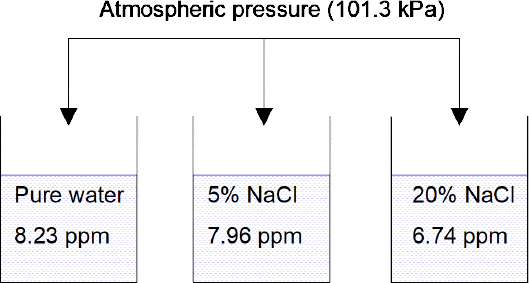
Technologies used in smart meter data transfer and management
Secondly an Information System for data management is needed to complete the full cycle of operation and to achieve the purpose of smart metering. Since the system always involves millions of permanently connected smart meters (to achieve breakeven) it results in a very large volume of data to be transferred, stored and processed. The daily transmission of load data read (on a 15 or 30 minutes intervals) by millions of meters corresponds to many terabytes of data that shall have to be effectively received and handled each day. The management of this data normally involves a powerful and highly complex information system to store and process all these data. The information system must be highly efficient, totally reliable, fully secure to achieve proper readings, the system shall also be able to match several million of devices, which are expected to be in service for many years.
Figure 8.3 shows the internal components of a smart meter (Courtesy: Texas Instruments) currently in the market for a three phase system.

Typical Smart meter internal circuitry (Texas Instruments)
8.3 Benefits of smart metering
Smart metering helps many of the stakeholders in power generation, distribution, metering and actual consumers. A brief list of benefits applicable to different stakeholders is given in the following paragraphs.
8.3.1 Benefits to generation companies
- Planning for future generation
- Load dispatch and control
- Grid condition monitoring
8.3.2 Benefits to power suppliers
- Decisions on Pricing
- Energy management services
- Fast handling of bill complaints
- Reduced complaints
- Better controls on bad debts
- Improved portfolio management
8.3.3 Benefits to distribution network companies
- Quick identification of fault locations
- Faster restoration of faults
- Detection of distribution losses and theft
- Monitoring of grid voltage and other parameters
- Better planning of infrastructure
- Better asset management.
8.3.4 Benefits to metering companies
- Efficient meter reading
- Remote access for activation/deactivation/maintenance of supply.
8.3.5 Benefits to consumers
- Customer awareness on practices needed for energy savings
- Reliable and accurate meter reading and billing
- Improved service quality from supplier
- Possibility for tariff variety and flexibility to match consumption
- Switching over to different suppliers
- Ensuring increased competition among suppliers leading to better services
- Ability to manage consumption
- Potential for other future services to be attached leading to smarter homes
8.3.6 Prepayment and smart metering
With technological excellence, it is possible to use smart metering with prepaid options selected by consumers, similar to cellular phones. These facilities ensure better revenue management for the utilities with increased cash flow, reduction / elimination of billing cycle, etc. The customer satisfaction will also increase owing to possibilities of budget control and ease of bill payment for the consumption. Various options of prepayments like peak load control, usage at flexible times, etc can be selected by the consumers to avail better value for the money paid.
A significant operational and cost improvement can be achieved in the power sector, especially if the metering is coupled to major load consumption equipment (for households these are mostly electrical appliances and Heating / Ventilation/ Air conditioning-HVAC systems). The customer can do a demand management through smart metering by shifting the major loads to off peak periods. This can benefit both the consumers and utilities.
8.4 Automated meter reading (AMR)
The advancement of smart metering is paving the way for automated meter reading and smart grid concepts in advanced countries, with companies and Governments implementing policies and regulations to effectively upgrade their power networks.
8.4.1 Basics of AMR
Automated Meter Reading (AMR) is a remote reading system based on an advanced communication technology that helps utilities to read electronic meters at distances well away from the consumer locations, without a need for visiting these places. The AMR can be scheduled to read the energy consumption on an hourly, daily, weekly, monthly or on an annual basis. Consumption and supply status data transfer including time of reading are through different types of communication media to a common central location, which can handle the data for billing as well as for analysis purposes.
The various connection media possible in today’s technology are:
- Power Line Communication
- Broadband communication
- Radio
- GPRS/GSM
- Cables (optical fibre)
- Telephone lines
- Satellite
8.4.2 Technical features of AMR
AMR is a process of digitally recording the energy meter figure values from a location away from the metered point, in automatic set intervals. This process eliminates the traditional manual reading/ recording/processing of the meter data by meter readers. Automatic Meter reading also makes the data recording to be achieved in a fast manner thereby saving considerable time. The AMR can be classified into two types based on the distance between the meter reading station and the target meter.
- Local reading by a hand held device communicating with the meter for collecting the data and then transferring the collected data to the remote control station.
- Collection of data directly from a central office located far away by using appropriate modems to interface with the meters.
Refer to Figure 8.4 for the block diagram.
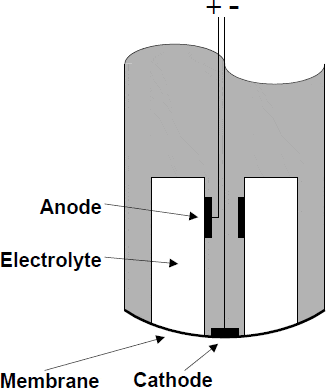
Typical parts of AMR system
The typical components adopted in AMR system are:
- Numerical Energy Meter: The measurements are done by a modern electronic meter without any moving parts which is usually provided with an auxiliary UPS to ensure communication even during power outages. The smart meters described in the earlier section belong to this category.
- Interface Device on the meter: Interface device that is capable of communicating with HHE or the remote station, based on the system adopted and the communication media selected.
- Communication Media: This one includes a set of complex sub elements like the local-loops at each end, intelligent switches, and data transfer lines like micro-wave, fiber optics or VSATS.
- Interface Device at remote location: It is functionally similar to the interface device on the meter normally GSM compatible.
- PC with software suite: The software suite shall have facility to dial the target number, establish a data call, collect the meter reading and close the session at selected intervals as programmed.
The various communication media that can be used for AMR are:
- Public Switch Telephone Network (PSTN)
- Wireless in local loop (WLL), which includes Global system for Mobile communication (GSM) or code division multiple access or CDMA.
- Dedicated radio link which includes Low Power Radio (L.P.R.) and High Power Radio (H.P.R.) based AMR.
- Fibre optic/coaxial cable.
- Power line communication and VSats.
In France, eRDF, the new subsidiary of EDF which operates the electricity distribution networks, is having plans to replace the entire residential electricity meters under its control in France with smart meters by 2015. This is expected to install a total of 35 million smart electricity meters which is presently the biggest AMR scheme under adoption.
8.4.3 Benefits of A.M.R. To the utility
- The time to access the site and the time to read the meter manually will be drastically reduced.
- Meter readings will be accurate and human errors while reading, recording and data entry are eliminated.
- The obstacles and inconvenience to access meters due to location (remote/ rural/Indoor) will be eliminated.
- Cost for meter reading i.e. the number of personnel for meter reading including transportation costs will be reduced.
- Risk mitigation and insurance cost will be minimized.
- The utility’s cash flow will be improved due to faster meter reading, bill preparation and distribution.
- There will be improved vigilance as demand of the consumer will be readily available and any theft in power will immediately be noticed.
- There will be quick detection of any defect in the meter.
- Consumer’s complaints on account of meter reading and billing will be avoided.
To the consumers
- Consumers can budget their expenditure on electricity by regularly keeping a watch on their consumption.
- The reading date/ time for each month can be fixed enabling consumers to limit their consumption, if needed.
- Total transparency in Meter reading/billing will be ensured.
- The bills can also be sent directly by e–mail to the consumers to save time.
- Improved service quality, more options and faster response time will eliminate consumer complaints and result in customer satisfaction.
8.5 Smart grid
A lot of discussion in the USA on electric power networks these days centers around ‘smart grids’. Smart grids are power grids which make effective and innovative use of available mature technologies, particularly the information and communication technology (ICT) to achieve significant economies for the power utilities and appreciable savings to the consumers.
One of the definitions of a smart grid goes as follows: A smart grid is a comprehensive and innovative way of adapting our current grid to fit the electric needs of our culture. A smart grid will proactively allow utilities to reduce peak demand by actively managing production and consumer demand. It will also identify efficiency opportunities ensuring that consumers and utilities have accurate, timely and detailed information on the energy being used. A smart grid is inherently safer than our current grid. With its two-way communication, a smart grid can quickly identify, respond to, and recover from threats and interruptions. The smart grid will seamlessly integrate all clean energy technologies from roof-top solar systems to wind farms to electric vehicles. These benefits are also a step toward becoming more fossil-energy independent.
However, smart grids may mean different things to different people. For example, Tuscan Electric Power Co., Arizona looks at smart grid as six separate concepts/technologies that allow for remote control and monitoring of equipment. Each item offers potential benefits to the utility and to its customers. The concepts are comprised of:
- Substation automation
- Distribution circuit remote switching
- Distribution capacitor switching with communications
- Advanced meters and meter data management (MDM)
- Demand response (DR)
- Home area network (HAN)
Naturally, one of the key movers of smart grids will be the way electricity tariffs are formulated to encourage consumption during lean periods of the daily load cycle (and discourage usage during peak or heavy load periods); in other words, the introduction of ‘time-of-the day’ or demand-based tariffs. One has to be however aware of the pitfalls such as cost of implementation, justification of cost vis-à-vis the benefits accruing and most importantly methods of addressing security issues that may arise while using public datacomm infrastructure for its operation.
A detailed description on smart grid is provided in a report titled Modern Grid Initiative, published by the U.S. Department of Energy (DOE)/ National Energy Technology Laboratory (NETL). The report includes a comparison between today’s grid and modern grid (smart grid) by analyzing key issues through seven major characteristics noted below:
- Self-healing
- Motivation and participation of the consumer
- Resists attack
- Provides power quality for 21st century needs
- Accommodates all generation and storage options
- Enables markets
- Optimizes assets and operates efficiently.
The comparison between services in the current scenario and the smart grid foreseen in the next few years is shown in Table 8.1.
Comparison between Today’s Grid and Smart Grid (Modern Grid)
Source: The NETL Modern Grid Initiative
| Characteristics | Today’s grid | Smart grid |
| Self-heals | Focus is on protection of assets following system faults. Basically responds to prevention of further damage. | Focus is on prevention of faults and to minimize consumer impact due to faults. Shall automatically detect and respond to actual and emerging transmission and distribution problems. |
| Motivation & Participation of the consumer | Consumers are uninformed and non-participative with the power system. | Active conumers who are well informed and more involved. Broad response to individual demand management.. |
| Resists attack | Vulnerable to malicious acts of terror and natural disasters. | Resilient to attack and natural disasters with rapid restoration capabilities. |
| Provides power quality for 21st century needs | Slow response in resolving power quality issues. More focused on outages rather than power quality problems. | Quality of power shall meet industry standards and consumer needs. PQ issues to be identified and resolved well in advance with various levels of PQ at various prices. |
| Accommodates all generation and storage options | Relatively small number of large generating plants. Numerous obstacles exist for interconnecting DER. | Very large numbers of diverse distributed generation and storage plants with “Plug-and-play” convenience. More focus on and access to renewable energy. |
| Enables markets | Limited wholesale markets still working to find the best operating models. Not well integrated with each other. Transmission congestion separates buyers and sellers. | Mature wholesale market operations in place; well integrated nationwide and integrated with reliability coordinators. Retail markets flourishing where appropriate. Minimal transmission congestion and constraints. |
| Optimizes assets and operates efficiently | Minimal integration of limited operational data with Asset Management processes and technologies. Siloed business processes. Time based maintenance. | Greatly expanded sensing and measurement of grid conditions. Grid technologies deeply integrated with asset management processes to most effectively manage assets and costs. Condition based maintenance. |
The implementation of the smart grid is enabled with the following drivers in a country and can be delayed in case these driving forces are ineffective or non existent.
- Liberalization of energy markets (in particular full competition at retail level as practiced in the EU since July 2007).
- Evolution of Government regulatory frameworks in supporting competitive market environments.
- Technology developments, mainly in the field of ICT.
- Growing consumer interest on possibilities of reducing their electricity bill and willingness to absorb a part of the expenditure.
- The need to curb energy consumption levels, dictated by international policies and commitments related to energy efficiency and greenhouse gas emissions.
8.6 Summary
Today’s technological advancements are reflected in electrical metering systems in the form of smart metering and automated meter reading. Smart metering refers to metering system that deploys specific communication links in a user friendly manner to collect data from various meters and transfer the collected data to a remote station for billing and monitoring purposes. Smart metering is now being considered for adoption in many public distribution systems like water, gas, steam, etc. The smart meter shall have suitable communication links to facilitate transfer of data and for direct control of the system operation through the meter.
Today’s smart metering systems commonly adopted in US and European countries use local data concentrators for a group of local meters which collect data from the meters through power line carriers thereby saving considerable investment cost. The PLC necessitates the data concentrator to be located close to the metering points, to avoid loss of data and error in readings. The data collected at the concentrators shall then be transferred to a remote location for data management and control having PC and suitable software suites.
Smart metering helps utilities, distribution companies and consumers in many ways. Notable among them are the improved service quality due to competition and reliable measurements with modern instruments. The system efficiency can be improved drastically with reduced complaints on billing errors. Prepaid services would also be possible with smart metering.
The automated meter reading (AMR) is an extended form of smart metering and provides many benefits to the utility and consumers. The automated meter reading almost cuts down the human interface for riding the meter data and instead a remote device directly communicates with local meters for collection of required data at specific intervals of time without need to go to the service locations. Today’s cellular technology AMR in addition to other communication methods like telephone lines, fibre optic cables, etc. can be effectively used to have an efficient system.
The ultimate aim of smart metering is to achieve a smart grid which is expected to have more knowledgeable consumers who will have active participation in load management thereby saving considerable peak grid demands in the long run. The smart grid is aimed for implementation in the coming decade and is expected to provide faster response to the consumers with minimum faults and disturbances and better power quality.
Appendix A – Assignment
1. True or false
1.1 The impedance offered by a voltmeter is low (True/ False)
1.2 The primary of a VT offers high impedance (True/ False)
1.3 A CT is connected in parallel with the main circuit (True/ False)
1.4 Opening of the primary of a CT is hazardous (True/ False)
1.5 The output of a current transducer depends on the load connected to the secondary of the transducer (True/ False)
1.6 The rated burden of the CT should be less than the connected burden of the CT (True/ False)
1.7 Power factor is the ratio of real power to reactive power (True/ False)
1.8 The ratio of currents in primary and secondary of a CT is directly proportional to the ratio of number of turns in primary and secondary (True/ False)
1.9 A moving coil ammeter can be used to measure AC current (True/ False)
1.10 Three phase power can be measured using only two watt meters (True/ False)
1.11 A single phase watt meter can be used to measure power in an unbalance three phase circuit (True/ False)
1.12 Modern digital ammeters offer very high burden (True/ False)
1.13 Measuring instruments on the secondary side of a VT are connected in parallel (True/ False)
1.14 A moving coil power factor meter does not have a spring for providing control torque on the pointer (True/ False)
1.15 The power factor of a capacitive circuit is lagging (True/False)
2. Calculate the peak value and average value of a voltage supply whose RMS value is 415 V.
Peak value = RMS value/ 0.707
= 415/0.707
= 586.9 V
Average value = 0.637 x Peak value
= 373.85 V
3. A 90 kW, 415V, three phase induction motor draws a current of 110 amps at a lagging power factor of 0.85. What is the power drawn by the motor?
Power = 1.732 x V x. I x Cos φ
V = 415 V
I = 110 A
Power factor = 0.85
Therefore power drawn by the motor = 1.732 x 415 x 110 x 0.85
= 67.2 kW
4. Calculate the percentage ratio error of the CT with following details:
CT ratio = 100/1
Actual current in secondary for a actual primary current of 100A = 0.87 A
Percentage CT ratio error = (Kn × Is) – Ip ) × 100 / Ip
Where
- Kn is the rated transformation ratio
- Ip is the actual primary current and
- Is is the actual secondary current when Ip is flowing, under the conditions of measurement
Percentage CT ratio error = (100 x 0.87) – 100/ 100
= 0.13 %
Appendix B – Quiz
Chapter 1
- Reactive power in an electrical circuit is given by VA or KVA (True/ False)
- The instantaneous value of voltage in a DC system is given by Vmax Sin (2πft) – (True/ False)
- Instrument transformers are based on the principle of electro magnetism (True/ False)
- Power tariff instruments need not have high accuracy as the cost of investment is high (True/ False)
- Transducers can be used to provide isolation between high voltage power circuits and low voltage instrumentation circuits (True/ False)
Chapter 2
- The primary of a VT offers high impedance (True/ False)
- Measuring instruments on the secondary side of a VT are connected in parallel (True/ False)
- The secondary of a VT has less number of turns than its primary winding (True/ False)
- A capacitor type VT cannot be used for very high voltages (True/ False)
- Ferro resonance is a phenomenon caused by the high voltages of lightning strikes (True/ False)
Chapter 3
- A CT primary is always connected in parallel with the main circuit (True/ False)
- CTs used for protection should get saturated at lower currents than those of metering CTs (True/ False)
- The ratio of currents in primary and secondary of a CT is directly proportional to the ratio of the number of turns in the primary and secondary (True/ False)
- Opening of the primary of a CT is hazardous (True/ False)
- The rated burden of the CT should be less than the connected burden of the CT (True/ False)
- Calculate the percentage ratio error of the CT with the following details:
CT ratio = 100/1
Actual current in secondary for a actual primary current of 100A = 0.87 A
Chapter 4
- The impedance offered by a voltmeter is low (True/ False)
- Power factor is the ratio of real power to reactive power (True/ False)
- A moving coil ammeter can be used to measure AC current (True/ False)
- A single phase watt meter can be used to measure power in an unbalanced three phase circuit (True/ False)
- Modern digital ammeters offer very high burden (True/ False)
- Calculate the peak value and average value of a voltage supply whose RMS value is 415 V
- A 90 kW, 415V, three phase induction motor draws a current of 110 amps at a lagging power factor of 0.85. What is the power drawn by the motor?
Chapter 5
- The output of a current transducer depends on the load connected to the secondary of the transducer (True/ False)
- An active transducer needs auxiliary power supply for functioning (True/ False)
- The standard output current ratings for transducers are 1 A and 5 A (True/ False)
- Open circuiting of the secondary of a transducer is hazardous due to inducement of very high voltages (True/ False)
Chapter 6
- Billing of consumers in based on control metering (True/ False)
- ____________ metering is used to obtain the total consumption of several feeders using a single meter
- 5% and 10% are the normal accuracy limits used for tariff metering (True/ False)
- Utility companies employ _______ for regulating the metering used for various types of consumer installations
Chapter 7
- Type tests have to be conducted on each device manufactured by the manufacturer before dispatch (True/ False)
- Routine tests are those tests performed on a routine basis during maintenance to ensure the healthiness of equipment (True/ False)
- Name any three electrical tests to be conducted on instrument transformers _____________, ____________, ________________.
- Tests to be conducted in the field before energizing the equipment are called _________
Chapter 8
- List two advantages of Smart metering
_______________________________________________________
_______________________________________________________
- Cost-Benefit analysis is not as important for Smart metering when compared to normal tariff metering (True/ False)
- AMR metering enables Utility personnel who visit the consumers to quickly collect metering data using hand held portable data collection devices (True/ False)
- List two advantages of Smart grids
____________________________________________________________________________________________________________________________
Appendix C – Quiz Answers
Chapter 1
- Reactive power in an electrical circuit is given by VA or KVA (
True/ False) - The instantaneous value of voltage in a DC system is given by Vmax Sin (2πft) – (
True/ False) - Instrument transformers are based on the principle of electro magnetism (True/
False) - Power tariff instruments need not have high accuracy as cost of investment is high (
True/ False) - Transducers can be used to provide isolation between high voltage power circuits and low voltage instrumentation circuits (
True/ False)
Chapter 2
- The primary of a VT offers high impedance (True/
False) - Measuring instruments on the secondary side of a VT are connected in parallel (True/
False) - The secondary of a VT has less number of turns than its primary winding (True/
False) - A capacitor type VT cannot be used for very high voltages (
True/ False) - Ferro resonance is a phenomenon caused by the high voltages of lightning strikes (
True/ False)
Chapter 3
- A CT primary is always connected in parallel with the main circuit (
True/ False) - CTs used for protection should get saturated at lower currents than those of metering CTs (
True/ False) - The ratio of currents in primary and secondary of a CT is directly proportional to the ratio of the number of turns in primary and secondary (
True/ False) - Opening of the primary of a CT is hazardous (
True/ False) - The rated burden of the CT should be less than the connected burden of the CT (
True/ False) - Calculate the percentage ratio error of the CT with following details:
CT ratio = 100/1
Actual current in secondary for a actual primary current of 100A = 0.87 A
Percentage CT ratio error = ((Kn × Is) – Ip ) × 100 / Ip
Where
- Kn is the rated transformation ratio
- Ip is the actual primary current and
- Is is the actual secondary current when Ip is flowing, under the conditions of measurement
Percentage CT ratio error = ((100 x 0.87) – 100/ 100
= 0.13 %
Chapter 4
- The impedance offered by a voltmeter is low (
True/ False) - Power factor is the ratio of real power to reactive power (
True/ False) - A moving coil ammeter can be used to measure AC current (
True/ False) - A single phase watt meter can be used to measure power in an unbalanced three phase circuit (
True/ False) - Modern digital ammeters offer very high burden (
True/ False) - Calculate the peak value and average value of a voltage supply whose RMS value is 415 V
Peak value = RMS value/ 0.707
= 415/0.707
= 586.9 V
Average value = 0.637 x Peak value
= 373.85 V
7. A 90 kW, 415V, three phase induction motor draws a current of 110 amps at a lagging power factor of 0.85. What is the power drawn by the motor?
Power = 1.732 x V x. I x Cos φ
V = 415 V
I = 110 A
Power factor = 0.85
Therefore power drawn by the motor = 1.732 x 415 x 110 x 0.85
= 67.2 kW
Chapter 5
- The output of a current transducer depends on the load connected to the secondary of the transducer (
True/ False) - An active transducer needs an auxiliary power supply for functioning (True/
False) - The standard output current ratings for transducers are 1 A and 5 A (
True/ False) - Open circuiting of the secondary of a transducer is hazardous due to the inducement of very high voltages (
True/ False)
Chapter 6
- Billing of consumers in based on control metering (
True/ False) - Summation metering is used to obtain the total consumption of several feeders using a single meter
- 5% and 10% are the normal accuracy limits used for tariff metering (
True/ False) - Utility companies employ Code for regulating the metering used for various types of consumer installations
Chapter 7
- Type tests have to be conducted on each device manufactured by the manufacturer before dispatch (
True/ False) - Routine tests are those tests performed on a routine basis during maintenance to ensure the healthiness of equipment (
True/ False) - Name any three electrical tests to be conducted on instrument transformers during commissioning. Ratio test, Winding resistance test, Insulation resistance test.
- Tests to be conducted in the field before energising the equipment are called _Commissioning tests_
Chapter 8
- Mention any two advantages of Smart metering
Possible to read meters both locally and from remote location
Remote control of output including isolation of electricity - Cost-Benefit analysis is not as important for Smart metering compared to normal tariff metering (True/
False) - AMR metering enables Utility personnel who visit the consumers to quickly collect metering data using hand held portable data collection devices (True/
False) - List two advantages of Smart grids
Self healing, Distribution circuit remote switching













Professional Certificate of Competency in Advanced TCP/IP-Based Industrial Networking
Designed for engineers and technicians who need practical knowledge in…Read moreProfessional Certificate of Competency in Allen Bradley Controllogix / Logix5000 PLC Platforms
Designed for engineers and technicians who need practical knowledge in…Read moreProfessional Certificate of Competency in Arc Flash Protection
Designed for engineers and technicians who work in the electrical…Read moreProfessional Certificate of Competency in Chemical Engineering and Plant Design
Designed for engineers and technicians who need practical knowledge in…Read moreProfessional Certificate of Competency in Circuit Breakers, Switchgear and Power Transformers
Designed for engineers and technicians who need practical knowledge regarding…Read moreProfessional Certificate of Competency in Control Valve Sizing, Selection and Maintenance
Designed for engineers and technicians who need a solid understanding…Read moreProfessional Certificate of Competency in Electrical Power System Fundamentals for Non-Electrical Engineers
Designed for engineers and technicians who need to understand the…Read moreProfessional Certificate of Competency in Electrical Power System Protection
Designed for engineers and technicians who need practical skills and…Read moreProfessional Certificate of Competency in Electrical Wiring Standards: AS/NZS 3000:2018 (Australia and New Zealand Only)
This professional development course is designed for engineers and technicians…Read moreProfessional Certificate of Competency in Fundamental E & I Engineering for Oil and Gas Facilities
Designed for engineers and technicians who need to update their…Read moreProfessional Certificate of Competency in Gas Turbine Engineering
Designed for engineers and technicians who need practical skills in…Read moreProfessional Certificate of Competency in Hazardous Areas and Intrinsic Safety For Engineers and Technicians
Designed for engineers and technicians who need to understand the…Read moreProfessional Certificate of Competency in Heating, Ventilation and Air Conditioning (HVAC)
Designed for engineers and technicians from a wide range of…Read moreProfessional Certificate of Competency in IEC 61850 Based Substation Automation
Designed for engineers and technicians who need to understand the…Read moreProfessional Certificate of Competency in Industrial Data Communications
Designed for engineers and technicians who need to understand how…Read moreProfessional Certificate of Competency in Instrumentation, Automation and Process Control
Designed for engineers and technicians who need to gain practical…Read moreProfessional Certificate of Competency in Machine Learning and Artificial Intelligence
This professional development course is designed for engineers and technicians…Read moreProfessional Certificate of Competency in Mechanical Engineering
This professional development course is designed for engineers and technicians…Read moreProfessional Certificate of Competency in Onshore and Offshore Pipeline Systems
Designed for engineers and technicians who need to gain an…Read moreProfessional Certificate of Competency in Power Distribution
designed for engineers and technicians who need to gain a…Read moreProfessional Certificate of Competency in Practical Machine Learning Using Python for Engineers and Technicians
Designed to use Python Programming to work with machine learning…Read moreProfessional Certificate of Competency in Practical Python for Engineers and Technicians
Designed for engineers and technicians who need to understand the…Read moreProfessional Certificate of Competency in Programmable Logic Controllers (PLCs) & SCADA Systems
Designed for engineers and technicians who need to get practical…Read moreProfessional Certificate of Competency in Project Management for Engineers & Technicians
This professional development course is designed for engineers and technicians…Read moreProfessional Certificate of Competency in Safety Instrumentation Systems for Process Industries
Professional development course designed for engineers and technicians who want…Read moreProfessional Certificate of Competency in Sewage and Effluent Treatment Technologies
Designed for engineers and technicians who need practical skills and…Read moreProfessional Certificate of Competency in Structural Design for Non-Structural Engineers
Professional development course designed for engineers and technicians who need…Read moreProfessional Certificate of Competency in Substation Design (Main Equipment)
Professional development course is designed for engineers and technicians who…Read moreProfessional Certificate of Competency in Substation Design (Control, Protection and Facility Planning)
Designed for engineers and technicians who need to gain practical…Read moreProfessional Certificate of Competency in the Fundamentals of Process Plant Layout & Piping Design
Professional development course is designed for engineers and technicians who…Read moreProfessional Certificate of Competency in Practical Mechanical Sealing
This professional development course is designed for engineers and technicians…Read moreProfessional Certificate of Competency in Fundamentals of Road Construction
This professional development course is designed for engineers and technicians…Read moreProfessional Certificate of Competency in Specification and Technical Writing
Designed for engineers and technicians who need to understand how…Read moreProfessional Certificate of Competency in Hydraulics and Pneumatics
Overview of all aspects related to the construction, design, operation,…Read moreProfessional Certificate of Competency in Big Data and Analytics in Electricity Grids
This course explores the use of big data & data…Read moreProfessional Certificate of Competency in Renewable Energy Systems
This course covers various renewable energy systems that are popular…Read moreProfessional Certificate of Competency in Smart Grids
A smart grid is an electricity network that uses digital…Read moreProfessional Certificate of Competency in Hydrogen Energy – Production, Delivery, Storage, and Use
Hydrogen energy short course designed for engineers and professionals interested…Read moreProfessional Certificate of Competency in Earthing and Lightning Protection
Designed for engineers and technicians who need to understand the…Read moreProfessional Certificate of Competency in Building Information Modelling (BIM)
This professional development course is covering practical aspects of using…Read more
